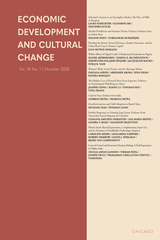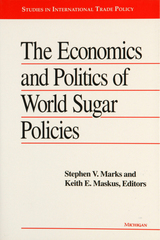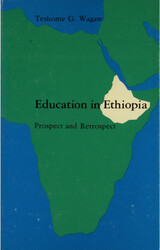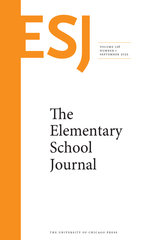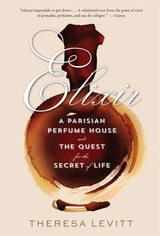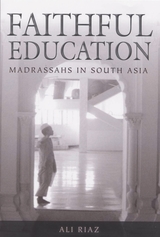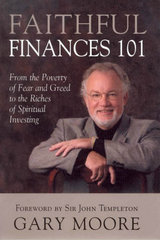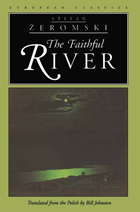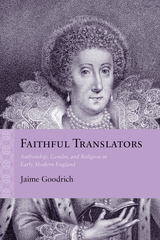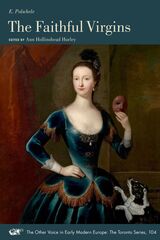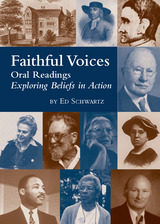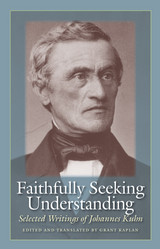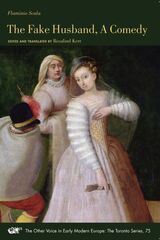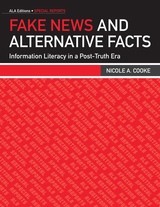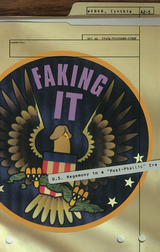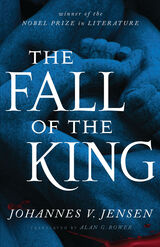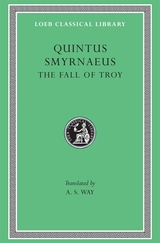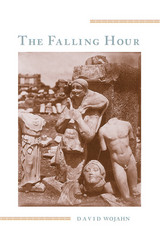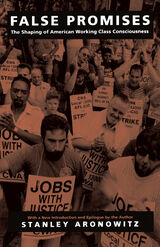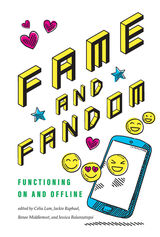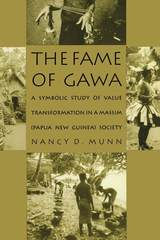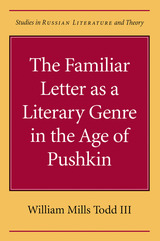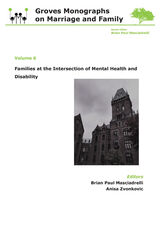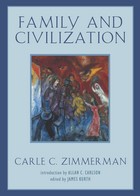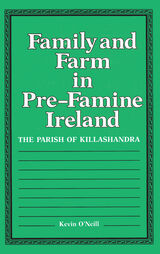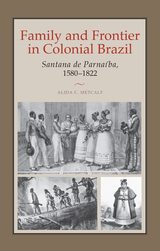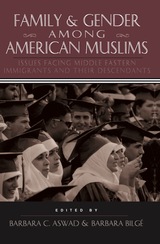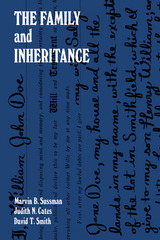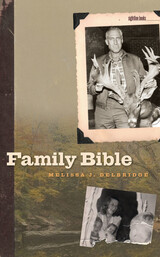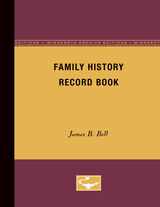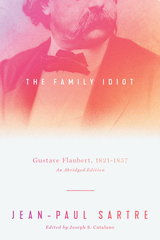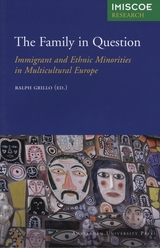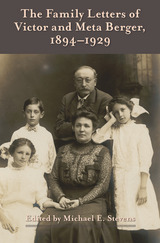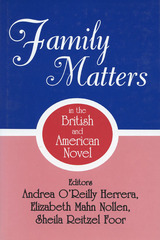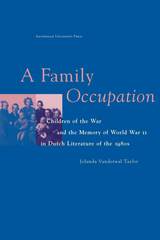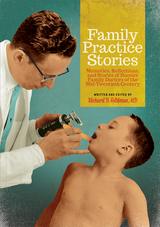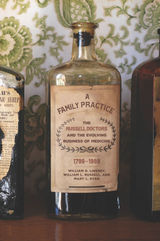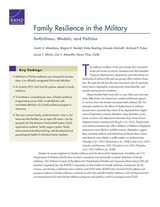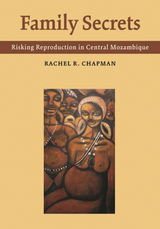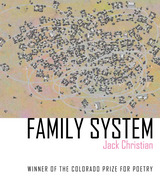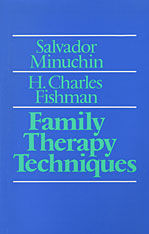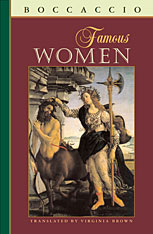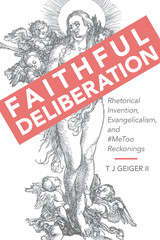 Faithful Deliberation: Rhetorical Invention, Evangelicalism, and #MeToo Reckonings
T J Geiger II
University of Alabama Press, 2022 Investigates the rhetorical practices used by contemporary evangelical Christian women to confront theological and cultural issues that stymie deliberation within their communities
While often perceived as an insular enclave with a high level of in-group agreement about political and social issues, predominantly white evangelicalism includes prominent voices urging deliberation about appropriate responses to sexual abuse, domestic violence, and the discourses surrounding these traumas. In Faithful Deliberation: Rhetorical Invention, Evangelicalism, and #MeToo Reckonings, T J Geiger II examines theologically reflective rhetorical invention that reconfigures trauma-minimizing commonplaces in order to facilitate community-internal deliberation.
Resting at the intersection of feminist rhetorical studies and religious rhetorics, this book contains four related theological-rhetorical case studies that consider how figures such as Beth Moore, Jen Hatmaker, Rachael Denhollander, Karen Swallow Prior, and others engaged in rhetorical invention. Each juxtaposes differing approaches to contending with rape, domestic violence, sexual abuse, and other traumas. Each case contrasts an approach based on appeals to highly circumscribed understandings of grace, purity, and other denomination-specific traditions and values with approaches rooted in those same traditions and values, but with an eye toward community transformation, healing through justice, and reinvigorated forms of forgiveness. Geiger skillfully argues that this faithful deliberation involves practices of thinking, reflecting, storytelling, and acting within a tightly bounded community that can foster change through a recommitment to core values.
These rhetorical practices exemplify the kind of inventive listening deliberative discourse requires, point to the sort of healing they may promote in response to trauma and trauma discourses, and occur within a range of genres including social media posts, blog entries, published interviews, victim impact statements, and petitions. This study of invention for evangelical-to-other-evangelical deliberative discourse contributes to rhetorical studies by demonstrating the civic and social possibilities of rhetoric within religious enclaves. By locating the case studies as recent moments in longer US public and evangelical histories of activism, deliberative practice, and politics, Faithful Deliberation brings into focus how enclaves and the dominant public sphere interact.
Faithful Education: Madrassahs in South Asia
Riaz, Ali
Rutgers University Press, 2008 In the wake of the terrorist attacks on September 11, 2011, discussions on ties between Islamic religious education institutions, namely madrassahs, and transnational terrorist groups have featured prominently in the Western media. In the frenzied coverage of events, however, vital questions have been overlooked: What do we know about the madrassahs? Should Western policymakers be alarmed by the recent increase in the number of these institutions in Muslim countries? Is there any connection between them and the "global jihad"?
Ali Riaz responds to these questions through an in-depth examination of the madraassahs in Pakistan, Bangladesh, and India. In Faithful Education, he examines these institutions and their roles in relation to current international politics.
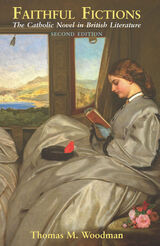 Faithful Fictions: The Catholic Novel in British Literature
Thomas M. Woodman
Catholic University of America Press, 2022 Catholic writers have made a rich contribution to British fiction, despite their minority status. Evelyn Waugh, Graham Greene, and Muriel Spark are well-known examples, but there are many other significant novelists whose work has a Catholic aspect. This is the first book to survey the whole range of this material and examine whether valid generalizations can be made about it. In charting such fiction from its development in the Victorian period through to the work of contemporaries such as David Lodge, the author analyses its complex relationships with changes in British society and the international Church. There is more than one way of being a Catholic, as Woodman shows, but he also demosntrates that many of these writers share common themes and a distinctive perspective. They often wish in particular to use their religion as a weapon against what they portray as a complacent Protestant or secular society. Their consciousness of writing in the midst of such a society gives a special edge to their treatments of the perennial Catholic themes of suffering, sin and sex. It also has implications for literary form and relates to what has been seen as the extremist mode of Catholic fiction. The final question that Woodman puts is whether the changes in the Church since the Second Vatican Council must inevitably lead to the loss of this distinctive Catholic contribution to the novel.
Faithful Finances 101: From the Poverty of Fear and Greed to the Riches of Spiritual Investing
Gary Moore
Templeton Press, 2005 Faithful Finances 101 is a first-person narrative by an outspoken advocate of faith-based investing. A senior vice president of investments at Paine Webber before founding his own investment firm as "counsel to ethical and spiritual investors," Gary Moore warns that much of the economic advice emanating from some popular and influential evangelical authors and speakers is based on scare tactics and distortions of what the Bible has to say about finances. He draws on fifty years of studying the Bible, politics, and economics and presents insights for those who want to be faithful in their finances—to use 100 percent of the time, talent, and treasure with which they have been entrusted for the glory of God as well as for the benefit of others and themselves, and not just give 10 percent of their incomes to the church.
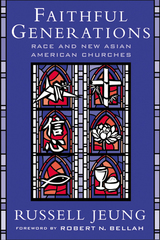 Faithful Generations: Race and New Asian American Churches
Jeung, Russell
Rutgers University Press, 2004 Religion—both personal faith and institutional tradition—plays a central role in the lives of the 12.5 million Asians in the United States. It provides comfort and meaning, shapes ethical and political beliefs, and influences culture and arts. Faithful Generations details the significance of religion in the construction of Asian American identity. As an institutional base for the movement toward Asian American panethnicity, churches provide a space for theological and political reflection and ethnic reinvention.
With rich description and insightful interviews, Russell Jeung uncovers why and how Chinese and Japanese American Christians are building new, pan-Asian organizations. Detailed surveys of over fifty Chinese and Japanese American congregations in the San Francisco Bay area show how symbolic racial identities structure Asian American congregations. Evangelical ministers differ from mainline Christian ministers in their construction of Asian American identity. Mobilizing around these distinct identities, evangelicals and mainline Christians have developed unique pan-Asian styles of worship, ministries, and church activities. Portraits of two churches further illustrate how symbolic racial identities affect congregational life and ministries. The book concludes with a look at Asian American–led multiethnic churches.
This engaging study of the shifting relationship between religion and ethnicity is an ideal text for classes in ethnicity, religion, and Asian American studies.
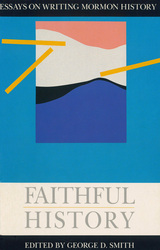 Faithful History: Essays on Writing Mormon History
George D. Smith
Signature Books, 1992 In this compilation, editor George D. Smith has assembled sixteen thought-provoking essays which represent this ongoing discussion. They include “On Being a Mormon Historian” by D. Michael Quinn, “Two Integrities: An Address to the Crisis in Mormon Historiography” by Martin E. Marty, “Objectivity and History” by Kent E. Robson, “The Acids of Modernity and the Crisis in Mormon Historiography” by Louis Midgley, and “Historicity of the Canon” by Edward H. Ashment.
“History, myth, and legend are not always distinguishable,” cautions Smith,” “but there are some things we can know. The authors of these essays attempt to define the boundaries between objectivity and the biases of belief and unbelief which may color what is written about the past.”
Over the past decade Mormons have debated how their history should be written. New Mormon Historians believe that balanced, unprejudiced approaches produce the most reliable history. Traditionalists contend that no historian can be completely objective, that Mormon history should therefore be written with the “pre-understanding” that Joseph Smith restored the ancient Christian church.
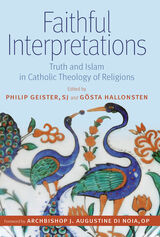 Faithful Interpretations: Truth and Islam in Catholic Theology of Religions
Philip Geister
Catholic University of America Press, 2021 ”Theology of Religions” is among the most burning issues within Christian theology today. The challenge to study and discuss different ways of handling conflicting truth claims and religious narratives between religions is taken up by a growing number of theologians across denominational boundaries. This is a common and ecumenical effort undertaken by Christian theologians all over the world. And yet, the impact of specific ecclesiastical or theological traditions on different concepts of theology of religions should not be underestimated. As well known, the Second Vatican council with its pivotal decree Nostra Aetate (On the relation to other religions) not only set the agenda for Catholic theology, but even influenced the wider discussion on the topic. The papers of this volume were all given at a conference in Uppsala, Sweden in October 2017. The structure of Faithful Interpretations follows closely the way the conference was conducted.
A general introduction to the development and present status of ”Theology of Religions” by Marianne Moyaert opens the book. Archbishop J Augustine Di Noia of the Vatican Congregation for the Doctrine of Faith then treats the recent developments in the teaching of the Magisterium regarding theology of religions. Anna Bonta Moreland adresses the issue of Muhammad and Christian Prophecy. Diego R Sarrió Cucarella focuses on early Christian theological views of Islam and concludes that Islam has been from the begining a ”disturbing” factor in the Christian view of salvation history. Wilhelmus G B M Valkenberg discusses the impact of Nostra Aetate on the Church’s relation to Muslims, using especially the precedent of Nicolaus of Cues as regards a constructive approach to Islam. Klaus von Stosch adresses a sensitive issue in Muslim-Christian relations and illustrates the advantages of the comparative theology approach for the theology of religions.
Complementing this perspective, Peter Jonkers offers a hermeneutical perspective on truth claims, and reflects on ”the religious Other” with references to Jacques Derrida among others. Reinhold Bernhardt argues in favour of a biblically grounded “relational-existential” theory of truth, which would be most helpful with regard to other religions. To conclude, the prominent Catholic specialist on Theology of Religions, Gavin D’Costa, widened the perspective by addressing the relation to Judaism from the point of view of the covenant and the promises of the land. Altogether, the papers of this volume give a clear impression of the status of Roman Catholic Theology of Religions.
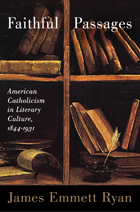 Faithful Passages: American Catholicism in Literary Culture, 1844–1931
James Emmett Ryan
University of Wisconsin Press, 2013 Roman Catholic writers in colonial America played only a minority role in debates about religion, politics, morality, national identity, and literary culture. However, the commercial print revolution of the nineteenth century, combined with the arrival of many European Catholic immigrants, provided a vibrant evangelical nexus in which Roman Catholic print discourse would thrive among a tightly knit circle of American writers and readers. James Emmett Ryan’s pathbreaking study follows the careers of important nineteenth-century religionists including Orestes Brownson, Isaac Hecker, Anna Hanson Dorsey, and Cardinal James Gibbons, tracing the distinctive literature that they created during the years that non-Catholic writers like Herman Melville and Emily Dickinson were producing iconic works of American literature.
Faithful Passages also reveals new dimensions in American religious literary culture by moving beyond the antebellum period to consider how the first important cohort of Catholic writers shaped their message for subsequent generations of readers in the late nineteenth and early twentieth centuries. Perhaps most strikingly, Ryan shows that by the early twentieth century, Roman Catholic themes and traditions in American literature would be advanced in complex ways by mainstream, non-Catholic modernist writers like Kate Chopin and Willa Cather.
Catholic literary culture in the United States took shape in a myriad of ways and at the hands of diverse participants. The process by which Roman Catholic ideas, themes, and moralities were shared and adapted by writers with highly differentiated beliefs, Ryan contends, illuminates a surprising fluidity of religious commitment and expression in early U.S. literary culture.
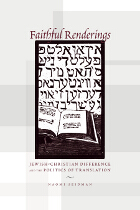 Faithful Renderings: Jewish-Christian Difference and the Politics of Translation
Naomi Seidman
University of Chicago Press, 2006 Faithful Renderings reads translation history through the lens of Jewish–Christian difference and, conversely, views Jewish–Christian difference as an effect of translation. Subjecting translation to a theological-political analysis, Seidman asks how the charged Jewish–Christian relationship—and more particularly the dependence of Christianity on the texts and translations of a rival religion—has haunted the theory and practice of translation in the West.
Bringing together central issues in translation studies with episodes in Jewish–Christian history, Naomi Seidman considers a range of texts, from the Bible to Elie Wiesel’s Night, delving into such controversies as the accuracy of various Bible translations, the medieval use of converts from Judaism to Christianity as translators, the censorship of anti-Christian references in Jewish texts, and the translation of Holocaust testimony. Faithful Renderings ultimately reveals that translation is not a marginal phenomenon but rather a crucial issue for understanding the relations between Jews and Christians and indeed the development of each religious community.
The Faithful River
Stefan Zeromski
Northwestern University Press, 1999 Originally published in 1912, this lyrical novel is set in a manor house in central Poland during the January Uprising of 1863 to 1864, when a volunteer Polish army futilely fought the Russian occupation. A wounded soldier appears outside the house and is cared for by Salomea, the young ward of the absent owners, who has been left in the manor with an aged servant. As the two strive to conceal the soldier's presence during brutal and invasive visits by the Russians, Salomea finds herself falling in love with her patient.
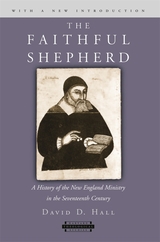 The Faithful Shepherd: A History of the New England Ministry in the Seventeenth Century, With a New Introduction
David D. Hall
Harvard University Press, 2006 This description of the Americanization of a European institution, the Puritan ministry as it was transported to the New England colonies in the seventeenth century, offers a host of new insights into American religious history. By focusing on such areas as the ministers’ authority, church membership, and ecclesiastical organization, David D. Hall shows that, although the effects of the American experience might be considered liberalizing or democratizing in the first years of settlement, during the entire course of the seventeenth century the New World environment produced an institutional development that returned the churches to forms and doctrines that existed before the emigration from Europe.
The Faithful Shepherd not only sustains a bold thesis about Americanization but also affords the reader one of the freshest and most comprehensive histories of the seventeenth-century New England mind and society. This new printing contains a new introduction reflecting on how our understanding of seventeenth-century New England has developed since the book was first published.
 Faithful to Our Tasks: Arkansas's Women and the Great War
Elizabeth Griffin Hill
Butler Center for Arkansas Studies, 2017 The United States was a vital, if brief, participant in World War I—spending only eighteen months fighting in “the Great War.” But that short span marked an era of tremendous change for women as they moved out of the Victorian nineteenth century and came into their own as social activists during the early years of the twentieth century. Faithful to Our Tasks provides the context for women’s actions and reactions during the war. It incorporates the mitigating factors and experiences of American women in general and compares Arkansas women’s Progressive Era actions with those of other southern women. The contextual underpinnings provide a rich tapestry as we attempt to understand our grandmothers and great-grandmothers’ responses to wartime needs. Primary records of the World War I era, accessed in archives in central Arkansas, reveal that the state’s organized women were suddenly faced with a devastating world war for which they were expected to make a significant contribution of time and effort. “Club women” were already tackling myriad problems to be found in abundance within a poor, rural state as they worked for better schools, a centralized education system, children’s well-being, and improved medical care. Under wartime conditions, their contributions were magnified as the women followed a barrage of directions from Washington, DC, within a disconcerting display of micromanagement by the federal government. The important takeaway, however, is that the Great War created a scenario in which Arkansas’s organized women—as well as women throughout the nation—would step forward and excel as men and governments stood up and took notice. After the war, these same organized women won the right to vote.
 Faithful Transformations: Islamic Self-Help in Contemporary Singapore
Nurhaizatul Jamil
University of Illinois Press, 2025 Malay Muslim women in Singapore cultivate piety by attending popular Islamic self-help classes. Nurhaizatul Jamil’s ethnographic study offers an interdisciplinary analysis of this phenomenon. The Islamic self-help classes in this book exist at the nexus of sacred texts, aphorisms, and social media engagements, scaffolded by the neoliberal economy that shapes idealized Muslim subjectivities. Within a context whereby the Singapore state discursively frames Malayness in terms of cultural deficiency, Malay Muslim women’s inward focus on transformative ethics rather than societal change underscores the appeal of gendered pious self-help discourses. At the same time, Jamil’s referencing of Black, Indigenous, and Ethnic studies offers a compelling analytical frame that places affective transformation within the context of racial capitalism, historical trauma, and embodied healing. A provocative and rich ethnography, Faithful Transformations tells the stories of Malay Muslim women desiring piety and self-improvement as minoritized subjects in contemporary Singapore while exploring the limitations of self-care.
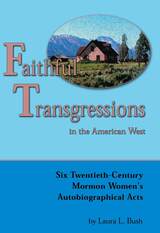 Faithful Transgressions In The American West: Six Twentieth-Century Mormon Women's Autobiographical Acts
Laura L. Bush
Utah State University Press, 2004 The central issue Bush finds in these works is how their authors have dealt with the authority of Mormon Church leaders. As she puts it in her preface, "I use the phrase 'faithful transgression' to describe moments in the texts when each writer, explicitly or implicitly, commits herself in writing to trust her own ideas and authority over official religious authority while also conceiving of and depicting herself to be a 'faithful' member of the Church." Bush recognizes her book as her own act of faithful transgression. Writing it involved wrestling, she states, "with my own deeply ingrained religious beliefs and my equally compelling education in feminist theories that mean to liberate and empower women." Faithful Transgressions examines a remarkable group of authors and their highly readable and entertaining books. In producing the first significant book-length study of Mormon women's autobiographical writing, Bush rides a wave of memoir publishing and academic interest in autobiography and other life narratives. As she elucidates these works in relation to the religious tradition that played a major role in shaping them, she not only positions them in relation to feminist theory and current work on women's life writings but ties them to the long literary tradition of spiritual autobiography.
Faithful Translators: Authorship, Gender, and Religion in Early Modern England
Jaime Goodrich
Northwestern University Press, 2014 With Faithful Translators, Jaime Goodrich offers the first in-depth examination of women’s devotional translations and of religious translations in general within early modern England. Placing female translators such as Queen Elizabeth I and Mary Sidney Herbert, Countess of Pembroke, alongside their male counterparts, such as Sir Thomas More and Sir Philip Sidney, Goodrich argues that both male and female translators constructed authorial poses that allowed their works to serve four distinct cultural functions: creating privacy, spreading propaganda, providing counsel, and representing religious groups. Ultimately, Faithful Translators calls for a reconsideration of the apparent simplicity of "faithful" translations and aims to reconfigure perceptions of early modern authorship, translation, and women writers.
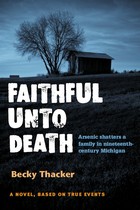 Faithful Unto Death
Becky Thacker
University of Michigan Press, 2011 Benzonia, Michigan, 1894: a sleepy Congregationalist community, dedicated to the education of hardworking and virtuous young people of both sexes and all races. Anna Spencer Thacker is the daughter of missionaries, a faithful wife, and mother of five, pious to a fault. She is suddenly stricken with a mysterious ailment that soon proves fatal. Was it truly an unfortunate illness? Or was it murder—or suicide? Taking a true story of a murder in her own family, Becky Thacker has crafted a historical mystery novel whose cast of characters rapidly builds, including William Henry Thacker as deputy sheriff, deacon in his church, a kind man . . . but perhaps just a trifle too fond of the attractive young housekeeper; and Charlotte Spencer, the pretty missionary sister, almost saintly in her efforts to bring Jesus to the Armenians in the mountains of Turkey, though a bit prone to exaggeration. She could be a suspect—or the next target. The children are Roy, 19: musical, a good student, but a little too wild for Benzonia; Ralph, 17: trying to shoulder the responsibilities of farm and family; and Lottie, 14: a talented young artist trying to take care of young Will and Josie. Faithful Unto Death provides a window into the daily lives of small-town Michiganders at the turn of the century wrapped up in a riveting whodunit. Cover image by Hemera/Thinkstock
The Faithful Virgins
E. Polwhele
Iter Press, 2023 The first-ever print edition of a play by one of the first women playwrights in England.
E. Polwhele (c. 1651-c. 1691) was one of the first women to write for the stage in Restoration London. This book presents the first printed edition of Polwhele’s first play, The Faithful Virgins, which until now has existed only in an unsigned manuscript in the Bodleian Library at Oxford University. A tragicomedy apparently performed in London by the Duke's Company ca. 1669–1671, The Faithful Virgins is altogether different in tone from Polwhele's later, better-known prose comedy, The Frolicks; or, The Lawyer Cheated (1671). The introduction to this modern-spelling edition of The Faithful Virgins discusses the play in terms of radical changes in English stage practices following the restoration of the monarchy after England’s civil war and situates Polwhele’s play within the social and political life of seventeenth-century London.
Faithfully Seeking Understanding: Selected Writings of Johannes Kuhn
Johannes Kuhn
Catholic University of America Press, 2009 Faithfully Seeking Understanding provides a first-hand opportunity for English-speaking readers to encounter the thought of Johannes Kuhn (1806-1887), widely considered the greatest speculative theologian of the renowned Catholic Tübingen School.
 Fake: Anthropological Keywords
Edited by Jacob Copeman and Giovanni da Col
HAU, 2019 Fakes, forgery, counterfeits, hoaxes, frauds, knock-offs—such terms speak, ostensibly, to the inverse of truth or the obverse of authenticity and sincerity. Do all cultures equally spend an incredible amount of energy and labor on detecting differences between the phony and the genuine? What does the modern human obsession with fabrications and frauds tell us about ourselves? And what can anthropology tell us about this obsession?
This timely book is the product of the first Annual Debate of Anthropological Keywords, a collaborative project between HAU, the American Ethnological Society, and L’Homme, held each year at the American Anthropological Association meetings. The aim of the debate is to reflect critically on keywords and terms that play a pivotal and timely role in discussions of different cultures and societies, and of the relations between them. This volume brings together leading thinkers to interrogate the concept of fake cross-culturally, including insightful contributions by Giovanni da Col, Gabriella Coleman, Veena Das, John Jackson Jr., Graham Jones, Carlo Severi, Alexei Yurchak, and Jacob Copeman.
All HAU Books are OPEN ACCESS, through Knowledge Unlatched, and are available on the HAU Books website: Haubooks.org.
 Fake Gods and False History: Being Indian in a Contested Mumbai Neighbourhood
Jonathan Galton
University College London, 2023 A narrative of a central Mumbai neighborhood’s divided community.
In an age where history is a global battleground and fake news proliferates, culture wars are being waged across India over its future—majoritarian or inclusive, neoliberal or socialist, religious or secular?
Fake Gods and False History takes us to the BDD Chawls, a central Mumbai neighborhood of tenement blocks (chawls) on the brink of a controversial redevelopment. It reveals how contested narratives of Indian history play out in the daily life of this divided neighborhood and how the legacies of certain godlike but very human historical figures, such as Dr. Babasaheb Ambedkar and Chhatrapati Shivaji, are invoked by different communities. Jonathan Galton draws on research conducted among the formerly untouchable Dalit Buddhist community, who are staunchly opposed to the redevelopment plans and deeply critical of the religious nationalism they perceive in their Hindu neighbors. We also meet young male migrants living in village-linked dormitory rooms called Gramastha Mandals, trapped in a liminal space between urban and rural.
Throughout the book, which is woven through with candid reflections on methodology and research ethics, readers are challenged to draw connections with their own experiences of history impinging on their lives. A story that might initially seem parochial will thus resonate with a diverse global audience.
The Fake Husband, A Comedy
Flaminio Scala
Iter Press, 2020 Scala’s The Fake Husband offers readers and performers an accessible English script which captures the comic brilliance of the commedia dell’arte. Expanded from an earlier scenario, Il marito (The Husband), the play presents characters originally created by members of the Gelosi troupe, in particular the stars Isabella Andreini and Sylvia Roncagli. Scala’s ability to capture the individual artistry of these women makes this script especially exciting and shows his appreciation of the towering contribution made by the female performers who joined the troupes in the 1560s. Also included is a comprehensive study of Scala’s place in the theatrical world and beyond.
The Other Voice in Early Modern Europe - The Toronto Series, volume 75
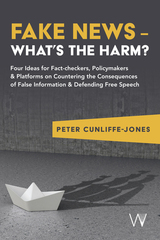 Fake News – What’s the harm?: Four ideas for fact-checkers, policymakers & platforms on countering the consequences of false information & defending free speech
Peter Cunliffe-Jones
University of Westminster Press, 2025 Former news reporter and founder of Africa’s first fact-checking organisation Peter Cunliffe-Jones argues that since concern about ‘information disorder’ soared in 2016, we have laboured under flawed assumptions about the nature and effects of ‘fake news’ and misinformation. Based on a four-year review of 250 case studies, Cunliffe-Jones sets out four ideas for fact-checkers, policymakers and platforms to curb harmful consequences and protect wider freedom of speech. First, information disorder is about more than misinformation. Second, misinformation in offline settings can cause as big a problem as misinformation online. Third, misinformation that affects policymakers can be as bad as misinformation that affects the public. Fourth, he proposes a model for fact-checkers, researchers and platforms to distinguish false claims that do and do not have substantive potential to cause substantive consequences.
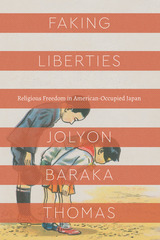 Faking Liberties: Religious Freedom in American-Occupied Japan
Jolyon Baraka Thomas
University of Chicago Press, 2019 Religious freedom is a founding tenet of the United States, and it has frequently been used to justify policies towards other nations. Such was the case in 1945 when Americans occupied Japan following World War II. Though the Japanese constitution had guaranteed freedom of religion since 1889, the United States declared that protection faulty, and when the occupation ended in 1952, they claimed to have successfully replaced it with “real” religious freedom.
Through a fresh analysis of pre-war Japanese law, Jolyon Baraka Thomas demonstrates that the occupiers’ triumphant narrative obscured salient Japanese political debates about religious freedom. Indeed, Thomas reveals that American occupiers also vehemently disagreed about the topic. By reconstructing these vibrant debates, Faking Liberties unsettles any notion of American authorship and imposition of religious freedom. Instead, Thomas shows that, during the Occupation, a dialogue about freedom of religion ensued that constructed a new global set of political norms that continue to form policies today.
Falaquera’s Epistle of the Debate: An Introduction to Jewish Philosophy
Steven Harvey
Harvard University Press, 1987 Shem-Tov Falaquera (c. 1225–1295) was a student of the writings of Maimonides and a leading expositor of the medieval Islamic and Jewish philosophical traditions. His Epistle of the Debate (Iggeret ha-Vikkuah) is a delightful dialogue between two Jews, one learned in philosophy and the other not, about the permissibility and desirability of philosophical investigation by Jews.
It is perhaps the most important medieval text devoted to the theme of the relationship between reason and religion by a Jewish thinker, and it is an excellent introduction to Jewish philosophy. This volume contains the first critical edition of the Hebrew text of the Epistle of the Debate and an annotated English translation, the first into a modern language. The volume also includes essays on the sources of the Epistle and on Falaquera's position on the relation between reason and religion.
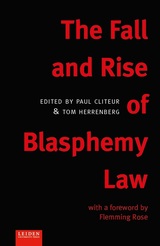 The Fall and Rise of Blasphemy Law
Edited by Paul Cliteur and Tom Herrenberg
Leiden University Press, 2017 "This collection centers around two trends that currently influence freedom of expression. The first trend confirms the fact that many Western countries have become, over a long period of time, less strict about sacrilegious expression. In the process, many repealed their blasphemy laws or became less harsh in their punishment of blasphemy, hence “the fall of blasphemy law”. The second trend manifests an opposite movement, hence “the rise of blasphemy law”. Over the last decades, namely, Western societies have witnessed multiple attempts to suppress speech that defames religion. To be sure, one particularly vicious way of re-energizing these interdicts against blasphemy has come from radical believers intent upon removing blasphemy from the public domain by violent means. With contributions by scholars from a wide range of disciplines, this volume seeks to offer an examination of topical issues relating to freedom of expression, censorship, and blasphemy in contemporary multicultural democracies. Foreword by Flemming Rose."
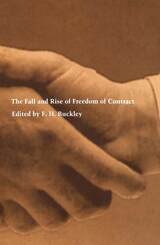 The Fall and Rise of Freedom of Contract
F. H. Buckley, ed.
Duke University Press, 1999 Declared dead some twenty-five years ago, the idea of freedom of contract has enjoyed a remarkable intellectual revival. In The Fall and Rise of Freedom of Contract leading scholars in the fields of contract law and law-and-economics analyze the new interest in bargaining freedom. The 1970s was a decade of regulatory triumphalism in North America, marked by a surge in consumer, securities, and environmental regulation. Legal scholars predicted the “death of contract” and its replacement by regulation and reliance-based theories of liability. Instead, we have witnessed the reemergence of free bargaining norms. This revival can be attributed to the rise of law-and-economics, which laid bare the intellectual failure of anticontractarian theories. Scholars in this school note that consumers are not as helpless as they have been made out to be, and that intrusive legal rules meant ostensibly to help them often leave them worse off. Contract law principles have also been very robust in areas far afield from traditional contract law, and the essays in this volume consider how free bargaining rights might reasonably be extended in tort, property, land-use planning, bankruptcy, and divorce and family law. This book will be of particular interest to legal scholars and specialists in contract law. Economics and public policy planners will also be challenged by its novel arguments. Contributors. Gregory S. Alexander, Margaret F. Brinig, F. H. Buckley, Robert Cooter, Steven J. Eagle, Robert C. Ellickson, Richard A. Epstein, William A. Fischel, Michael Klausner, Bruce H. Kobayashi, Geoffrey P. Miller, Timothy J. Muris, Robert H. Nelson, Eric A. Posner, Robert K. Rasmussen, Larry E. Ribstein, Roberta Romano, Paul H. Rubin, Alan Schwartz, Elizabeth S. Scott, Robert E. Scott, Michael J. Trebilcock
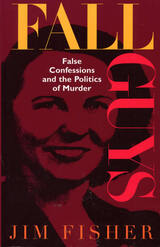 Fall Guys: False Confessions and the Politics of Murder
Jim Fisher
Southern Illinois University Press, 1996
Jim Fisher, criminal justice professor and former FBI agent, reveals how he uncovered the framing of two boys in a pair of unrelated murders committed in 1956 and 1958.
In the first of the cases, eleven-year-old Charlie Zubryd confessed that at the age of eight, he had murdered his widowed mother by driving a hatchet into her skull. The crime was committed in the basement of the modest Zubryd home in a rural section of Sewickley Township in western Pennsylvania, an area not far from Pittsburgh. Following intense police questioning, young Zubryd confessed to the crime in March 1959, a full twenty-eight months after the bloody murder of his mother.
Too young to prosecute, Charlie Zubryd was adopted after his confession and a brief stay in a mental ward. A childless couple gave Zubryd a new name and identity. It would be twenty years before Charlie Zubryd—now going by the name Chuck Duffy—would have any contact with his biological family.
When Zubryd/Duffy made an effort to get his real family back, he was rejected because his relatives still believed he had murdered his mother. In fact, until Fisher began to investigate the case in 1989, Chuck Duffy himself was not sure he had not killed his mother during some kind of mental blackout.
The second murder occurred in 1958, two years after the Zubryd case. Thirteen-year-old Jerry Pacek endured forty-one hours of police grilling before he confessed to raping and killing fifty-year-old Lillian Steveck as she walked home one evening from a bus stop in Breckenridge, Pennsylvania. Pacek told the same Allegheny County homicide detective who had framed Charlie Zubryd that he had killed the woman with a variety of blunt objects, none of which were ever found. The thirteen-year-old boy was tried and convicted of the murder the following spring. He was sent to Camp Hill Prison, where he remained incarcerated for ten years.
Fisher’s investigation cleared the names of both the wrongfully accused boys. Because of his investigation, the Zubryd case was reopened, which led to the identification of a vicious killer. In 1991, Fisher’s investigative efforts convinced the governor of Pennsylvania to grant a full pardon to Jerry Pacek, who as a teenager had served ten years in an adult prison for a murder he had not committed.
Jim Fisher and the Zubryd and Pacek stories have been featured on a number of nationally broadcast television programs.
 The Fall of Camelot: A Study of Tennyson's Idylls of the King
John D. Rosenberg
Harvard University Press, 1973 The Idylls of the King is one of the indisputably great long poems in the English language. Yet Tennyson's doom-laden prophecy of the fall of the West has been dismissed as a Victorian-Gothic fairy tale. John D. Rosenberg maintains that no poem of comparable magnitude has been so misread or so maligned in the twentieth century as Tennyson's symbolist masterpiece.
In The Fall of Camelot the author calls into question the modernist orthodoxy that rejects all of Victorian poetry as a Waste Land and ignores the overriding importance of Tennyson to the development of Yeats, T. S. Eliot,and the symbolists. Far from being an escapist medieval charade, the Idylls offers an apocalyptic prevision of the nightmare of modern history. Concealed under the exquisitely romantic surface of the verse is a world of obsessive sensuality and collapsing values that culminates in the "last dim weird battle the West." Perhaps the subtlest anatomy of the failure of ideality in our literature, the Idylls is not only about hazards of mistaking illusion for reality; it dramatically enacts those dangers, ensnaring the reader in the same delusions that maim and destroy the characters.
Rosenberg shows that Tennyson has created a new genre whose true originality criticism has yet to perceive. By employing landscape as a symbolic extension of character, Tennyson obliterates the gap between self and scene and frees himself from bondage toconventional narration.
Throughout the Idylls charactercannot be extricated from setting orsymbol, and neither has substanceapart from the narrative in which it isenmeshed. In essence, the narrativeis a sequence of symbols protracted intime, the symbolism a kind ofcondensed narration.
"Timescape" in the Idylls, like landscape, serves to bind all eventsof the poem into a continuous present.Arthur is at once a Christ figure andSun-King whose career parallels that ofhis kingdom, waxing and waningwith the annual cycle. At the heart ofArthur's story lies the dual cycle of hispassing and promised return.Incorporating this cycle into itsstructure, the Idylls is itself a kind ofliterary second coming of Arthur, aresurrection in Victorian England of thelong sequence of Arthuriads extendingback before Malory and forwardthrough Spenser, Dryden, Scott, andTennyson.
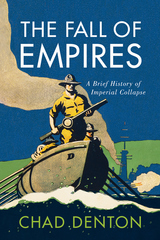 The Fall of Empires: A Brief History of Imperial Collapse
Chad Denton
Westholme Publishing, 2020 A Historical Survey of the Many Ways Empires have Succumbed to External and Internal Pressures
There are no self-proclaimed empires today. After the twentieth century, with its worldwide wave of decolonizing and liberation movements, the very word “empire” conjures images of slavery, war, repression, and colonialism. None of this is to say that empires are confined to the past, however. By at least some reasonable definitions, empires do exist today. Many articles and books speak about the decline of the “American Empire,” for example, or compare the history of the United States to that of Rome or the British Empire. Yet no public official would speak candidly of American “imperial” interests in the Middle East or use the word “empire” in discussions of the nation’s future the same way British politicians did in the twentieth century. In addition, empires don’t have to fit the classical Roman mold; there are many kinds of empire and varieties of international authority, such as cultural imperialism and economic imperialism. But it is clear empires do not last, even those that once harnessed great wealth, strong armies, and sophisticated legal systems.
InThe Fall of Empires: A Brief History of Imperial Collapse, historian Chad Denton describes the end of seventeen empires throughout world history, from Athens to Qin China, from the Byzantium to the Mughals. He reveals—through stories of conquest, corruption, incompetence, assassination, bigotry, and environmental crisis—how even the most seemingly eternal of empires declined. For Athens and Britain it was military hubris; for Qin China and Russia it was alienating their subjects through oppression; Persia succumbed with the loss of its capital; the Khmer faced ecological catastrophe; while the Aztecs were destroyed by colonial exploitation. None of these events alone explains why the empires fell, but they do provide a glimpse into the often-unpredictable currents of history, which have so far spared no empire. A fascinating and instructive survey, The Fall of Empiresprovides compelling evidence about the fate of centralized regional or global power.
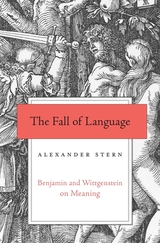 The Fall of Language: Benjamin and Wittgenstein on Meaning
Alexander Stern
Harvard University Press, 2019 In the most comprehensive account to date of Walter Benjamin’s philosophy of language, Alexander Stern explores the nature of meaning by putting Benjamin in dialogue with Wittgenstein.
Known largely for his essays on culture, aesthetics, and literature, Walter Benjamin also wrote on the philosophy of language. This early work is famously obscure and considered hopelessly mystical by some. But for Alexander Stern, it contains important insights and anticipates—in some respects surpasses—the later thought of a central figure in the philosophy of language, Ludwig Wittgenstein.
As described in The Fall of Language, Benjamin argues that “language as such” is not a means for communicating an extra-linguistic reality but an all-encompassing medium of expression in which everything shares. Borrowing from Johann Georg Hamann’s understanding of God’s creation as communication to humankind, Benjamin writes that all things express meanings, and that human language does not impose meaning on the objective world but translates meanings already extant in it. He describes the transformations that language as such undergoes while making its way into human language as the “fall of language.” This is a fall from “names”—language that responds mimetically to reality—to signs that designate reality arbitrarily.
While Benjamin’s approach initially seems alien to Wittgenstein’s, both reject a designative understanding of language; both are preoccupied with Russell’s paradox; and both try to treat what Wittgenstein calls “the bewitchment of our understanding by means of language.” Putting Wittgenstein’s work in dialogue with Benjamin’s sheds light on its historical provenance and on the turn in Wittgenstein’s thought. Although the two philosophies diverge in crucial ways, in their comparison Stern finds paths for understanding what language is and what it does.
The Fall of Stein
R. C. Raack
Harvard University Press Baron Friedrich vom Stein's leadership of the reform movement in Prussia has long been considered part of a critically important phase of early nineteenth-century German history. R. C. Raack describes in vivid detail the combination of forces and circumstances which brought about Stein's fall from power as chief minister of Frederick William III. Most of the major Prussian political figures of the period were deeply embroiled in the complex, and sometimes curious, series of events which culminated in the nomination of his successors, and Raack's incisive study provides an enlightening reappraisal of both the roles of the individuals concerned and the intricate domestic political situation.
The Fall of the King
Johannes V. Jensen
University of Minnesota Press, 2011 Taking place during the first half of the sixteenth century, The Fall of the King tells the story of dreamy, slacking student Mikkel Thøgersen and the entanglements that ultimately bring him into service as a mercenary under King Christian II of Denmark. Moving from the Danish countryside to Stockholm during the execution of Swedish nobility and finally to the imprisonment of Mikkel and Christian, the narrative is a lyrical encapsulation of “the fall”—the fall of country, history, individuals, and nature. Twice voted as the most important Danish novel of the twentieth century, The Fall of the King is both an epic depiction of real events and a complex psychological novel. Half pure narration, half prose poem, its scenes of brute realism mixed with rhapsodical passages make it a work of artistic genius.
 The Fall of the US Empire: Global Fault-Lines and the Shifting Imperial Order
Vassilis K. Fouskas and Bulent Gokay
Pluto Press, 2012 Whither the US empire? Despite Washington's military supremacy, its economic foundations have been weakening since the Vietnam war – accelerated by the great recession and credit-rating downgrade – and its global authority dented by the quagmires in Iraq and Afghanistan.
In this accessible, punchy text, Vassilis K. Fouskas and Bülent Gökay intervene in the debates that surround the US's status as an Empire. They survey the arguments amongst Marxist and critical scholars, from Immanuel Wallerstein and others who argue that the US is in decline, to those who maintain that it remains a robust superpower. By explaining how America's neo-imperial system of governance has been working since WWII, Fouskas and Gökay link the US's domestic and foreign vulnerabilities.
The Fall of the US Empire argues that the time has come to understand the US empire not by its power but by its systemic vulnerabilities of financialisation, resource depletion and environmental degradation. Its informed and accessible style will have wide appeal to students looking for an introduction to these issues.
The Fall of Troy
Quintus Smyrnaeus
Harvard University Press Quintus was a poet who lived at Smyrna some four hundred years after Christ. His work, in fourteen books, is a bold and generally underrated attempt in Homer's style to complete the story of Troy from the point at which the Iliad closes. Quintus tells us the stories of Penthesilea, the Amazonian queen; Memnon, leader of the Ethiopians; the death of Achilles; the contest for Achilles' arms between Ajax and Odysseus; the arrival of Philoctetes; and the making of the Wooden Horse. The poem ends with the departure of the Greeks and the great storm which by the wrath of heaven shattered their fleet.
 Fall or Fly: The Strangely Hopeful Story of Foster Care and Adoption in Appalachia
Wendy Welch
Ohio University Press, 2017 Chaos. Frustration. Compassion. Desperation. Hope. These are the five words that author Wendy Welch says best summarize the state of foster care in the coalfields of Appalachia. Her assessment is based on interviews with more than sixty social workers, parents, and children who have gone through “the system.” The riveting stories in Fall or Fly tell what foster care is like, from the inside out. In depictions of foster care and adoption, stories tend to cluster at the dark or light ends of the spectrum, rather than telling the day-to-day successes and failures of families working to create themselves. Who raises other people’s children? Why? What’s money got to do with it when the love on offer feels so real? And how does the particular setting of Appalachia—itself so frequently oversimplified or stereotyped—influence the way these questions play out? In Fall or Fly, Welch invites people bound by a code of silence to open up and to share their experiences. Less inspiration than a call to caring awareness, this pioneering work of storytelling journalism explores how love, compassion, money, and fear intermingle in what can only be described as a marketplace for our nation’s greatest asset.
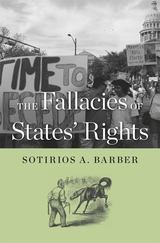 The Fallacies of States' Rights
Sotirios A. Barber
Harvard University Press, 2012 The idea that “states’ rights” restrain national power is riding high in American judicial and popular opinion. Here, Sotirios A. Barber shows how arguments for states’ rights, from the days of John C. Calhoun to the present, have offended common sense, logic, and bedrock constitutional principles.
To begin with, states’ rights federalism cannot possibly win the debate with national federalism owing to the very forum in which the requisite argument must occur—a national one, thanks to the Civil War—and the ordinary rules of practical argumentation. Further, the political consequences of this self-defeating logic can only hasten the loss of American sovereignty to international economic forces. Both philosophical and practical reasons compel us to consider two historical alternatives to states’ rights federalism. In the federalism of John Marshall, the nation’s most renowned jurist, the national government’s duty to ensure security, prosperity, and other legitimate national ends must take precedence over all conflicting exercises of state power. In “process” federalism, the Constitution protects the states by securing their roles in national policy making and other national decisions. Barber opts for Marshall’s federalism, but the contest is close, and his analysis takes the debate into new, fertile territory.
Affirming the fundamental importance of the Preamble, Barber advocates a conception of the Constitution as a charter of positive benefits for the nation. It is not, in his view, a contract among weak separate sovereigns whose primary function is to protect people from the central government, when there are greater dangers to confront.
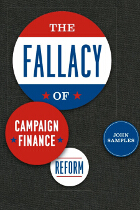 The Fallacy of Campaign Finance Reform
John Samples
University of Chicago Press, 2006 At first glance, campaign finance reform looks like a good idea. McCain-Feingold, for instance, regulates campaigns by prohibiting national political parties from accepting soft money contributions from corporations, labor unions, and wealthy individuals. But are such measures, or any of the numerous and similarly restrictive proposals that have circulated through Washington in recent years, really good for our democracy?
John Samples says no, and here he takes a penetrating look into the premises and consequences of the long crusade against big money in politics. How many Americans, he asks, know that there is little to no evidence that campaign contributions really influence members of Congress? Or that so-called negative political advertising actually improves the democratic process by increasing voter turnout and knowledge? Or that limits on campaign contributions make it harder to run for office, thereby protecting incumbent representatives from losing their seats of power?
Posing tough questions such as these, Samples uncovers numerous fallacies beneath proposals for campaign finance reform. He argues that our most common concerns about money in politics are misplaced because the ideals implicit in our notion of corruption are incoherent or indefensible. The chance to regulate money in politics allows representatives to serve their own interests at a cost to their constituents. And, ironically, this long crusade against the corruption caused by campaign contributions allows public officials to reduce their vulnerability by suppressing electoral competition.
Defying long-held ssumptions and conventional political wisdom, The Fallacy of Campaign Finance Reform is a provocative and decidedly nonpartisan work that will be essential for anyone concerned about the future of American government.
The Fallen Angel: Chastity, Class and Women's Reading, 1835–1880
Sally Mitchell
University of Wisconsin Press, 1981 This book discusses the figure of the unchaste woman in a wide range of fiction written between 1835 and 1880; serious novels by Dickens, Mrs. Gaskell, Meredith, and George Eliot; popular novels that provided light reading for middle-class women (including books by Dinah Craik, Rhoda Broughton, and Ouida); sensational fiction; propaganda for social reform; and stories in cheap periodicals such as the Family Herald and the London Journal, which reached a different and far wider audience than either serious or popular novels.
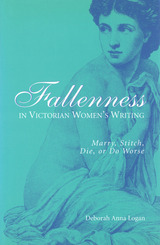 Fallenness in Victorian Women's Writing: Marry, Stitch, Die, Or Do Worse
Deborah Anna Logan
University of Missouri Press, 1998
The Angel-in-the-House is an ideal commonly used to define sexual standards of the Victorian Age. Although widely considered to be the cultural "norm," the Victorian Angel, revered for her morality, domestic virtue, and dedication to the family, is more frequently depicted in the literature of the time as an anomaly. In fact, a primary concern of Victorian literature appears to be the many exceptions to this unattainable ideal, which, according to the period's madonna-or-harlot polarity, casts these exceptions as fallen women. Deborah Anna Logan presents an unusual study of this image of fallenness in Victorian literature, focusing on the links among angelic ideology, sexuality, and, more important, social deviance.
Fallenness, according to Logan, does not refer simply to women who have sexually strayed from morality; besides prostitutes, the ranks of the fallen include unmarried mothers, needlewomen, alcoholics, the insane, the childless, the anorexic, slaves, and harem women. All of these women are presented as fallen because they fail to conform to sexual and social norms. In some cases, economic need was responsible for women's failure to uphold the ideals of domesticity and motherhood that were so revered in nineteenth- century society. But other examples illustrate the power of angelic ideology to construct deviancy even out of nonsexual behaviors.
Logan's study is distinguished by its exclusive focus on women writers, including Charlotte Brontë, George Eliot, Elizabeth Gaskell, Harriet Martineau, Elizabeth Barrett Browning, Florence Nightingale, Sarah Grand, and Mary Prince. Logan utilizes primary texts from these Victorian writers as well as contemporary critics such as Catherine Gallagher and Elaine Showalter to provide the background on social factors that contributed to the construction of fallen-woman discourse. Examining novels, short stories, poetry, and travel journals, Logan successfully demonstrates the rich links between these writers and their fallen characters--links in which, for women, even the act of writing becomes a type of fallenness.
Fallenness in Victorian Women's Writing is a significant and original contribution to the study of literature. Logan's thoroughly researched and attractively presented book will be of special interest to students of Victorian and women's studies, as well as to the general reader.
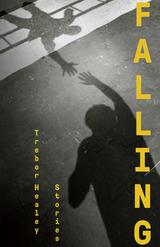 Falling
Trebor Healey
University of Wisconsin Press, 2019 In award-winning author Trebor Healey’s newest collection, Falling, characters lose their way, figuratively and literally, and confront the profound displacement of modern life. These are stories of hard-won redemption and transformation—a widower who finds meaning adopting refugee children, a painter who reconnects with his son after losing everything, a nun victimized and haunted by state terror, and a peripatetic gay man in utter despair and fatigue who finally bonds with his dying father. In Healey’s skilled hands, there is a flicker of hope in the hopeless, a way forward in the pathless wood, and a bridge—though rickety and swaying—across even the most harrowing chasm.
Together, these vignettes cover the dizzying breadth of human experience. From a contemporary reimagination of the life of Evita Perón with a gay man in the starring role to the story of an abandoned building full of ghosts in the center of Mexico City, this collection suggests other ways of seeing in a world overburdened by history.
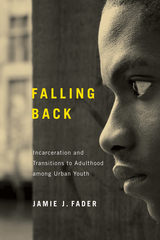 Falling Back: Incarceration and Transitions to Adulthood among Urban Youth
Fader, Jamie J
Rutgers University Press, 2013 Winner of the 2016 Michael J. Hindelang Award from the American Society of Criminology (ASC)
Winner of the 2016 Outstanding Book for the Academy of Criminal Justice Science (ACJS)
2014 Scholarly Contribution Award from the Children and Youth Section of the American Sociological Association
Received an Honorable Mention for the American Sociological Association Race, Gender and Class Section's 2014 Distinguished Book Award
Named a 2013 Choice Outstanding Academic Title
Jamie J. Fader documents the transition to adulthood for a particularly vulnerable population: young inner-city men of color who have, by the age of eighteen, already been imprisoned. How, she asks, do such precariously situated youth become adult men? What are the sources of change in their lives?
Falling Back is based on over three years of ethnographic research with black and Latino males on the cusp of adulthood and incarcerated at a rural reform school designed to address “criminal thinking errors” among juvenile drug offenders. Fader observed these young men as they transitioned back to their urban Philadelphia neighborhoods, resuming their daily lives and struggling to adopt adult masculine roles. This in-depth ethnographic approach allowed her to portray the complexities of human decision-making as these men strove to “fall back,” or avoid reoffending, and become productive adults. Her work makes a unique contribution to sociological understandings of the transitions to adulthood, urban social inequality, prisoner reentry, and desistance from offending.
Falling Brick Kills Local Man
Mark Kraushaar
University of Wisconsin Press, 2009 Falling Brick Kills Local Man is a daring and inventive collection of narrative poems rich with thoughtful and precise language. Mark Kraushaar writes about what moves him, whether that is the war in Iraq, the notion of synchronicity, the retelling of children’s stories, or a problem of recollection. Often inspired by newspaper stories or witnessed scenes, these poems are a refreshingly honest exploration of our interconnected and multifaceted world. Finalist, Poetry, Midwest Book Awards
The Falling Hour
David Wojahn
University of Pittsburgh Press, 1997 The Falling Hour is the fifth collection of poetry by David Wojahn, one of the most highly regarded poets of his generation. It is a fiercly elegiac and even apocalyptic book, culminating in a series of blistering elegies written after the sudden death of Wojahn’s wife, the poet Linda Hull. In these poems, the process of mourning and lamentation is examined in all of its intricacy, rage, and sorrowful ambivalence.
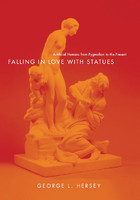 Falling in Love with Statues: Artificial Humans from Pygmalion to the Present
George L. Hersey
University of Chicago Press, 2009 If, as a child, you conducted conversations with beloved dolls, or if, as an adult, you have entered virtual worlds inhabited by digital humans who inspire devotion in real people, you have participated in one of humanity’s most potent yet least explored traditions. Falling in love (and out of love) with statues, George Hersey reveals here, has been an instrumental practice since antiquity in our efforts to understand, improve, and empower ourselves.
Hersey’s history of statue love begins in Cyprus, home of the legendary sculptor Pygmalion, who famously grew enamored of his own creation. Examining the island’s prehistoric images of Aphrodite—the love goddess who brought Pygmalion’s sculpture to life—Hersey traces the origins of statue love back to the Cypriot followers who adored her terra-cotta likenesses. He goes on to explore ideas about human replicas in the works of Empedocles, Aristotle, Lucretius, and Ovid, whose definitive account of the Pygmalion myth introduced the notion that statues have the potential to induce physical responses in their viewers. Finding avatars of Ovid’s living image in everything from pagan idols and early Christian statuary to eighteenth-century painting to modern action figures and marionettes, Hersey concludes by investigating the concern that these automata will eventually replace humans.
In the process, he narrates a powerful history of artificial life at a moment when—with the development of robot soldiers, ever more sophisticated genetic engineering, and a continually expanding digital universe—it seems more real than ever.
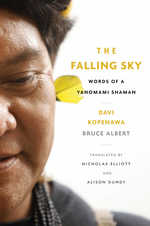 The Falling Sky: Words of a Yanomami Shaman
Davi Kopenawa and Bruce AlbertTranslated by Nicholas Elliott and Alison Dundy
Harvard University Press, 2013 The Falling Sky is a remarkable first-person account of the life story and cosmo-ecological thought of Davi Kopenawa, shaman and spokesman for the Yanomami of the Brazilian Amazon. Representing a people whose very existence is in jeopardy, Davi Kopenawa paints an unforgettable picture of Yanomami culture, past and present, in the heart of the rainforest--a world where ancient indigenous knowledge and shamanic traditions cope with the global geopolitics of an insatiable natural resources extraction industry.
In richly evocative language, Kopenawa recounts his initiation and experience as a shaman, as well as his first encounters with outsiders: government officials, missionaries, road workers, cattle ranchers, and gold prospectors. He vividly describes the ensuing cultural repression, environmental devastation, and deaths resulting from epidemics and violence. To counter these threats, Davi Kopenawa became a global ambassador for his endangered people. The Falling Sky follows him from his native village in the Northern Amazon to Brazilian cities and finally on transatlantic flights bound for European and American capitals. These travels constitute a shamanic critique of Western industrial society, whose endless material greed, mass violence, and ecological blindness contrast sharply with Yanomami cultural values.
Bruce Albert, a close friend since the 1970s, superbly captures Kopenawa's intense, poetic voice. This collaborative work provides a unique reading experience that is at the same time a coming-of-age story, a historical account, and a shamanic philosophy, but most of all an impassioned plea to respect native rights and preserve the Amazon rainforest.
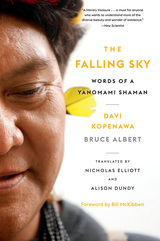 The Falling Sky: Words of a Yanomami Shaman
Davi Kopenawa and Bruce AlbertTranslated by Nicholas Elliott and Alison DundyForeword by Bill McKibben
Harvard University Press, 2023 The 10th anniversary edition
A Guardian Best Book about Deforestation
A New Scientist Best Book of the Year
A Taipei Times Best Book of the Year
“A perfectly grounded account of what it is like to live an indigenous life in communion with one’s personal spirits. We are losing worlds upon worlds.”
—Louise Erdrich, New York Times Book Review
“The Yanomami of the Amazon, like all the indigenous peoples of the Americas and Australia, have experienced the end of what was once their world. Yet they have survived and somehow succeeded in making sense of a wounded existence. They have a lot to teach us.”
—Amitav Ghosh, The Guardian
“A literary treasure…a must for anyone who wants to understand more of the diverse beauty and wonder of existence.”
—New Scientist
A now classic account of the life and thought of Davi Kopenawa, shaman and spokesman for the Yanomami, The Falling Sky paints an unforgettable picture of an indigenous culture living in harmony with the Amazon forest and its creatures, and its devastating encounter with the global mining industry. In richly evocative language, Kopenawa recounts his initiation as a shaman and first experience of outsiders: missionaries, cattle ranchers, government officials, and gold prospectors seeking to extract the riches of the Amazon.
A coming-of-age story entwined with a rare first-person articulation of shamanic philosophy, this impassioned plea to respect indigenous peoples’ rights is a powerful rebuke to the accelerating depredation of the Amazon and other natural treasures threatened by climate change and development.
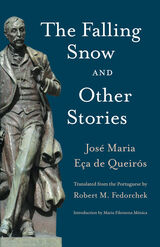 The Falling Snow and Other Stories
José Maria Eça de Queirós
Catholic University of America Press, 2022 The great nineteenth-century Portuguese author José Maria Eça de Queirós (1845-1900) has long been known for his novels, especially The Crime of Father Amaro (1880) and The Maias (1888). However, he also wrote short stories, and a number of them, having stood the test of time, are now regarded as masterpieces. Although there is no question that Eça owes the lion’s share of his reputation to his long fiction, the tales in this collection tell us that we are reading the work of a writer in full control of both genres.
The eleven selections range widely in theme and length and, except for “The Catastrophe”(which was published posthumously), are arranged in order of the year of publication. “The Falling Snow” and “Master Devil” contain elements of both the fantastic and realistic, a number of which call to mind Edgar Allan Poe, a writer whom Eça read and greatly admired. The power of love becomes the obsession of love in “The Peculiarities of a Blonde Girl” and “José Matias,” two of the stories that stand at the pinnacle of Eça’s reputation as a short story writer. “Civilization” will speak to nostalgia for a rustic life, while “Perfection” searches, through Ulysses and a special goddess, into a different kind of life, one without blemish. Other tales explore the nature of sacrifice (“The Wet Nurse”), greed and betrayal (“The Treasure”), jealousy and vengeance (“The Dead Man”), and faith in a young rabbi named Jesus (“The Gentle Miracle”). No one knows why Eça withheld publication of “The Catastrophe,” but this powerful story engages us with its naked intensity, its aroused passion, and its blunt honesty, for it amounts to a ringing endorsement of the exalted meaning of patriotism.
 The Fallingwater Cookbook: Elsie Henderson's Recipes and Memories
Suzanne Martinson
University of Pittsburgh Press, 2008 Hailed as the most architecturally significant private residence in the United States, Fallingwater was a welcome retreat for Edgar J. Kaufmann, his wife Liliane, their son, Edgar jr., and their many guests. The Fallingwater Cookbook captures the experience of fine and casual dining at this famed home. Suzanne Martinson, former food editor and writer for the Pittsburgh Press and the Pittsburgh Post-Gazette, relates recipes from Elsie Henderson, the longtime and last cook for the Kaufmann family at Fallingwater, along with Henderson's memories and anecdotes of life in the renowned house on the waterfall. Henderson's encounters with the Kaufmanns, John Heinz, Senator Ted Kennedy, and Frank Lloyd Wright, among others, are recounted with humor, affection, and surprising detail.
The book is rounded out with additional recipes from chef Robert Sendall, who began producing special events at Fallingwater in the early 1990s, Jane Citron, with whom Sendall taught cooking classes, and Mary Ann Moreau, former chef of the Fallingwater Café. Artfully composed photographs of food, architecture, landscape, family, and guests complete the collection, which, like Fallingwater, will be treasured for years to come.
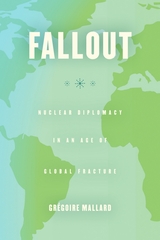 Fallout: Nuclear Diplomacy in an Age of Global Fracture
Grégoire Mallard
University of Chicago Press, 2014 Many Baby Boomers still recall crouching under their grade-school desks in frequent bomb drills during the Cuban Missile Crisis—a clear representation of how terrified the United States was of nuclear war. Thus far, we have succeeded in preventing such catastrophe, and this is partly due to the various treaties signed in the 1960s forswearing the use of nuclear technology for military purposes.
In Fallout, Grégoire Mallard seeks to understand why some nations agreed to these limitations of their sovereign will—and why others decidedly did not. He builds his investigation around the 1968 signing of the Nuclear Nonproliferation Treaty (NPT), which, though binding in nature, wasn’t adhered to consistently by all signatory nations. Mallard looks at Europe’s observance of treaty rules in contrast to the three holdouts in the global nonproliferation regime: Israel, India, and Pakistan. He seeks to find reasons for these discrepancies, and makes the compelling case that who wrote the treaty and how the rules were written—whether transparently, ambiguously, or opaquely—had major significance in how the rules were interpreted and whether they were then followed or dismissed as regimes changed. In honing in on this important piece of the story, Mallard not only provides a new perspective on our diplomatic history, but, more significantly, draws important conclusions about potential conditions that could facilitate the inclusion of the remaining NPT holdouts. Fallout is an important and timely book sure to be of interest to policy makers, activists, and concerned citizens alike.
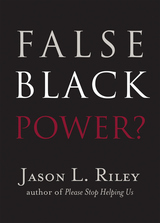 False Black Power?
Jason L. Riley
Templeton Press, 2017 Black civil rights leaders have long supported ethnic identity politics and prioritized the integration of political institutions, and seldom has that strategy been questioned. In False Black Power?, Jason L. Riley takes an honest, factual look at why increased black political power has not paid off in the ways that civil rights leadership has promised. Recent decades have witnessed a proliferation of black elected officials, culminating in the historic presidency of Barack Obama. However, racial gaps in employment, income, homeownership, academic achievement, and other measures not only continue but in some cases have even widened. While other racial and ethnic groups in America have made economic advancement a priority, the focus on political capital for blacks has been a disadvantage, blocking them from the fiscal capital that helped power upward mobility among other groups. Riley explains why the political strategy of civil rights leaders has left so many blacks behind. The key to black economic advancement today is overcoming cultural handicaps, not attaining more political power. The book closes with thoughtful responses from key thought leaders Glenn Loury and John McWhorter.
 The False Dawn: European Imperialism in the Nineteenth Century
Raymond F. Betts
University of Minnesota Press, 1978
The False Dawn was first published in 1975. Minnesota Archive Editions uses digital technology to make long-unavailable books once again accessible, and are published unaltered from the original University of Minnesota Press editions.
As the author explains, the false dawn that greeted and disappointed the visitors in E. M. Forster's A Passage to India is a literary image that might serve as a value judgment of modern overseas empire in general. Commenting that the term "empire" is now badly tarnished, Professor Betts points out that no bright dawn of understanding has yet appeared on the academic horizon. With this perceptive viewpoint, he traces the course of European imperialism beginning with the Treaty of Paris in 1763 and ending with a final glance toward the Western Front in August, 1914.
Reviewing the book in the Historian, Lawrence J. Baack calls it "a clear and concise essay on the nature of European imperialism." In its review Choice says: "Undergraduates and graduate students alike will welcome this book as a readable general introduction to more technical works."
 False Dawn: The New Deal and the Promise of Recovery, 1933–1947
George Selgin
University of Chicago Press, 2025 A definitive history of the United States’ recovery from the Great Depression—and the New Deal's true part in it. FDR’s New Deal has long enjoyed a special place in American history and policy—both because it redefined the government’s fundamental responsibilities and because Roosevelt’s “bold experimentation” represented a type of policymaking many would like to see repeated. But “the thing about bold experiments,” economist George Selgin reminds us, “is that they often fail.” In False Dawn Selgin draws on both contemporary sources and numerous studies by economic historians to show that, although steps taken during the Roosevelt administration’s first days raised hopes of a speedy recovery from the Great Depression, instead of fulfilling those hopes, subsequent New Deal policies proved so counterproductive that over seventeen percent of American workers—more than the peak unemployment rate during the COVID-19 crisis—were still either unemployed or on work relief six years later. By distinguishing the New Deal’s successes from its failures, and explaining how the U.S. finally managed to lay the specter of mass unemployment to rest, Selgin draws salient lessons for dealing with future recessions.
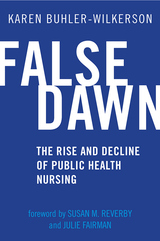 False Dawn: The Rise and Decline of Public Health Nursing
Karen Buhler-Wilkerson
Rutgers University Press, 2021 Since its initial publication in 1989 by Garland Publishing, Karen Buhler Wilkerson’s False Dawn: The Rise and Decline of Public Health Nursing remains the definitive work on the creation, work, successes, and failures of public health nursing in the United States. False Dawn explores and answers the provocative question: why did a movement that became a significant vehicle for the delivery of comprehensive health care to individuals and families fail to reach its potential? Through carefully researched chapters, Wilkerson details what she herself called the “rise and fall” narrative of public health nursing: rising to great heights in its patients' homes in the struggle to control infectious diseases, assimilate immigrants, and tame urban areas -- only to flounder during the later growth of hospitals, significant immigration restrictions, and the emergence of chronic diseases as endemic in American society.
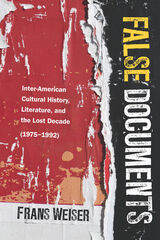 False Documents: Inter-American Cultural History, Literature, and the Lost Decade (1975–1992)
Frans Weiser
Ohio State University Press, 2020 False Documents: Inter-American Cultural History, Literature, and the Lost Decade (1975–1992) examines the “return of history” that swept across the Americas during the final two decades of the Cold War as Latin American nations redemocratized and US multiculturalism responded to the conservative bicentennial backlash. Revising the predominantly economic and isolationist accounts of the era, Frans Weiser examines the work of journalists and academics from Hispanic America, Brazil, and the United States who adopted fiction to document recent national discord, repositioning challenges to self-determination in a postnational context.
After deconstructing economic accounts of the “two Americas" model of the hemisphere, including the lost decade (1981–1992) and the “end of history” (1975–1992), Weiser considers six case studies during the same period that reach very different conclusions by drawing on cultural history, including works by Tomás Eloy Martínez, Laura Antillano, Ana Maria Machado, Silviano Santiago, John Updike, and Jay Cantor. In order to expose how governments controlled and misrepresented recent events, these writers created false documents, or fake historical texts, that presented themselves as legitimate eyewitness accounts or archival documents. Weiser establishes how this alternative to postmodern irony more effectively galvanized citizen responses. As the first book to contextualize the parallel, hemispheric evolutions of postwar literary criticism and cultural historiography, False Documents responds to the methodological impasse between Latin American and American studies as well as the antagonism between history and literature, arguing that collaboration and synthesis are particularly vital at a moment when the humanities is increasingly under attack.
 False Front: The Failed Promise of Presidential Power in a Polarized Age
Kenneth Lowande
University of Chicago Press, 2024 A provocative new perspective on presidential power. Border walls, school bathrooms, student loans, gun control, diversity, abortion, climate change—today, nothing seems out of reach for the president's pen. But after all the press releases, ceremonies, and speeches, shockingly little gets done. The American presidency promises to solve America's problems, but presidents' unilateral solutions are often weak, even empty. Kenneth Lowande argues this is no accident. The US political system is not set up to allow presidents to solve major policy problems, yet it lays these problems at their doorstep, and there is no other elected official better positioned to attract attention by appearing to govern. Like any politician, presidents are strategic actors who seek symbolic wins. They pursue executive actions, even when they know that these will fail, because doing so allows them to put on a compelling show for key constituencies. But these empty presidential actions are not without their costs: they divert energy from effective government—and, over time, undermine public trust. Drawing on thousands of executive actions, news coverage, interviews, and presidential archives, False Front shows that the real root of presidential power is in what presidents can get away with not doing.
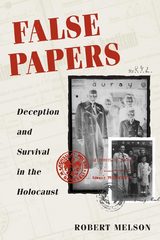 False Papers: DECEPTION AND SURVIVAL IN THE HOLOCAUST
Robert Melson
University of Illinois Press, 2000 False Papers is the astounding story of a Jewish family who survived the Holocaust by living in the open. By sheer chutzpah and bravado, Robert Melson's mother acquired the identity papers that would disguise herself, her husband, and her son for the duration of the war. Always operating under the theory that one needed to be seen in order not to be noticed, the Mendelsohns became not just ordinary Polish Catholics, but the Zamojskis, a Polish family of noble lineage.
Armed with their new lives and their new pasts, the Count and Countess Zamojski and their son, Count Bobi, took shelter in the very shadow of the Nazi machine, hiding day after day in plain sight behind a façade of elegant good manners and cultivated self-assurance, even arrogance: "you had to shout [the Gestapo] down or they would kill you." Melson's father took advantage of his flawless German to build a lucrative business career while working for a German businessman of the Schindler type. The Zamojskis acquired beautiful homes in the German quarter of Krakow and in Prague, where they had maids and entertained Nazi officials. Their masquerade enabled them to save not only themselves and their son but also an uncle and three Jewish women, one of whom became part of the family.
False Papers is a candid, sometimes funny account of a stylish couple who dazzled the Nazis with flamboyant theatrics then gradually, tragically fell apart after the war. Particularly arresting is Melson himself, who was just a child when his family embarked on their grand charade. A resilient boy who had to negotiate bewildering shifts of identify–-now Catholic, now Jewish; now European aristocrat, now penniless refugee who becomes an American college student--Melson closes each chapter of his parents' recollections with his childhood perceptions of the same events.
Against the totalizing, flattening, unrelenting Nazi behemoth, Melson says, "I wished to pit our very bodies, our quirky, sexy, funny, wicked, frail, ordinary selves." By balancing the adults' maneuvering with the perspective of a child, Melson crafts an account of the Holocaust that is at once poignant, entertaining, and troubling.
False Promises: The Shaping of American Working Class Consciousness
Stanley Aronowitz
Duke University Press, 1992 This classic study of the American working class, originally published in 1973, is now back in print with a new introduction and epilogue by the author. An innovative blend of first-person experience and original scholarship, Aronowitz traces the historical development of the American working class from post-Civil War times and shows why radical movements have failed to overcome the forces that tend to divde groups of workers from one another. The rise of labor unions is analyzed, as well as their decline as a force for social change. Aronowitz’s new introduction situates the book in the context of developments in current scholarship and the epilogue discusses the effects of recent economic and political changes in the American labor movement.
 False Promises: The Struggle for Black Voting Rights in 1800s Ohio
Ric S. Sheffield
Ohio University Press Brings to life the struggle for Black suffrage in nineteenth-century Ohio In False Promises, the fight for Black voting rights in Ohio comes alive through narratives of men of color who defied the state’s nineteenth-century restrictions on suffrage. Though ratification of the Fifteenth Amendment ostensibly extended the franchise, state election laws still forced men of color into a perilous struggle for full citizenship. Ric S. Sheffield depicts their courage and determination, revealing their humanity through stories of sacrifice, resistance, and hope. Drawing on Saidiya Hartman’s concept of critical fabulation, Sheffield weaves together historical records with imaginative reconstructions of dialogue, setting, and descriptive elements beyond the dusty courthouse pages. Grounded in archival evidence yet reimagined to fill in the silences, these stories recount the lived experiences of those who risked everything to exercise their right to vote. False Promises also connects these historical battles to the present, illustrating how voter-suppression tactics in today’s Ohio have roots in the racial exclusions of the nineteenth century. By exposing the enduring legacy of white supremacist policies, the book challenges the widespread misconception that racial disenfranchisement was solely a southern problem. Ohio’s complex racial history—noted for its role in the Underground Railroad but also for its repressive Black Laws—also includes a fierce and ongoing struggle over the right to vote. Through compelling storytelling, historical analysis, and a reclamation of voices lost to history, False Promises urges readers to reconsider their understanding of democracy and the right to vote.
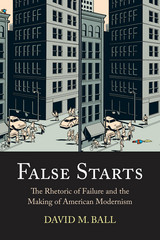 False Starts: The Rhetoric of Failure and the Making of American Modernism
David M. Ball
Northwestern University Press, 2014 From Herman Melville’s claim that “failure is the true test of greatness” to Henry Adams’s self-identification with the “mortifying failure in [his] long education” and William Faulkner’s eagerness to be judged by his “splendid failure to do the impossible,” the rhetoric of failure has served as a master trope of modernist American literary expression. David Ball’s magisterial study addresses the fundamental questions of language, meaning, and authority that run counter to well-rehearsed claims of American innocence and positivity, beginning with the American Renaissance and extending into modernist and contemporary literature. The rhetoric of failure was used at various times to engage artistic ambition, the arrival of advanced capitalism, and a rapidly changing culture, not to mention sheer exhaustion. False Starts locates a lively narrative running through American literature that consequently queries assumptions about the development of modernism in the United States.
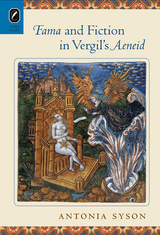 Fama and Fiction in Vergil's Aeneid
Antonia Syson
Ohio State University Press, 2013 What does it mean to “know” what a work of fiction tells us? In Vergil’s Aeneid, the promise and uncertainty of fama convey this challenge. Expansive and flexible, the Latin word fama can mean “fame,” long-lasting “tradition,” and useful “news,” but also ephemeral “rumor” and disruptive “scandal.” Fama is personified as a horrifying winged goddess who reports the truth while keeping an equally tight grip on what’s distorted or made up. Fama reflects the ways talk—or epic song—may merge past and present, human and divine, things remembered and things imagined. Most importantly, fama marks the epic’s power to bring its story world into our own. The cognitive dynamics of metaphor share in this power, blending the Aeneid’s poetic authority with the imagined force of the gods. Characters and readers are encouraged—even impelled— to seek divine order amidst unsettling words and visions by linking new experiences with existing knowledge. Transformative moments of recognition set the perceptual stage both for the gods’ commands and for the epic’s persuasive efficacy, for pietas (remembrance of ritual and social obligations) and furor (madness). Antonia Syson’s sensitive close readings offer fresh insights into questions of fictive knowledge and collective memory in the Aeneid. These perspectives invite readers to reconsider some of the epistemological premises underlying inquiry into ancient cultures. Drawing comparisons with the nineteenth-century English novel, Syson highlights continuities between two narrative genres whose cultural contributions and rhetorical claims have often seemed sharply opposed.
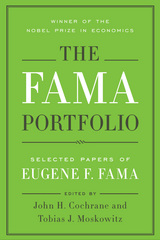 The Fama Portfolio: Selected Papers of Eugene F. Fama
Eugene F. Fama
University of Chicago Press, 2017 Few scholars have been as influential in finance and economics as University of Chicago professor Eugene F. Fama. Over the course of a brilliant and productive career, Fama has published more than one hundred papers, filled with diverse, highly innovative contributions.
Published soon after the fiftieth anniversary of Fama’s appointment to the University of Chicago and his receipt of the Nobel Prize in Economics, The Fama Portfolio offers an authoritative compilation of Fama’s central papers. Many are classics, including his now-famous essay on efficient capital markets. Others, though less famous, are even better statements of the central ideas. Fama’s research considers key questions in finance, both as an academic field and an industry: How is information reflected in asset prices? What is the nature of risk that scares people away from larger returns? Does lots of buying and selling by active managers produce value for their clients? The Fama Portfolio provides for the first time a comprehensive collection of his work and includes introductions and commentary by the book’s editors, John H. Cochrane and Tobias Moskowitz, as well as by Fama’s colleagues, themselves top scholars and successful practitioners in finance. These essays emphasize how the ideas presented in Fama’s papers have influenced later thinking in financial economics, often for decades.
Fame and Fandom: Functioning On and Offline
Celia Lam
University of Iowa Press, 2022 Celebrities depend upon fans to sustain their popularity and livelihood, and fans are happy to oblige. With social media they can follow their favorite (or least favorite) celebrities’ every move, and get glimpses into their lives, homes, and behind-the-scenes work. Fans interact with celebrities now more than ever, and often feel that they have a claim on their time, attention, and accountability. In Fame and Fandom, the contributors examine this tumultuous dynamic and bring together celebrity studies and fan studies like never before.
In case studies including Supernatural, Harry Styles, YouTube influencers, film location sites, Keanu Reeves, and celebrities as fans, readers find new approaches to fan/celebrity encounters and parasocial relationships. This is the go-to volume on the symbiotic relationship between fame and fandom.
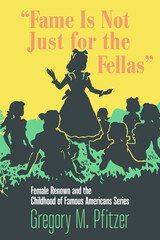 "Fame Is Not Just for the Fellas": Female Renown and the Childhood of Famous Americans Series
Gregory M. Pfitzer
University of Massachusetts Press, 2022 Finalist of the 2023 SHARP History of the Book Prize
Between 1932 and 1958, thousands of children read volumes in the book series Childhood of Famous Americans. With colorful cover art and compelling—and often highly fictionalized—narrative storylines, these biographies celebrated the national virtues and achievements of famous women like Betsy Ross, Louisa May Alcott, and Amelia Earhart. Employing deep archival research, Gregory M. Pfitzer examines the editorial and production choices of the publisher and considers the influence of the series on readers and American culture more broadly. In telling the story of how female subjects were chosen and what went into writing these histories for young female readers of the time, Pfitzer illustrates how these books shaped children’s thinking and historical imaginations around girlhood using tales from the past. Utilizing documented conversations and disagreements among authors, editors, readers, reviewers, and sales agents at Bobbs-Merrill, “Fame Is Not Just for the Fellas” places the series in the context of national debates around fame, gender, historical memory, and portrayals of children and childhood for a young reading public—charged debates that continue to this day.
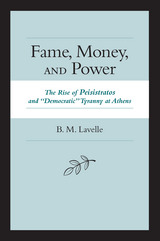 Fame, Money, and Power: The Rise of Peisistratos and "Democratic" Tyranny at Athens
B. M. Lavelle
University of Michigan Press, 2005 "The sixth century is a very contentious time; Fame, Money, and Power unambiguously advances our understanding of Peisistratos and archaic Athens. No one else has tackled so many of the difficult issues that Lavelle has taken on."
--David Tandy, University of Tennessee
"Well researched and engaging, [Fame, Money, and Power] painstakingly builds [its] case for how the various phases of Peisistratos's career developed."
--Tony Podlecki, University of British Columbia
The Athenian "golden age" occurred in the fifth century B.C.E. and was attributed to their great achievements in art, literature, science, and philosophy. However, the most important achievement of the time was the political movement from tyranny to democracy. Though tyranny is thought to be democracy's opposite and deadly enemy, that is not always the case. In Fame, Money, and Power, Brian Lavelle states that the perceived polarity between tyranny and democracy does not reflect the truth in this instance.
The career of the tyrant Peisistratos resembles the careers and successes of early democratic soldier-politicians. As with any democratic political system, Peisistratos' governance depended upon the willingness of the Athenians who conceded governance to him. This book attempts to show how the rise of Peisistratos fits into an essentially democratic system already entrenched at Athens in the earlier sixth century B.C.E.
Emerging from the apparent backwater of eastern Attika, Peisistratos led the Athenians to victory over their neighbors, the Megarians, in a long, drawn out war. That victory earned him great popularity from the Athenians and propelled him along the road to monarchy. Yet, political success at Athens, even as Solon implies in his poems, depended upon the enrichment of the Athenian d?mos, not just fame and popularity. Peisistratos tried and failed two times to "root" his tyranny, his failures owing to a lack of sufficient money with which to appease the demos. Exiled from Athens, he spent the next ten years amassing money to enrich the Athenians and power to overcome his enemies. He then sustained his rule by grasping the realities of Athenian politics. Peisistratos' tyrannies were partnerships with the d?mos, the first two of which failed. His final formula for success, securing more money than his opponents possessed and then more resources for enriching the d?mos, provided the model for future democratic politicians of Athens who wanted to obtain and keep power in fifth-century Athens.
The Fame of Gawa: A Symbolic Study of Value Transformation in a Massim Society
Nancy D. Munn
Duke University Press, 1992 This new edition of the critically acclaimed The Fame of Gawa—originally published in 1986—makes available for the first time this important work in paperback. The Fame of Gawa is concerned with fundamental practices of value creation on Gawa, a small island off the southeast coast of mainland Papua New Guinea, the inhabitants of which participate in the long-distance kula shell exchange ring. Integrating various aspects of the study of society and culture--including the sociocultural construction of space and time, self-other relations and the body, and moral and political problems of hierarchy and equality—Nancy D. Munn shows that it is through achieving fame in the wider inter-island world that the Gawan community asserts its own internal viablity.
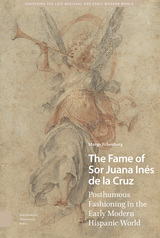 The Fame of Sor Juana Inés de la Cruz: Posthumous Fashioning in the Early Modern Hispanic World
Margo Echenberg
Amsterdam University Press, 2023 The Fame of Sor Juana Inés de la Cruz traces the meteoric trajectory of the Mexican Tenth Muse’s renown and studies how her worldly celebrity was altered posthumously by elegists in her Fama y obras póstumas [Fame and Posthumous Works] of 1700. In this study of a polyphonic, transatlantic volume, the didactic framework of early modern fame is pushed to its limits as panegyrists inscribe the nun into an evolving world-view that could trade in the fictions of the saintly exemplar, the Tenth Muse or a New World treasure, but could not preserve a woman’s renown on the grounds of authorship. Only by making her legible could she vie for the promise of posthumous fame. In flushing out the machinations of Sor Juana’s role as agent of her own celebrity as well as the negotiations of her contemporaries, this book opens new lines of inquiry in the study of early modern fame and print culture and the role of writers, panegyrists and editors as cultural agents in the transatlantic literary relationship between Mexico and Spain.
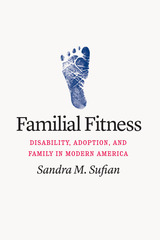 Familial Fitness: Disability, Adoption, and Family in Modern America
Sandra M. Sufian
University of Chicago Press, 2022 The first social history of disability and difference in American adoption, from the Progressive Era to the end of the twentieth century.
Disability and child welfare, together and apart, are major concerns in American society. Today, about 125,000 children in foster care are eligible and waiting for adoption, and while many children wait more than two years to be adopted, children with disabilities wait even longer. In Familial Fitness, Sandra M. Sufian uncovers how disability operates as a fundamental category in the making of the American family, tracing major shifts in policy, practice, and attitudes about the adoptability of disabled children over the course of the twentieth century.
Chronicling the long, complex history of disability, Familial Fitness explores how notions and practices of adoption have—and haven’t—accommodated disability, and how the language of risk enters into that complicated relationship. We see how the field of adoption moved from widely excluding children with disabilities in the early twentieth century to partially including them at its close. As Sufian traces this historical process, she examines the forces that shaped, and continue to shape, access to the social institution of family and invites readers to rethink the meaning of family itself.
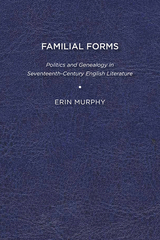 Familial Forms: Politics and Genealogy in Seventeenth-Century English Literature
Erin Murphy
University of Delaware Press, 2011 Familial Forms is the first full-length study to examine how literary writers engaged the politics of genealogy that helped define the “century of revolution.” By demonstrating how conflicts over the family-state analogy intersected with the period’s battles over succession, including: the ascent of James I, the execution of Charles I, disputes over the terms of the Interregnum government, the Restoration of Charles II, the Exclusion Crisis, the deposition of James II, the ascent of William and Mary, and Anne’s failure to produce a surviving heir, this study provides a new map of the seventeenth-century politics of family in England. Beginning with a reconsideration of Jacobean patriarchalism, Familial Forms focuses on the work of John Milton, Lucy Hutchinson, John Dryden, and Mary Astell. From their contrasting political and gendered positions, these authors contemplated and contested the relevance of marriage and kinship to government. Their writing illuminates two crucial elements of England’s conflicts. First, the formal qualities of poems and prose tracts reveal that not only was there a competition among different versions of the family-state analogy, but also a competition over its very status as an analogy. Second, through their negotiations of linear and nonlinear forms, Milton, Hutchinson, Dryden, and Astell demonstrate the centrality of temporality to the period’s political battles. Through close textual analysis of poetry, political tracts, parliamentary records, and nonliterary genealogies, Familial Forms offers a fresh understanding of the seventeenth-century politics of genealogy. It also provides new answers to long-standing critical questions about the poetic form of canonical works, such as Paradise Lost and Absalom and Achitophel, and illuminates the political significance of newly-canonical works by women writers, including Aemilia Lanyer’s Salve Deus Rex Judaeoreum, Hutchinson’s Order and Disorder, and Astell’s A Serious Proposal to the Ladies. Published by University of Delaware Press. Distributed worldwide by Rutgers University Press.
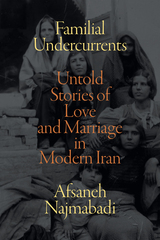 Familial Undercurrents: Untold Stories of Love and Marriage in Modern Iran
Afsaneh Najmabadi
Duke University Press, 2022 Not long after her father died, Afsaneh Najmabadi discovered that her father had a secret second family and that she had a sister she never knew about. In Familial Undercurrents, Najmabadi uncovers her family’s complex experiences of polygamous marriage to tell a larger story of the transformations of notions of love, marriage, and family life in mid-twentieth-century Iran. She traces how the idea of “marrying for love” and the desire for companionate, monogamous marriage acquired dominance in Tehran’s emerging urban middle class. Considering the role played in that process by late nineteenth- and early twentieth-century romance novels, reformist newspapers, plays, and other literature, Najmabadi outlines the rituals and objects---such as wedding outfits, letter writing, and family portraits---that came to characterize the ideal companionate marriage. She reveals how in the course of one generation men’s polygamy had evolved from an acceptable open practice to a taboo best kept secret. At the same time, she chronicles the urban transformations of Tehran and how its architecture and neighborhood social networks both influenced and became emblematic of the myriad forms of modern Iranian family life.
The Familiar Letter as a Literary Genre in the Age of Pushkin
William Mills Todd III
Northwestern University Press, 1999 In the field of Russian literary studies, there is surprisingly little discussion of independent genres and their effect on the creativity of an era. This important text on the quasi-public "friendly letter" of nineteenth-century Russia addresses this deficiency, examining the tradition of familiar letter writing that developed in the early 1800s among literary circles that included such luminaries as Pushkin, Karamzin, and Turgenev, and arguing that these letters constitute a distinct literary genre.
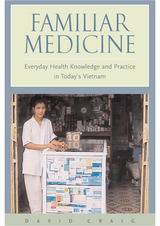 Familiar Medicine: Everyday Health Knowledge and Practice in Today's Vietnam
David Craig
University of Hawaii Press, 2002 One of the first medical ethnographies to be written on contemporary Vietnam, Familiar Medicine examines the practical ways in which people of the Red River Delta make sense of their bodies, illness, and medicine. Traditional knowledge and practices have persisted but are now expressed through and alongside global medical knowledge and commodities. Western medicine has been eagerly adopted and incorporated into everyday life in Vietnam, but not entirely on its own terms.
Familiar Medicine takes a conjectural, interdisciplinary approach to its subject, weaving together history, ethnography, cultural geography, and survey materials to provide a rich and readable account of local practices in the context of an increasingly globalized world and growing microbial resistance to antibiotics. Theoretically, it draws on current critical and cultural theory (in particular applying Pierre Bourdieu's work on habitus and practical logics) in innovative but approachable ways.
David Craig addresses a range of contemporary fascinations in medical anthropology and the sociology of health and illness: from the trafficking of medical commodities and ideas under globalization to the hybridization of local cultural formations, knowledge, and practices. His book will be required reading for international workers in health and development in Vietnam and a rich resource for courses in cultural geography, anthropology, medical sociology, regional studies, and public and international health.
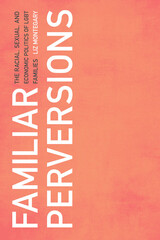 Familiar Perversions: The Racial, Sexual, and Economic Politics of LGBT Families
Montegary, Liz
Rutgers University Press, 2018 Winner of the 2018 Choice Outstanding Academic Title
Over the past two decades, same-sex couples raising children have become more visible within US political and popular culture. Thanks to widely circulated images of well-mannered, well-dressed, and well-off two-parent families, a select number of LGBT-identified parents have gained recognition as model American citizens. In Familiar Perversions, Liz Montegary shows how this seemingly progressive view of same-sex parenting has taken shape during a period of growing racial inequality and economic insecurity in the United States. This book evaluates the recent successes of the “family equality” movement, while asking important questions about its relationship to neoliberalism, the policing of sexual cultures, and the broader context of social justice organizing at the turn of the twenty-first century.
Montegary’s investigation of the politics of LGBT family life takes us on a journey that includes not only activist events and the courtrooms where landmark decisions about same-sex families were made, but also parenting workshops, cruise ships, and gay resort towns. Through its sustained historical analysis, Familiar Perversions lays critical groundwork for imagining a queer family movement that can support and strengthen the diverse networks of care, kinship, and intimacy on which our collective survival depends.
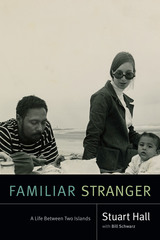 Familiar Stranger: A Life Between Two Islands
Stuart Hall
Duke University Press, 2017 "Sometimes I feel myself to have been the last colonial." This, in his own words, is the extraordinary story of the life and career of Stuart Hall—how his experiences shaped his intellectual, political, and theoretical work and how he became one of his age's brightest intellectual lights.
Growing up in a middle-class family in 1930s Kingston, Jamaica, still then a British colony, the young Stuart Hall found himself uncomfortable in his own home. He lived among Kingston's stiflingly respectable brown middle class, who, in their habits and ambitions, measured themselves against the white elite. As colonial rule was challenged, things began to change in Kingston and across the world. In 1951 a Rhodes scholarship took Hall across the Atlantic to Oxford University, where he met young Jamaicans from all walks of life, as well as writers and thinkers from across the Caribbean, including V. S. Naipaul and George Lamming. While at Oxford he met Raymond Williams, Charles Taylor, and other leading intellectuals, with whom he helped found the intellectual and political movement known as the New Left. With the emotional aftershock of colonialism still pulsing through him, Hall faced a new struggle: that of building a home, a life, and an identity in a postwar England so rife with racism that it could barely recognize his humanity.
With great insight, compassion, and wit, Hall tells the story of his early life, taking readers on a journey through the sights, smells, and streets of 1930s Kingston while reflecting on the thorny politics of 1950s and 1960s Britain. Full of passion and wisdom, Familiar Stranger is the intellectual memoir of one of our greatest minds.
 A Familiar Wilderness: Searching for Home on Daniel Boone's Road
Simon J. Dahlman
University of Tennessee Press, 2019 In 1775, renowned pioneer Daniel Boone was commissioned to blaze a road through the Appalachian and Cumberland Plateau regions as a fledgling American nation steadily pushed westward. What would come to be known as the Wilderness Road was the first major route into the West, and it allowed settlers to migrate northwest into Kentucky and later settle parts of Ohio, Indiana, and Illinois. In 2012, Jim Dahlman stopped to stretch his legs on a brief hike into the Cumberland Gap and stumbled upon an adventure. After months of preparation, Dahlman grabbed a pack and set out to hike as accurately as possible Daniel Boone’s original trace.
In A Familiar Wilderness, Dahlman illustrates that the Wilderness Road is more than an old track through Appalachia. Many of the towns grew up along Boone’s original footpath, and people in these areas can draw direct connections to Boone himself or to other early settlers who traversed this trans-Appalachian route. Dahlman uses these and other encounters to uncover the history of the Wilderness Road and show how we are all a product of our past.
The hospitality of strangers becomes especially instrumental in making Dahlman’s hike come alive. Robert, one such stranger, offers to personally guide Dahlman over Powell Mountain. As they make their ascent, Robert provides a splendid view of the mountain, blending careful observation of their surroundings with deep knowledge of the place. A finale to Dahlman’s almost 300-mile hike occurs on Hackberry Ridge overlooking Fort Boonesborough State Park—a fitting tribute to Boone’s own arrival on the ridge famously overlooking a herd of buffalo.
A Familiar Wilderness takes readers on a winding path where geography, history, and local memory intersect with daily life, and Dahlman’s lively writing, sensitive to every detail, will bring readers into thrilling touch with a past that still shapes and challenges the present.
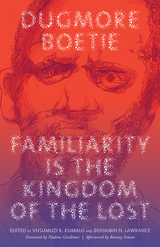 Familiarity Is the Kingdom of the Lost
Dugmore Boetie
Ohio University Press, 2020 A fast-paced romp through apartheid-era South Africa that exemplifies the creative human capacity to overcome seemingly omnipotent enemies and overwhelming odds. The picaresque hero of this novel, Duggie, is a dispossessed black street kid turned con man. Duggie’s response to being confined to the lowest level of South Africa’s oppressive and humiliating racial hierarchy is to one-up its absurdity with his own glib logic and preposterous schemes. Duggie’s story, as one critic puts it, offers “an encyclopedic catalogue of rip-offs, swindles, and hoaxes” that regularly land him in jail and rely on his white targets’ refusal to admit a black man is capable of outsmarting them. Duggie exploits South Africa’s bureaucratic pass laws and leverages his artificial leg every chance he gets. As “a worthless embarrassment to the authorities and a bad example to the convicts,” Duggie even manages to get himself thrown out of jail. From Duggie’s Depression-era childhood in urban Johannesburg to World War II and the rise of the white supremacist apartheid regime to his final, bitter triumph, Boetie’s narrative celebrates humanity’s relentless drive to survive at any cost. This new edition of Boetie’s out-of-print classic features a recently discovered photograph of the author, an introduction replete with previously unpublished research, numerous annotations, and is accompanied by Lionel Abrahams’ haunting poem, “Soweto Funeral,” composed after attending Boetie’s interment, all of which render the text accessible to a new generation of readers.
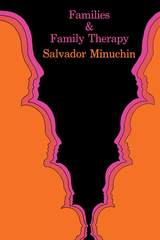 Families and Family Therapy
Salvador Minuchin
Harvard University Press, 1974 No other book in the field so fully combines vivid clinical examples, specific details of technique, and mature perspectives on both effectively functioning families and those seeking therapy. The views and strategies of a master clinician are presented here in such clear and precise form that readers can proceed directly from the book with comparisons and modifications to suit their own styles and working situations.
Salvador Minuchin presents six chapter-length transcripts of actual family sessions—two devoted to ordinary families who are meeting their problems with relative success; four concerned with families seeking help. Accompanying each transcript is the author’s running interpretation of what is taking place, laying particular stress on the therapist’s tactics and maneuvers.
These lively sessions are interpreted in a brilliant theoretical analysis of why families develop problems and what it takes to set them right. The author constructs a model of an effectively functioning family and defines the boundaries around its different subsystems, whether parental, spouse, or sibling. He discusses ways in which families adapt to stress from within and without, as they seek to survive and grow.
Dr. Minuchin describes methods of diagnosing or “mapping” problems of the troubled family and determining appropriate therapeutic goals and strategies. Different situations, such as the extended family, the family with a parental child, and the family in transition through death or divorce, are examined. Finally, the author explores the dynamics of change, examining the variety of restructuring operations that can be employed to challenge a family and to change its basic patterns.
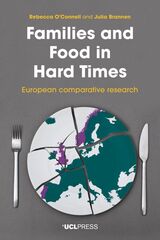 Families and Food in Hard Times: European Comparative Research
Rebecca O'Connell and Julia Brannen
University College London, 2021 An examination of food poverty in austerity-era Europe.
Food is fundamental, yet food poverty has increased in the Global North. Adopting a comparative case approach, Food and Families in Hard Times addresses the global problem of economic retrenchment and the burden it places on the most vulnerable. This timely book examines food poverty in the United Kingdom, Portugal, and Norway following the 2008 financial crisis, examining the resources available to families in relation to the intersection of public policies, local institutions, and kinship networks. The book explores the ways that low income impacts household food provisioning, formal and informal support for struggling families, the provision and role of school meals, and constraints upon families’ social participation. Drawing upon extensive and intensive knowledge on the conditions and experiences of low-income families, the book also draws upon current research in European social science literature to shed light on the causes and consequences of food poverty in austerity-era Europe.
 Families and Religion: Dynamics of Transmission Across Generations
Edited by Christel Gärtner, Linda Hennig, and Olaf Müller
Campus Verlag, 2025 Faith is more than a personal choice; it’s a generational story. This study reveals when and why religious transmission succeeds or fails within families.
How does religion—or the lack of it—pass from one generation to the next? Families and Religion studies the intergenerational shifts in faith and secularism in Germany, Italy, Hungary, Finland, and Canada, depicting when, how, and why religious beliefs change.
Using a mixed-methods approach, the book looks into the role of family and historical context in shaping religious affiliation and identity, specifically focusing on adolescence as a key period of transformation. Comparing diverse social settings, the authors uncover the subtle yet powerful forces influencing whether religious traditions persist or fade across generations. A vital contribution to the study of religious change, this volume offers new insights for scholars of sociology and religious studies, and for those interested in understanding how faith may be passed down within families.
Families and Work
Naomi Gerstel
Temple University Press, 1987 Emphasizing gender inequality in the past and present, this book analyzes the connections between work and family that produce conflict and change at home and in the marketplace.
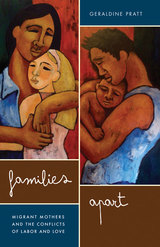 Families Apart: Migrant Mothers and the Conflicts of Labor and Love
Geraldine Pratt
University of Minnesota Press, 2012 In a developing nation like the Philippines, many mothers provide for their families by traveling to a foreign country to care for someone else’s. Families Apart focuses on Filipino overseas workers in Canada to reveal what such arrangements mean for families on both sides of the global divide. The outcome of Geraldine Pratt’s collaboration with the Philippine Women Centre of British Columbia, this study documents the difficulties of family separation and the problems that children have when they reunite with their mothers in Vancouver. Aimed at those who have lived this experience, those who directly benefit from it, and those who simply stand by and watch, Families Apart shows how Filipino migrant domestic workers—often mothers themselves—are caught between competing neoliberal policies of sending and receiving countries and how, rather than paying rich returns, their ambitions as migrants often result in social and economic exclusion for themselves and for their children. This argument takes shape as an open-ended series of encounters, moving between a singular academic voice and the “we” of various research collaborations, between Vancouver and the Philippines, and between genres of “evidence-based” social scientific research, personal testimony, theatrical performance, and nonfictional narrative writing. Through these experiments with different modes of storytelling, Pratt seeks to transform frameworks of perception, to create and collect sympathetic witnesses—in short, to promote a wide-ranging public discussion and debate about a massive worldwide shift in family (and nonfamily) relations of intimacy and care.
 Families at Work: Expanding the Bounds
Naomi Gerstel
Vanderbilt University Press, 2002 What is the relationship between work and family in a world where employment creates endless tensions for families and families create endless tensions for the workplace? This collection of reprinted and original articles broadens this discussion by addressing issues from the perspectives of often neglected populations: from white middle-class women with young children to people of color, to poor families, to the new sorts of families gays and lesbians are struggling to construct, to fathers, to older children. To discuss work and family is also to discuss gender. Ranging from California's Silicon Valley to a remote fishing village in the northeast, part one shows how new work arrangements have created new expectations for what it means to be a woman or a man, and how slow and uneven the pace of change can be. Nowhere are the tensions of work and family more potent than around childcare. Part two takes up these tensions, showing how various "solutions" to caring for children of all ages (whether infants or teenagers) create new problems. Parts three and four turn outward to show how the new relationships between families and work are changing the relationships between families and the communities in which they live and generating new social policy dilemmas.
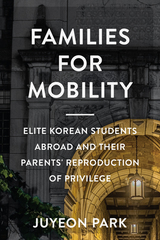 Families for Mobility: Elite Korean Students Abroad and Their Parents' Reproduction of Privilege
Juyeon Park
Rutgers University Press, 2025 Families for Mobility documents elite Korean transnational families, focusing on how they use elite education abroad as a tool for class reproduction. Drawing on over 100 interviews with both parents and children at elite U.S. colleges, the book explores the desires, aspirations, and expectations that shape these education-driven transnational family arrangements. By triangulating the perspectives of children, mothers, and fathers, Families for Mobility argues that gendered transnational parenting—by both mothers and fathers—plays a crucial role in the intergenerational transmission of mobility and cosmopolitan lifestyles. The analysis shows how class and gender shape both parents’ and children’s approaches to their transnational ‘family projects,’ with fathers and sons appearing more resourceful and ambitious than mothers and daughters, reflecting the gender achievement gap even among the elite. The book challenges stereotypes of Asian high achievers and ‘tiger’ parenting, providing a more nuanced understanding of who thrives in the hierarchical realms of global education and business, as well as the familial support systems behind their success.
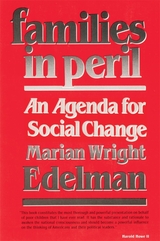 Families in Peril: An Agenda for Social Change
Marian Wright Edelman
Harvard University Press, 1987 Too many American families—unstable, broken, often poor—are in serious peril, and both the reality of the situation and the myths obscuring that reality call for attention and swift action. In this most incisive analysis of the parlous state of the family today, Marian Wright Edelman, President of the Children’s Defense Fund, charts what is happening, exposes myths, and sets a bold agenda to strengthen families and protect children. In brilliant strokes and with abundant detail, Edelman describes family conditions over a generation—the rising curve of teenage pregnancy, the overwhelming joblessness of young blacks, the trend toward single-parent households, the increase in hungry and neglected children.
Dispelling common assumptions about these bleak phenomena, she shows that the birth rate for black unmarried women is stabilizing while that for unmarried whites continues to rise, that Aid to Dependent Children does not cause teenage pregnancy or births, and that the child poverty rate has increased two-thirds for whites in recent years, as opposed to one-sixth for black children. Overall, whites are losing ground faster than blacks. Speaking for a growing number of social commentators, she finds the key to explain the rising proportion of births to single black mothers: a lost generation of fathers—young black males unable to marry and support a family, jobless from lack of education and training.
What can be done? Edelman links the family and child poverty crisis to the fragile and ephemeral commitment of government to assist the needy. She suggests establishing a partnership between government, the private sector, and the black community to ensure children food, clothing, housing, medical care, and education. “Preventive investment strategies”—providing health, nutrition, and child care, raising the minimum wage, preventing teenage pregnancies, and opening up educational and employment opportunities for heads of families—will benefit us all. A passionate call to act now, to give real meaning to traditional American instincts for decency, this book is essential reading for everyone committed to preserving the nation’s future.
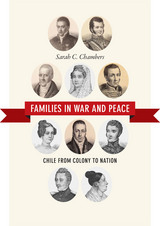 Families in War and Peace: Chile from Colony to Nation
Sarah C. Chambers
Duke University Press, 2015 In Families in War and Peace Sarah C. Chambers places gender analysis and family politics at the center of Chile's struggle for independence and its subsequent state building. Linking the experiences of both prominent and more humble families to Chile's political and legal history, Chambers argues that matters such as marriage, custody, bloodlines, and inheritance were crucial to Chile's transition from colony to nation. She shows how men and women extended their familial roles to mobilize kin networks for political ends, both during and after the Chilean revolution. From the conflict's end in 1823 until the 1850s, the state adopted the rhetoric of paternal responsibility along with patriarchal authority, which became central to the state building process. Chilean authorities, Chambers argues, garnered legitimacy by enacting or enforcing paternalist laws on property restitution, military pensions, and family maintenance allowances, all of which provided for diverse groups of Chileans. By acting as the fathers of the nation, they aimed to reconcile the "greater Chilean family" and form a stable government and society.
 Families, Lovers, and their Letters: Italian Postwar Migration to Canada
Sonia Cancian
University of Manitoba Press, 2010 Families, Lovers, and their Letters takes us into the passionate hearts and minds of ordinary people caught in the heartbreak of transatlantic migration. It examines the experiences of Italian migrants to Canada and their loved ones left behind in Italy following the Second World War, when the largest migration of Italians to Canada took place. In a micro-analysis of 400 private letters, including three collections that incorporate letters from both sides of the Atlantic, Sonia Cancian provides new evidence on the bidirectional flow of communication during migration. She analyzes how kinship networks functioned as a means of support and control through the flow of news, objects, and persons; how gender roles in productive and reproductive spheres were reinforced as a means of coping with separation; and how the emotional impact of both temporary and permanent separation was expressed during the migration process. Cancian also examines the love letter as a specific form of epistolary exchange, a first in Italian immigrant historiography, revealing the powerful effect that romantic love had on the migration experience.
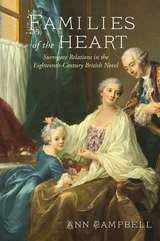 Families of the Heart: Surrogate Relations in the Eighteenth-Century British Novel
Ann Campbell
Bucknell University Press, 2023 In this innovative analysis of canonical British novels, Campbell identifies a new literary device—the surrogate family—as a signal of cultural anxieties about young women’s changing relationship to matrimony across the long eighteenth century. By assembling chosen families rather than families of origin, Campbell convincingly argues, female protagonists in these works compensate for weak family ties, explore the world and themselves, prepare for idealized marriages, or sidestep marriage altogether. Tracing the evolution of this rich convention from the female characters in Defoe’s and Richardson’s fiction who are allowed some autonomy in choosing spouses, to the more explicitly feminist work of Haywood and Burney, in which connections between protagonists and their surrogate sisters and mothers can substitute for marriage itself, this book makes an ambitious intervention by upending a traditional trope—the model of the hierarchal family—ultimately offering a new lens through which to regard these familiar works.
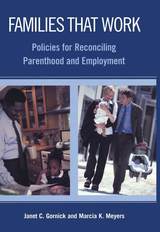 Families That Work: Policies for Reconciling Parenthood and Employment
Janet C. Gornick
Russell Sage Foundation, 2003 Parents around the world grapple with the common challenge of balancing work and child care. Despite common problems, the industrialized nations have developed dramatically different social and labor market policies—policies that vary widely in the level of support they provide for parents and the extent to which they encourage an equal division of labor between parents as they balance work and care. In Families That Work, Janet Gornick and Marcia Meyers take a close look at the work-family policies in the United States and abroad and call for a new and expanded role for the U.S. government in order to bring this country up to the standards taken for granted in many other Western nations. In many countries in Europe and in Canada, family leave policies grant parents paid time off to care for their young children, and labor market regulations go a long way toward ensuring that work does not overwhelm family obligations. In addition, early childhood education and care programs guarantee access to high-quality care for their children. In most of these countries, policies encourage gender equality by strengthening mothers' ties to employment and encouraging fathers to spend more time caregiving at home. In sharp contrast, Gornick and Meyers show how in the United States—an economy with high labor force participation among both fathers and mothers—parents are left to craft private solutions to the society-wide dilemma of "who will care for the children?" Parents—overwhelmingly mothers—must loosen their ties to the workplace to care for their children; workers are forced to negotiate with their employers, often unsuccessfully, for family leave and reduced work schedules; and parents must purchase care of dubious quality, at high prices, from consumer markets. By leaving child care solutions up to hard-pressed working parents, these private solutions exact a high price in terms of gender inequality in the workplace and at home, family stress and economic insecurity, and—not least—child well-being. Gornick and Meyers show that it is possible–based on the experiences of other countries—to enhance child well-being and to increase gender equality by promoting more extensive and egalitarian family leave, work-time, and child care policies. Families That Work demonstrates convincingly that the United States has much to learn from policies in Europe and in Canada, and that the often-repeated claim that the United States is simply "too different" to draw lessons from other countries is based largely on misperceptions about policies in other countries and about the possibility of policy expansion in the United States.
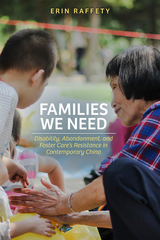 Families We Need: Disability, Abandonment, and Foster Care’s Resistance in Contemporary China
Erin Raffety
Rutgers University Press, 2023 Set in the remote, mountainous Guangxi Autonomous Region and based on ethnographic fieldwork, Families We Need traces the movement of three Chinese foster children, Dengrong, Pei Pei, and Meili, from the state orphanage into the humble, foster homes of Auntie Li, Auntie Ma, and Auntie Huang. Traversing the geography of Guangxi, from the modern capital Nanning where Pei Pei and Meili reside, to the small farming village several hours away where Dengrong is placed, this ethnography details the hardships of social abandonment for disabled children and disenfranchised, older women in China, while also analyzing the state’s efforts to cope with such marginal populations and incorporate them into China’s modern future. The book argues that Chinese foster families perform necessary, invisible service to the Chinese state and intercountry adoption, yet the bonds they form also resist such forces, exposing the inequalities, privilege, and ableism at the heart of global family making.
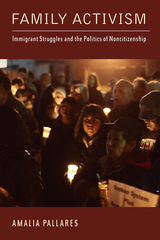 Family Activism: Immigrant Struggles and the Politics of Noncitizenship
Pallares, Amalia
Rutgers University Press, 2014 During the past ten years, legal and political changes in the United States have dramatically altered the legalization process for millions of undocumented immigrants and their families. Faced with fewer legalization options, immigrants without legal status and their supporters have organized around the concept of the family as a political subject—a political subject with its rights violated by immigration laws.
Drawing upon the idea of the “impossible activism” of undocumented immigrants, Amalia Pallares argues that those without legal status defy this “impossible” context by relying on the politicization of the family to challenge justice within contemporary immigration law. The culmination of a seven-year-long ethnography of undocumented immigrants and their families in Chicago, as well as national immigrant politics,Family Activism examines the three ways in which the family has become politically significant: as a political subject, as a frame for immigrant rights activism, and as a symbol of racial subordination and resistance.
By analyzing grassroots campaigns, churches and interfaith coalitions, immigrant rights movements, and immigration legislation, Pallares challenges the traditional familial idea, ultimately reframing the family as a site of political struggle and as a basis for mobilization in immigrant communities.
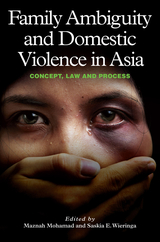 Family Ambiguity and Domestic Violence in Asia: Concept, Law and Strategy
Edited by Maznah Mohamad and Saskia E. Wieringa
Sussex Academic Press, 2022 Domestic violence in Asia is explored in this analysis through questions of family ambiguity and the relationship between concept, law, and strategy. Comparative experiences in the Asian context enable an examination of the effectiveness of family regulations and laws in diverse national, cultural, and religious settings. Key questions relate to the limits and relevance of the human rights discourse in resolving family conflicts; the extent to which power and control in intimate relationships can actually be regulated by a set of inanimate, homogeneous, and uniform policies and legislations; and how the state relates to the family as an ambiguous unit given state rules of governance that perpetuate unequal gender relations. Carefully considering the many components of domestic violencesuch as state intervention versus the private domain and differences in legislation across Asiathe book offers new theoretical insights to the conceptualization of the family, culture, and law, and provides reasoned new perspectives on the effectiveness or inadequacy of present policies and enforcement strategies against domestic violence in Asia.
 Family and Community in the Kibbutz
Yonina Talmon
Harvard University Press, 1972 Some fundamental questions about the individual and the family in communal life are raised in this first collection of essays in English by Israeli sociologist Yonina Talmon. The author, who hitherto has been known to students of revolutionary and collectivist societies mainly through her journal articles, was engaged in an extensive study of the kibbutz at the time of her death in 1966. The decade of research conducted in representative kibbutzim, in cooperation with the Federation of Kevutzot and Kibbutzim, included interviews with kibbutz members as well as observation of kibbutz life. The author gives here a general report on the findings, followed by the results of seven specific investigations that shed light on major problems of many societies: social structure and family size; children’s sleeping and family eating arrangements; occupational placement of the second generation; mate selection; aging; social differentiation; and secular asceticism.
“This collection of essays,” writes S. N. Eisenstadt in his Introduction, “represents a landmark in the development of the sociological study of the kibbutz movement.” Yonina Talmon’s “work not only opened up the kibbutz to sociological research, but put the research on kibbutz life in the forefront or sociological thinking and analysis.”
 Family and Disability Activism: Beyond Allies and Obstacles
Edited by Pamela Block, Allison C. Carey, and Richard K. Scotch
Temple University Press, 2025 In 2020, Pamela Block, Allison C. Carey, and Richard K. Scotch published Allies and Obstacles, which examined the tensions and connections between disability activism and parents of children with disabilities. In Family and Disability Activism, they continue to examine these issues with a focus on the path-breaking advocacy by marginalized activists with intersectional lived experiences.
Family and Disability Activism reveals how families and disabled people who identify as BIPOC and/or LGBTQIA2S+ understand issues of rights versus justice. Contributions by Deaf and disabled activists emphasize the frequent need for either care or independence. Other chapters show how members of the disabled community and their families must navigate systemic issues of segregation, institutionalization, and access to special education services differently depending on their ethnic and racial identities.
Expanding the conversation about disability, kinship, biological and chosen families, and activism, this volume amplifies important voices in the fight for disability rights.
Contributors: Erin Compton, Diane Compton, Jaclyn Ellis, Laura LeBrun Hatcher, Elena Hung, Bridget Liang, Jenelle Rouse, Cheryl Najarian Souza, Jeneva Stone, Roger A. Stone, Lisette E. Torres, Grace Tsao, and the editors
Family and Farm in Pre-Famine Ireland: The Parish of Killashandra
Kevin O'Neill
University of Wisconsin Press, 1985 Now available in paperback, Kevin O’Neill’s highly praised study of rural Ireland in the years leading up to the "Great Hunger" of the 1840s explicates the social, economic, and demographic conditions of the era. He argues that overpopulation and deprivation were inextricably linked to a third variable—the rapid economic development of rural Ireland that was shaped by British interests.
The Family and Inheritance
Marvin Sussman
Russell Sage Foundation, 1970 Two sociologists and a lawyer examine here the attitudes of both survivors and attorney on various problems surrounding inheritance—from will-making through estate settlement. Within a legal frame of reference, this book is a study of what happens within a family at death—and why. The authors use the "inheritance unit" as the basis for looking at the functions of inheritance in intergenerational family continuity and the general patterns of family relationship.
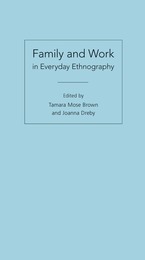 Family and Work in Everyday Ethnography
Tamara M. Brown
Temple University Press, 2013 Family and Work in Everyday Ethnography exposes the intimate relationship between ethnographers as both family members and researchers. The contributors to this exciting volume question and problematize the “artificial divide” between work and family that continues to permeate writing on ethnographic field work as social scientists try to juggle research and family tensions while “on the job.” Essays relate experiences that mirror work-family dilemmas that all employed parents face, and show how deeply personal experiences affect social scientists’ home life and their studies. Bringing together voices of various family members—pregnant women, mothers, fathers, and children—Family and Work in Everyday Ethnography demonstrates how the mixture of work and family in this particular occupation has raised questions—both practical and theoretical—that relate to race, class, and gender. Contributors include: Chris Bobel, Erynn Masi de Casanova, Randol Contreras, C. Aiden Downey, Tanya Golash-Boza, Steven Gold, Sherri Grasmuck, Barbara Katz Rothman, Jennifer Reich, Leah Schmalzbauer, Gregory Smithsimon, and the editors.
 The Family as Basic Social Unit: Living Out Catholic Social Teaching
Kevin Schemenauer
Catholic University of America Press, 2024 The Family as Basic Social Unit seeks to take seriously the claim that a family is a basic social unit. As a basic social unit, a family is both internally social, and socially interdependent with other communities. Since a family is a basic social unit, Schemenauer proposes that family life is a location for applying Catholic social teaching. Kevin Schemenauer specifically applies Catholic social principles concerning the dignity of work and peacemaking to household labor and violence among siblings, and he reflects on how individuals feed the hungry and care for the sick when they care for their family members. In the second part of the volume, Schemenauer describes the social interdependence of families. He analyzes the relationship between families and the Church, civil society, the economy, and the state. Schemenauer proposes that the question for families is not whether to engage with other social communities but how to do so well. He explicitly highlights how consumer capitalism creates obstacles for families attempting to live as a basic social unit. Then, employing the categories of infused simplicity and moral cooperation, he provides a framework for discerning family engagement with broader society. Finally, Schemenauer analyzes the relationship between family commitments and social ministry. Working from the family outward, Schemenauer describes how family commitments can motivate broader social service, but then employs the example of families involved in the Catholic Worker Movement to reflect on the joys and dangers of balancing commitment to one’s family with social ministry focused on the urgent needs of those outside of one’s household.
Family Bible
Melissa J. Delbridge
University of Iowa Press, 2008 "Swimming and sex seemed a lot alike to me when I was growing up. You took off most of your clothes to do them and you only did them with people who were the same color as you. As your daddy got richer, you got to do them in fancier places." Starting with her father, who never met a whitetail buck he couldn't shoot, a whiskey bottle he couldn't empty, or a woman he couldn't charm, and her mother, who "invented road rage before 1960," Melissa Delbridge introduces us to the people in her own family bible. Readers will find elements of Southern Gothic and familiar vernacular characters, but Delbridge endows each with her startling and original interpretation. In this disarmingly unguarded and unapologetic memoir, she shows us what really happened in the "stew of religion and sex" that was 1960s Tuscaloosa.
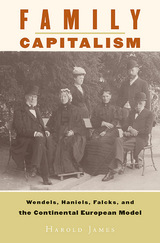 Family Capitalism: Wendels, Haniels, Falcks, and the Continental European Model
Harold James
Harvard University Press, 2006 This history of three powerful family firms located in different European countries takes place over a period of more than two hundred years. The interplay and the changing social and legal arrangements of the families shaped the development of a European capitalism quite different from the Anglo-American variety.
Qualifying claims by Alfred Chandler and David Landes that family firms tend to be dysfunctional, Harold James shows how and why these steel and engineering firms were successful over long periods of time. Indeed, he sees the family enterprise as particularly conducive to managing risk during periods of upheaval and uncertainty when both states and markets are disturbed. He also identifies the key roles played by women executives during such times.
In Family Capitalism, James tells how "iron masters" of a classical industrial cast were succeeded by new generations who wanted to shift to information-age systems technologies, and how families and firms wrestled with social and economic changes that occasionally tore them apart. Finally, the author shows how the trajectories of the firms were influenced by political, military, economic, and social events and how these firms illuminate a European model of "relationship capitalism."
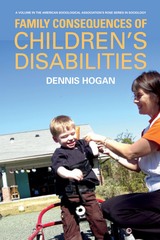 Family Consequences of Children’s Disabilities
Denis P. Hogan
Russell Sage Foundation, 2012 The Americans with Disabilities Act (ADA) and other national policies are designed to ensure the greatest possible inclusion of people with disabilities in all aspects of American life. But as a matter of national policy we still place the lion's share of responsibility for raising children with disabilities on their families. While this strategy largely works, sociologist Dennis Hogan maintains, the reality is that family financial security, the parents' relationship, and the needs of other children in the home all can be stretched to the limit. In Family Consequences of Children's Disabilities Hogan delves inside the experiences of these families and examines the financial and emotional costs of raising a child with a disability. The book examines the challenges families of children with disabilities encounter and how these challenges impact family life. The first comprehensive account of the families of children with disabilities, Family Consequences of Children's Disabilities employs data culled from seven national surveys and interviews with twenty-four mothers of children with disabilities, asking them questions about their family life, social supports, and how other children in the home were faring. Not surprisingly, Hogan finds that couples who are together when their child is born have a higher likelihood of divorcing than other parents do. The potential for financial insecurity contributes to this anxiety, especially as many parents must strike a careful balance between employment and caregiving. Mothers are less likely to have paid employment, and the financial burden on single parents can be devastating. One-third of children with disabilities live in single-parent households, and nearly 30 percent of families raising a child with a disability live in poverty. Because of the high levels of stress these families incur, support networks are crucial. Grandparents are often a source of support. Siblings can also assist with personal care and, consequently, tend to develop more helpful attitudes, be more inclusive of others, and be more tolerant. But these siblings are at risk for their own health problems: they are three times more likely to experience poor health than children in homes where there is no child with a disability. Yet this book also shows that raising a child with a disability includes unexpected rewards—the families tend to be closer, and they engage in more shared activities such as games, television, and meals. Family Consequences of Children's Disabilities offers access to a world many never see or prefer to ignore. The book provides vital information on effective treatment, rehabilitation, and enablement to medical professionals, educators, social workers, and lawmakers. This compelling book demonstrates that every mirror has two faces: raising a child with a disability can be difficult, but it can also offer expanded understanding. A Volume in the American Sociological Association's Rose Series in Sociology
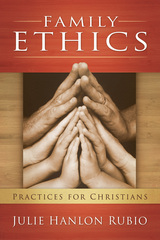 Family Ethics: Practices for Christians
Julie Hanlon Rubio
Georgetown University Press, 2010 How can ordinary Christians find moral guidance for the mundane dilemmas they confront in their daily lives? To answer this question, Julie Hanlon Rubio brings together a rich Catholic theology of marriage and a strong commitment to social justice to focus on the place where the ethics of ordinary life are played out: the family. Sex, money, eating, spirituality, and service. According to Rubio, all are areas for practical application of an ethics of the family. In each area, intentional practices can function as acts of resistance to a cultural and middle-class conformity that promotes materialism over relationships. These practices forge deep connections within the family and help families live out their calling to be in solidarity with others and participate in social change from below. It is through these everyday moral choices that most Christians can live out their faith—and contribute to progress in the world.
 Family Fantasies and Community Space
Aitken, Stuart C
Rutgers University Press, 1998 Family forms are changing rapidly in Western society, and with them, the microenvironments within which men, women, and children live together. Stuart Aitken argues that, whether environment is taken as physical space or as a metaphor for the social, economic, and psychological basis of families, there remains a tendency to keep defining the meaning of families and communities in terms of older, traditional, "imagined," and idealized structures of politics, gender, and geography. Using the stories of several families in San Diego, Aitken describes geographies of everyday life that contest definitions of cities and communities as mosaics reflecting patterns of social relations. He begins inside the family circle, looking at patriarchal power and the subordination of women, men, and children. Moving beyond the household, he then stresses the importance of place in defining the social and political character of communities and families' interplay within them--whether "communities" are viewed as neighborhoods, towns, or organizations that provide space for fellowship and common purpose. In turn, he shows that as the individual child reaches beyond family life to find a place in these communities, political cultures are reproduced through the child. Aitken suggests ways in which individual and family identities are complexly intertwined with the cultural politics of communities, cities, and regions. He concludes that family and community spaces reproduce and reconstruct themselves daily according to divisions of race, class, gender, and differential access to housing, work, and child-care.
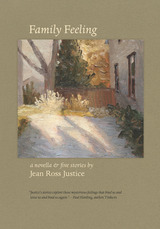 Family Feeling
Jean Ross Justice
University of Iowa Press, 2014 Jean Ross Justice’s Family Feeling, a novella and collection of stories, is a moving portrait of American domestic life of the last half-century. Often spanning generations, the stories are defined by subtle shifts in both family relationships and the ways in which we reconfigure them in memory and mind.
Many of the stories revolve around end-of-life scenes. An elderly man is visited by his middle-aged son’s young second wife and child, whom the son has temporarily abandoned in order to tend to his dying ex-wife. A recently widowed woman faces a complicated relationship with a troubled home health-care worker who had been uncommonly kind to her dying husband. Four middle-aged siblings reconvene in their childhood home to attend to the death of their father and find themselves simultaneously children of, and parents to, their own parents.
The unobtrusive historical breadth of the stories is remarkable. Reflecting back to Depression-era southern America from the perspective of the early twenty-first century, the characters provide us with an intimate view of the changing cultural landscape of our country. Issues of class are not merely ideological here—they are fluid and intricate aspects of fate and of soul.
Justice’s prose is characterized by quiet humor and attention to gesture. The deeply self-reflective and self-contained narrators offer us a window into issues of aging and mortality that is real and rare. In the manner of Alice Munro or William Trevor, Jean Ross Justice’s thought-driven fiction centers on pivotal moments of action or conversation that haunt—or reverberate—for decades.
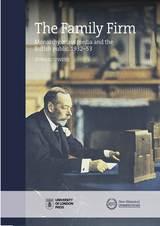 The Family Firm: monarchy, mass media and the British public, 1932-53
Edward Owens
University of London Press, 2019 The Family Firm presents the first major historical analysis of the transformation of the royal household’s public relations strategy in the period 1932-1953. Beginning with King George V’s first Christmas broadcast, Buckingham Palace worked with the Church of England and the media to initiate a new phase in the House of Windsor’s approach to publicity. This book also focuses on audience reception by exploring how British readers, listeners, and viewers made sense of royalty’s new media image. It argues that the monarchy’s deliberate elevation of a more informal and vulnerable family-centred image strengthened the emotional connections that members of the public forged with the royals, and that the tightening of these bonds had a unifying effect on national life in the unstable years during and either side of the Second World War. Crucially, The Family Firm also contends that the royal household’s media strategy after 1936 helped to restore public confidence in a Crown that was severely shaken by the abdication of King Edward VIII.
 Family Firm to Modern Multinational: Norton Company
Charles W. Cheape
Harvard University Press, 1985 From its beginnings in the 1880s as a thrifty New England family enterprise, Norton Company has played an important role in the business and technological history of the United States. It came on the scene with a new product vital to the rapidly industrializing economy, man-made abrasive materials, and by World War I was among the nation's 400 largest industrial enterprises. The firm had become multinational by 1910, and by 1980 it employed over 25,000 people in 120 plants in 28 countries. This 100-year-old billion-dollar enterprise provides us with many insights into the character of the select group of five hundred or a thousand large, integrated, often multinational companies that have shaped and dominated the core industries of the American economy in the last century.
Yet Norton is intriguing as a case study because of its obvious differences from other firms during much of its existence. By World War I, most modern multinationals were publicly owned and professionally managed, but only in the last two decades, amid the challenges of diversification and decentralization, did the company evolve from a family-owned enterprise to public ownership and professional managers. Norton's history, so carefully detailed here from company records and interviews, illustrates both the continuity and change important in the evolution of large-scale business enterprise in the United States.
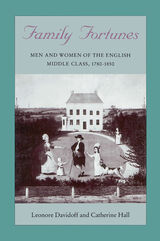 Family Fortunes: Men and Women of the English Middle Class, 1780-1850
Leonore Davidoff and Catherine Hall
University of Chicago Press, 1987 "Family Fortunes is a major groundbreaking study that will become a classic in its field. I was fascinated by the information it provided and the argument it established about the role of gender in the construction of middle-class values, family life, and property relations.
"The book explores how the middle class constructed its own institutions, material culture and values during the industrial revolution, looking at two settings—urban manufacturing Birmingham and rural Essex—both centers of active capitalist development. The use of sources is dazzling: family business records, architectural designs, diaries, wills and trusts, newspapers, prescriptive literature, sermons, manuscript census tracts, the papers of philanthropic societies, popular fiction, and poetry.
"Family Fortunes occupies a place beside Mary Ryan's The Cradle of the Middle Class and Suzanne Lebsock's Free Women of Petersburg. It provides scholars with a definitive study of the middle class in England, and facilitates a comparative perspective on the history of middle-class women, property, and the family."—Judith Walkowitz, Johns Hopkins University
 Family Frames: Photography, Narrative, and Postmemory
Marianne Hirsch
Harvard University Press, 1997 Family photographs--snapshots and portraits, affixed to the refrigerator or displayed in gilded frames, crammed into shoeboxes or cataloged in albums--preserve ancestral history and perpetuate memories. Indeed, photography has become the family's primary means of self-representation. In Family Frames Marianne Hirsch uncovers both the deception and the power behind this visual record.
Hirsch provocatively explores the photographic conventions for constructing family relationships and discusses artistic strategies for challenging those constructions. When we capture our family photographically, we are often responding to an idealized image. Contemporary artists and writers, Hirsch shows, have exposed the gap between lived reality and a perceived ideal to witness contradictions that shape visual representations of parents and children, siblings, lovers, or extended families. Exploring fiction, "imagetexts," and photographic essays, she elucidates their subversive devices, giving particular attention to literal and metaphorical masks. While permitting false impressions and misreadings, family photos have also proved a powerful means for shaping personal and cultural memory. Hirsch highlights a striking example: the wide variety of family pictures surviving the Holocaust and the wrenching displacements of late-twentieth-century history. Whether personal treasures, artistic constructions, or museum installations, these images link private memory to collective history.
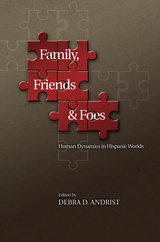 Family, Friends and Foes: Human Dynamics in Hispanic Worlds
Debra D. Andrist
Sussex Academic Press, 2022 Jigsaw puzzles' notorious complexity and mega-multiple,amorphously-shaped pieces provide an appropriate metaphor for the navigating and maneuvering necessary throughout all aspects of human dynamics. Involvement comprises not only efforts by an individual personally trying to fit together a life of relationships withFamily, Friends Foes;within complex categories and different levels, but the efforts by groups of individuals within those categories, progressively, by those groups within a larger society and/or societies, and then, across so many so-called boundaries: geographic, ethnic, linguistic, artistic, and more. Such is the starting point for this particular collection of essays, which focuses on the human dynamics in cultures characterized, mostly linguistically, as Hispanic worlds, and those cultures both in real life and in terms of cultural productions such as movies, visual art and literature.
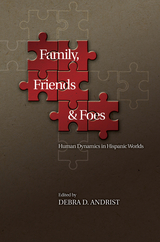 Family, Friends and Foes: Human Dynamics in Hispanic Worlds
Debra D. Andrist
Sussex Academic Press, 2022 Jigsaw puzzles' notorious complexity and mega-multiple,amorphously-shaped pieces provide an appropriate metaphor for the navigating and maneuvering necessary throughout all aspects of human dynamics. Involvement comprises not only efforts by an individual personally trying to fit together a life of relationships withFamily, Friends Foes;within complex categories and different levels, but the efforts by groups of individuals within those categories, progressively, by those groups within a larger society and/or societies, and then, across so many so-called boundaries: geographic, ethnic, linguistic, artistic, and more. Such is the starting point for this particular collection of essays, which focuses on the human dynamics in cultures characterized, mostly linguistically, as Hispanic worlds, and those cultures both in real life and in terms of cultural productions such as movies, visual art and literature.
Family History Record Book
James Bell
University of Minnesota Press, 1980
The Family History Record Book was first published in 1980.The Family History Record Book is designed to provide tools for research into your family’s history. Following the principles outlined in Searching for Your Ancestors, James B. Bell, a historian and lecturer, has collected charts and forms that will help organize your information. He provides detailed instructions on how to request specific information from various sources (census, immigration and naturalization, land, military, and church records) and how to use the forms for simple and efficient record keeling. This step-by-step system will be a valuable aid for both beginning and experienced genealogists.
The Family Idiot: Gustave Flaubert, 1821–1857, An Abridged Edition
Jean-Paul Sartre
University of Chicago Press, 2023 An approachable abridgment of Sartre’s important analysis of Flaubert.
From 1981 to 1994, the University of Chicago Press published a five-volume translation of Jean-Paul Sartre’s The Family Idiot: Gustave Flaubert, 1821-1857, a sprawling masterwork by one of the greatest intellects of the twentieth century. This new volume delivers a compact abridgment of the original by renowned Sartre scholar, Joseph Catalano.
Sartre claimed that his existential approach to psychoanalysis required a new Freud, and in his study of Gustave Flaubert, Sartre becomes that Freud. The work summarizes Sartre’s overarching aim to reveal that human life is a meaningful adventure of freedom. In discussing Flaubert’s work, particularly his classic novel Madame Bovary, Sartre unleashes a fierce critique of modernity as nihilistic and demeaning of human dignity.
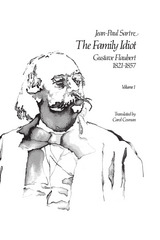 The Family Idiot: Gustave Flaubert, 1821-1857, Volume 1
Jean-Paul Sartre
University of Chicago Press, 1981 That Sartre's study of Flaubert, The Family Idiot, is a towering achievement in intellectual history has never been disputed. Yet critics have argued about the precise nature of this novel, or biography, or "criticism-fiction" which is the summation of Sartre's philosophical, social, and literary thought. Sartre writes, simply, in the preface to the book: "The Family Idiot is the sequel to The Question of Method. The subject: what, at this point in time, can we know about a man? It seemed to me that this question could only be answered by studying a specific case."
"A man is never an individual," Sartre writes, "it would be more fitting to call him a universal singular. Summed up and for this reason universalized by his epoch, he in turn resumes it by reproducing himself in it as singularity. Universal by the singular universality of human history, singular by the universalizing singularity of his projects, he requires simultaneous examination from both ends." This is the method by which Sartre examines Flaubert and the society in which he existed.
Now this masterpiece is being made available in an inspired English translation that captures all the variations of Sartre's style—from the jaunty to the ponderous—and all the nuances of even the most difficult ideas. Volume 1 consists of Part One of the original French work, La Constitution, and is primarily concerned with Flaubert's childhood and adolescence.
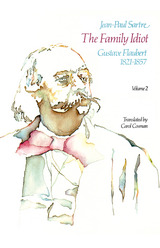 The Family Idiot: Gustave Flaubert, 1821-1857, Volume 2
Jean-Paul Sartre
University of Chicago Press, 1987 Seen by many as the culmination of Sartre's thought and project, and viewed by Sartre himself as an attempt to answer the question, "What, at this point in time, can we know about a man?" this monumental work continues to perplex its fascinated critics and admirers, who have argued about its precise nature. However, as reviews of the first volume in this translation agreed, whatever The Family Idiot may be called—"a dialectic" (Fredric Jameson, New York Times Book Review); "biography, philosophy, or politics? Surely . . . all of these together" (Renee Winegarten, Commentary); "a new form of fiction?" (Victor Brombert, Times Literary Supplement); or simply, "mad, of course" (Julian Barnes, London Review of Books)—its prominent place in intellectual history is indisputable.
Volume 2, consisting of the first book of part 2 of the original French work, takes the reader through Flaubert's adolescence well into his evolution as an artist. Sartre's approach to his complex subject, whether jaunty or ponderous, psychoanalytical or political, is captured in all of its rich variety of Carol Cosman's translation.
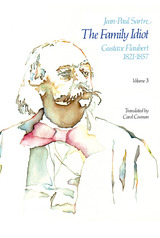 The Family Idiot: Gustave Flaubert, 1821-1857, Volume 3
Jean-Paul Sartre
University of Chicago Press, 1989 Seen by many as the culmination of Sartre's thought and project, and viewed by Sartre himself as an attempt to answer the question, "What, at this point in time, can we know about a man?" this monumental work continues to perplex its fascinated critics and admirers, who have argued about its precise nature. However, as reviews of the first volume in this translation agreed, whatever The Family Idiot may be called—"a dialectic" (Fredric Jameson, New York Times Book Review); "biography, philosophy, or politics? Surely . . . all of these together" (Renee Winegarten, Commentary); "a new form of fiction?" (Victor Brombert, Times Literary Supplement); or simply, "mad, of course" (Julian Barnes, London Review of Books)—its prominent place in intellectual history is indisputable.
Volume 3 consists of "School Years" and "Preneurosis," which are the second and third books of part 2 of the original French work. In vivid detail, Sartre renders Flaubert's secondary-school experiences and relationships: his part in a student rebellion against the faculty, his teenage infatuation with Romantic literature, his friendships and rivalries with his classmates, and the ironies inherent in the schoolboys' bourgeois existence. Sartre then discusses Flaubert's years at law school, where he studied at his father's insistence. This volume also contains Sartre's most sustained analysis of Madame Bovary. Sartre's approach to his complex subject, whether jaunty or judicious, psychoanalytical or political, is captured in all of its rich variety in Carol Cosman's translation.
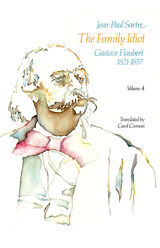 The Family Idiot: Gustave Flaubert, 1821-1857, Volume 4
Jean-Paul Sartre
University of Chicago Press, 1991 Seen by many as the culmination of Sartre's thought and project, and viewed by Sartre himself as an attempt to answer the question, "What, at this point in time, can we know about a man?" this monumental work continues to perplex its fascinated critics and admirers, who have argued about its precise nature. However, as reviews of the first volume in this translation agreed, whatever The Family Idiot may be called—"a dialectic" (Fredric Jameson, New York Times Book Review); "biography, philosophy, or politics? Surely . . . all of these together" (Renee Winegarten, Commentary); "a new form of fiction?" (Victor Brombert, Times Literary Supplement); or simply, "mad, of course" (Julian Barnes, London Review of Books)—its prominent place in intellectual history is indisputable.
Volume 4 consists of part three, books one and two, of the original French work. This volume, the fourth in a projected five-volume English-language edition, includes Sartre's discussion of the onset of Flaubert's illness, or neurosis, in 1844, and a significant reading of his L'Education sentimentale.
Sartre's approach to his complex subject, whether jaunty or judicious, psychoanalytic or political, is captured in all of its rich variety in Carol Cosman's translation.
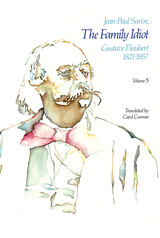 The Family Idiot: Gustave Flaubert, 1821-1857, Volume 5
Jean-Paul Sartre
University of Chicago Press, 1993 With this volume, the University of Chicago Press completes its translation of a work that is indispensable not only to serious readers of Flaubert but to anyone interested in the last major contribution by one of the twentieth century's greatest thinkers.
That Sartre's study of Flaubert, The Family Idiot, is a towering achievement in intellectual history has never been disputed. Yet critics have argued about the precise nature of this novel or biography or "criticism-fiction" which is the summation of Sartre's philosophical, social, and literary thought. In the preface, Sartre writes: "The Family Idiot is the sequel to Search for a Method. The subject: what, at this point in time, can we know about a man? It seemed to me that this question could only be answered by studying a specific case."
Sartre discusses Flaubert's personal development, his relationship to his family, his decision to become a writer, and the psychosomatic crisis or "conversion" from his father's domination to the freedom of his art. Sartre blends psychoanalysis with a sociological study of the ideology of the period, the crisis in literature, and Flaubert's influence on the future of literature.
While Sartre never wrote the final volume he envisioned for this vast project, the existing volumes constitute in themselves a unified work—one that John Sturrock, writing in the Observer, called "a shatteringly fertile, digressive and ruthless interpretation of these few cardinal years in Flaubert's life."
"A virtuoso perfomance. . . . For all that this book does to make one reconsider his life, The Family Idiot is less a case study of Flaubert than it is a final installment of Sartre's mythology. . . . The translator, Carol Cosman, has acquitted herself brilliantly."—Frederick Brown, New York Review of Books
"A splendid translation by Carol Cosman. . . . Sartre called The Family Idiot a 'true novel,' and it does tell a story and eventually reach a shattering climax. The work can be described most simply as a dialectic, which shifts between two seemingly alternative interpretations of Flaubert's destiny: a psychoanalytic one, centered on his family and on his childhood, and a Marxist one, whose guiding themes are the status of the artist in Flaubert's period and the historical and ideological contradictions faced by his social class, the bourgeoisie."—Fredric Jameson, New York Times Book Review
Jean-Paul Sartre (1906-1980) was offered, but declined, the Nobel Prize for literature in 1964. His many works of fiction, drama, and philosophy include the monumental study of Flaubert, The Family Idiot, and The Freud Scenario, both published in translation by the University of Chicago Press.
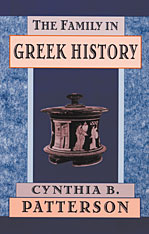 The Family in Greek History
Cynthia B. Patterson
Harvard University Press, 2001 The family, Cynthia Patterson demonstrates, played a key role in the political changes that mark the history of ancient Greece. From the archaic society portrayed in Homer and Hesiod to the Hellenistic age, the private world of the family and household was integral with and essential to the civic realm.
Early Greek society was rooted not in clans but in individual households, and a man's or woman's place in the larger community was determined by relationships within those households. The development of the city-state did not result in loss of the family's power and authority, Patterson argues; rather, the protection of household relationships was an important element of early public law. The interaction of civic and family concerns in classical Athens is neatly articulated by the examples of marriage and adultery laws. In law courts and in theater performances, violation of marital relationships was presented as a public danger, the adulterer as a sexual thief. This is an understanding that fits the Athenian concept of the city as the highest form of family. The suppression of the cities with the ascendancy of Alexander's empire led to a new resolution of the relationship between public and private authority: the concept of a community of households, which is clearly exemplified in Menander's plays. Undercutting common interpretations of Greek experience as evolving from clan to patriarchal state, Patterson's insightful analysis sheds new light on the role of men and women in Greek culture.
The Family in Question: Immigrant and Ethnic Minorities in Multicultural Europe
Ralph Grillo
Amsterdam University Press, 2008
The family lives of immigrants and ethnic minority populations have become central to arguments about the right and wrong ways of living in multicultural societies. While the characteristic cultural practices of such families have long been scrutinized by the media and policy makers, these groups themselves are beginning to reflect on how to manage their family relationships in a world where migration is a transnational piece of the pluralized global puzzle. Exploring case studies from Austria, the Netherlands, Norway, Portugal, Spain, Switzerland, the United Kingdom, and Australia, The Family in Question explores how those in public policy often dangerously reflect the popular imagination, xenophobically stereotyping immigrants and their families, rather than recognizing the complex changes taking place within the global immigrant community.
The Family in Soviet Russia
H. Kent Geiger
Harvard University Press Drawing on Soviet accounts, published and unpublished Western materials, numerous interviews, and personal observations, H. Kent Geiger presents a study of the family in the USSR from the Revolution to the present. His analysis is pursued from several vantage points: the family unit as an idea and ideal, the family as a social institution in the context of a totalitarian society, and the family in terms of individual members' opportunities and problems. This vivid portrait of Soviet life at the grass roots level touches upon dimensions of Soviet society, such as marital difficulties and class differences, which have previously been virtually unknown.
 Family in the Time of COVID: International Perspectives
Edited by Katherine Twamley, Humera Iqbal, and Charlotte Faircloth
University College London, 2023 A global study of the effect of COVID-19 on families.
COVID-19 turned the world as we knew it upside down, impacting families around the world in profound ways. Seeking to understand this global experience, Family in the Time of COVID brings together case studies from ten countries across the world that explore how local responses to the pandemic shaped and were shaped by understandings and practices of family life.
Carried out by an international team during the first year of the pandemic, these in-depth, longitudinal, qualitative investigations examined the impact of the pandemic on families and relationships across diverse contexts and cultures. They looked at how families made sense of complex lockdown laws, how they coped with collective worry about the unknown, managed their finances, fed themselves, and got to grips with online work and schooling to understand better how life had transformed (or not). In short, the research revealed their everyday joys and struggles in times of great uncertainty.
Each case study follows the same methodology revealing experiences in Argentina, Chile, Pakistan, Russia, Singapore, South Africa, Sweden, Taiwan, the United Kingdom, and the United States. They show how local government responses were understood and responded to by families and how different cultures and life circumstances impacted everyday life during the pandemic. Ultimately the analysis demonstrates how experiences of global social upheaval are shaped by international and local policies, as well as the sociocultural ideas and practices of diverse families.
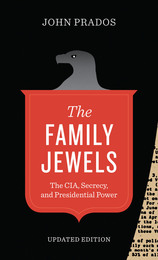 The Family Jewels: The CIA, Secrecy, and Presidential Power
By John Prados
University of Texas Press, 2014 In December 1974, a front-page story in the New York Times revealed the explosive details of illegal domestic spying by the Central Intelligence Agency. This included political surveillance, eavesdropping, detention, and interrogation. The revelation of illegal activities over many years shocked the American public and led to investigations of the CIA by a presidential commission and committees in both houses of Congress, which found evidence of more abuse, even CIA plans for assassinations. Investigators and the public soon discovered that the CIA abuses were described in a top-secret document agency insiders dubbed the “Family Jewels.” That document became ground zero for a political firestorm that lasted more than a year. The “Family Jewels” debacle ultimately brought about greater congressional oversight of the CIA, but excesses such as those uncovered in the 1970s continue to come to light. The Family Jewels probes the deepest secrets of the CIA and its attempts to avoid scrutiny. John Prados recounts the secret operations that constituted “Jewels” and investigators’ pursuit of the truth, plus the strenuous efforts—by the agency, the executive branch, and even presidents—to evade accountability. Prados reveals how Vice President Richard Cheney played a leading role in intelligence abuses and demonstrates that every type of “Jewel” has been replicated since, especially during the post-9/11 war on terror. The Family Jewels masterfully illuminates why these abuses are endemic to spying, shows that proper relationships are vital to control of intelligence, and advocates a system for handling “Family Jewels” crises in a democratic society. With a new epilogue that discusses former CIA employee Edward Snowden’s revelation of massive covert surveillance by the NSA, this powerful accounting of intelligence abuses committed by the CIA from the Cold War through the war on terror reveals why such abuses and attempts to conceal them are endemic to spying and proposes how a democratic nation can rein in its spymasters.
Family Kaleidoscope
Salvador Minuchin
Harvard University Press, 1984 With characteristic insight, compassion, and dry humor, the grand master of family therapy Salvador Minuchin challenges us to meditate on some of the most perplexing—and profound—questions of the day: Why is our image of the ideal family so far from the common reality? When we have such a rich literature of individual psychology, why is the family comparatively neglected? Why does our legal system promote confrontation rather than cooperation?
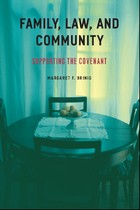 Family, Law, and Community: Supporting the Covenant
Margaret F. Brinig
University of Chicago Press, 2010 In the wake of vast social and economic changes, the nuclear family has lost its dominance, both as an ideal and in practice. Some welcome this shift, while others see civilization itself in peril—but few move beyond ideology to develop a nuanced understanding of how families function in society. In this provocative book, Margaret F. Brinig draws on research from a variety of disciplines to offer a distinctive study of family dynamics and social policy.
Concentrating on legal reform, Brinig examines a range of subjects, including cohabitation, custody, grandparent visitation, and domestic violence. She concludes that conventional legal reforms and the social programs they engender ignore social capital: the trust and support given to families by a community. Traditional families generate much more social capital than nontraditional ones, Brinig concludes, which leads to clear rewards for the children. Firmly grounded in empirical research, Family, Law, and Community argues that family policy can only be effective if it is guided by an understanding of the importance of social capital and the advantages held by families that accrue it.
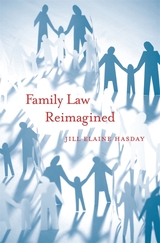 Family Law Reimagined
Jill Elaine Hasday
Harvard University Press, 2014 One of the law’s most important and far-reaching roles is to govern family life and family members. Family law decides who counts as kin, how family relationships are created and dissolved, and what legal rights and responsibilities come with marriage, parenthood, sibling ties, and other family bonds. Yet despite its significance, the field remains remarkably understudied and poorly understood both within and outside the legal community.
Family Law Reimagined is the first book to evaluate the canonical narratives, examples, and ideas that legal decisionmakers repeatedly invoke to explain family law and its governing principles. These stories contend that family law is exclusively local, that it repudiates market principles, that it has eradicated the imprint of common law doctrines which subordinated married women, that it is dominated by contract rules permitting individuals to structure their relationships as they choose, and that it consistently prioritizes children’s interests over parents’ rights. In this book, Jill Elaine Hasday reveals how family law’s canon misdescribes the reality of family law, misdirects attention away from the actual problems that family law confronts, and misshapes the policies that legal authorities pursue. She demonstrates how much of the “common sense” that decisionmakers expound about family law actually makes little sense.
Family Law Reimagined uncovers and critiques the family law canon and outlines a path to reform. Challenging conventional answers and asking questions that judges and lawmakers routinely overlook, it calls on us to reimagine family law.
The Family Letters of Victor and Meta Berger, 1894-1929
Michael E. Stevens
Wisconsin Historical Society Press, 1995 The Family Letters of Victor and Meta Berger provide an insider's view of congressional, labor and party politics as well as a glimpse into the marriage and family life of a prominent Wisconsin couple. Victor Berger helped create a well-organized political machine in Milwaukee that engineered his election to the U.S. House of Representatives six times and controlled the mayor's office for almost 50 years. His wife, Meta, an activist in her own right, served as a member of the Milwaukee school board and of the University of Wisconsin Board of Regents, and vigorously advocated on behalf of woman suffrage and peace. Mixing commentary on public affairs with family news and love notes, The Family Letters demonstrate how Victor and Meta were both interested observers as well as actors who sought to shape events in early twentieth century America.
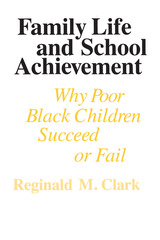 Family Life and School Achievement: Why Poor Black Children Succeed or Fail
Reginald M. Clark
University of Chicago Press, 1984 Working mothers, broken homes, poverty, racial or ethnic background, poorly educated parents—these are the usual reasons given for the academic problems of poor urban children. Reginald M. Clark contends, however, that such structural characteristics of families neither predict nor explain the wide variation in academic achievement among children. He emphasizes instead the total family life, stating that the most important indicators of academic potential are embedded in family culture.
To support his contentions, Clark offers ten intimate portraits of Black families in Chicago. Visiting the homes of poor one- and two-parent families of high and low achievers, Clark made detailed observations on the quality of home life, noting how family habits and interactions affect school success and what characteristics of family life provide children with "school survival skills," a complex of behaviors, attitudes, and knowledge that are the essential elements in academic success.
Clark's conclusions lead to exciting implications for educational policy. If school achievement is not dependent on family structure or income, parents can learn to inculcate school survival skills in their children. Clark offers specific suggestions and strategies for use by teachers, parents, school administrators, and social service policy makers, but his work will also find an audience in urban anthropology, family studies, and Black studies.
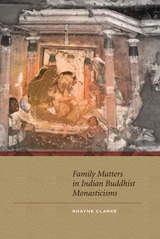 Family Matters in Indian Buddhist Monasticisms
Shayne Clarke
University of Hawaii Press, 2014 Scholarly and popular consensus has painted a picture of Indian Buddhist monasticism in which monks and nuns severed all ties with their families when they left home for the religious life. In this view, monks and nuns remained celibate, and those who faltered in their “vows” of monastic celibacy were immediately and irrevocably expelled from the Buddhist Order. This romanticized image is based largely on the ascetic rhetoric of texts such as the Rhinoceros Horn Sutra. Through a study of Indian Buddhist law codes (vinaya), Shayne Clarke dehorns the rhinoceros, revealing that in their own legal narratives, far from renouncing familial ties, Indian Buddhist writers take for granted the fact that monks and nuns would remain in contact with their families.
The vision of the monastic life that emerges from Clarke's close reading of monastic law codes challenges some of our most basic scholarly notions of what it meant to be a Buddhist monk or nun in India around the turn of the Common Era. Not only do we see thick narratives depicting monks and nuns continuing to interact and associate with their families, but some are described as leaving home for the religious life with their children, and some as married monastic couples. Clarke argues that renunciation with or as a family is tightly woven into the very fabric of Indian Buddhist renunciation and monasticisms.
Surveying the still largely uncharted terrain of Indian Buddhist monastic law codes preserved in Sanskrit, Tibetan, and Chinese, Clarke provides a comprehensive, pan-Indian picture of Buddhist monastic attitudes toward family. Whereas scholars have often assumed that monastic Buddhism must be anti-familial, he demonstrates that these assumptions were clearly not shared by the authors/redactors of Indian Buddhist monastic law codes. In challenging us to reconsider some of our most cherished assumptions concerning Indian Buddhist monasticisms, he provides a basis to rethink later forms of Buddhist monasticism such as those found in Central Asia, Kaśmīr, Nepal, and Tibet not in terms of corruption and decline but of continuity and development of a monastic or renunciant ideal that we have yet to understand fully.
Family Matters in the British and American Novel
Andrea O’Reilly Herrera
University of Wisconsin Press, 1997 Contributors examine the literature that challenges widely held assumptions about the form of the family, familial authority patterns, and the function of courtship, marriage, and family life from the late eighteenth century to the present day. Topics include: the family as a microcosm of the larger political sphere in Charlotte Smith, Jane West, Elizabeth Fenwick, Mrs. Opie, and Mary Shelley, and alternatives to the nuclear patriarchal family in Charlotte Brontë, Harriet Jacobs, Elizabeth Barrett Browning, and Mary Louisa Molesworth.
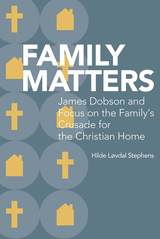 Family Matters: James Dobson and Focus on the Family’s Crusade for the Christian Home
Hilde Løvdal Stephens
University of Alabama Press, 2019 The first full-length study of a pivotal figure in American evangelical faith
James Dobson—child psychologist, author, radio personality, and founder of the Christian conservative organization Focus on the Family—published his first book, Dare to Discipline, in 1970 and quickly became the go-to family expert for evangelical parents across the United States as American evangelicalism rose as a major political force. The family expert became a leading voice in the Reagan Revolution, and played a role in making American evangelicals even more firmly associated with the Republican Party. Dobson’s principle beliefs are that the family is the center of Christian America and that the traditional family must be defended from perceived threats such as gay rights, feminism, abortion, and the secularization of public schools. Dobson and Focus on the Family dominated Christian media through print, radio, and online venues, and their message reached millions of American evangelical households, shaping the cultural sensibilities and political attitudes of evangelical families throughout the culture wars from the 1980s into the 2000s.
Family Matters: James Dobson and Focus on the Family’s Crusade for the Christian Home by Hilde Løvdal Stephens is an insightful history and analysis of James Dobson’s rise to fame, effect on American evangelical culture, and subsequent descent from relevance. Extensively researched, Løvdal Stephens scoured through Dobson’s books, articles, and other materials published by Focus on the Family in order to explore how evangelicals defined and defended the traditional family as an ideal and as a symbol in an ever-changing world.
By contextualizing the history of Dobson’s reign, Løvdal Stephens’s discerning analysis fills an important gap in our understandings of the politics and culture of late twentieth-century conservative Christianity in the United States. She explores complex topics ranging from Dobson’s celebration of what he believes are timeless biblical values, such as maintaining strict and defined gender roles, to the ways Dobson and Focus on the Family balanced their basic ideals with real everyday lives of average American evangelical families, facing the realities of divorce, working mothers, and other perceived threats to the traditional family.
 Family Matters: Secrecy and Disclosure in the History of Adoption
E. Wayne Carp
Harvard University Press, 1998 Adoption is a hot topic--played out in the news and on TV talk shows, in advice columns and tell-all tales--but for the 25 million Americans who are members of the adoption triad of adoptees, adoptive parents, and birth parents, the true story of adoption has not been told until now. Family Matters cuts through the sealed records, changing policies, and conflicting agendas that have obscured the history of adoption in America and reveals how the practice and attitudes about it have evolved from colonial days to the present.
Amid recent controversies over sealed adoption records and open adoption, it is ever more apparent that secrecy and disclosure are the defining issues in American adoptions--and these are also the central concerns of E. Wayne Carp's book. Mining a vast range of sources (including for the first time confidential case records of a twentieth-century adoption agency), Carp makes a startling discovery: openness, not secrecy, has been the norm in adoption for most of our history; sealed records were a post-World War II aberration, resulting from the convergence of several unusual cultural, demographic, and social trends.
Pursuing this idea, Family Matters offers surprising insights into various notions that have affected the course of adoption, among them Americans' complex feelings about biological kinship versus socially constructed families; the stigma of adoption, used at times to promote both openness and secrecy; and, finally, suspect psychoanalytic concepts, such as "genealogical bewilderment," and bogus medical terms, such as "adopted child syndrome," that paint all parties to adoption as psychologically damaged.
With an unswerving gaze and incisive analysis, Carp brings clarity to a subject often muddled by extreme emotions and competing agendas. His book is essential reading for adoptees and their adoptive and biological families, and for the countless others who follow their fortunes.
 The Family Meets the Depression: A Study of a Group of Highly Selected Families
Winona L. Morgan
University of Minnesota Press, 1939
The Family Meets the Depression was first published in 1939. Minnesota Archive Editions uses digital technology to make long-unavailable books once again accessible, and are published unaltered from the original University of Minnesota Press editions.
There have been very few studies of normal, happy family life. One such study, "The Family in the Present Social Order," by Ruth Lindquist, presented the circumstances of several hundred normal American families in 1927, one of the most prosperous years of our history.
The present investigation is a follow-up of Miss Lindquist's. Miss Morgan compares the circumstances of 331 of these families as they were in that year with those of the same families in 1933, which perhaps was the blackest year of the depression. The problems faced and the manner in which they were solved are carefully analyzed and presented in eminently readable form. Including as they do depleted incomes, lack of help in the household, dependent relatives, and health difficulties, these problems are in numerous ways typical of those faced by thousands of American families today.
The findings of this study should possess considerable significance not only for students of home economics but also for sociologists, parent educators, and psychologists concerned with problems of personal adjustment.
A Family Occupation: Children of the War and the Memory of World War II in Dutch Literature of the 1980s
Jolanda Vaderwal Taylor
Amsterdam University Press, 1997 Many of today's Dutch writers were children during World War II. Even today, the traumatic childhood experience of enemy occupation is still central to the work of many of them. This interest cuts across the traditional boundaries between fiction, autobiography and the literature of trauma and recovery. A Family Occupation is the first English-language introduction to Dutch-language texts written by and about the 'Children of the War' and their cultural context. Their themes and literary conventions throw an interesting light on the Dutch approach to issues such as guilt and innocence, memory and narrative, national identity, child abuse and victimhood.
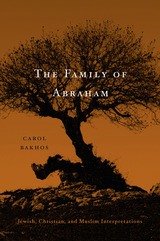 The Family of Abraham: Jewish, Christian, and Muslim Interpretations
Carol Bakhos
Harvard University Press, 2014 The term “Abrahamic religions” has gained considerable currency in both scholarly and ecumenical circles as a way of referring to Judaism, Christianity, and Islam. In The Family of Abraham, Carol Bakhos steps back from this convention to ask a frequently overlooked question: What, in fact, is Abrahamic about these three faiths? Exploring diverse stories and interpretations relating to the portrayal of Abraham, she reveals how he is venerated in these different scriptural traditions and how scriptural narratives have been pressed into service for nonreligious purposes.
Grounding her study in a close examination of ancient Jewish textual practices, primarily midrash, as well as medieval Muslim Stories of the Prophets and the writings of the early Church Fathers, Bakhos demonstrates that ancient and early-medieval readers often embellished the image of Abraham and his family—Sarah, Hagar, Ishmael, and Isaac. Her analysis dismantles pernicious misrepresentations of Abraham’s firstborn son, Ishmael, and provocatively challenges contemporary references to Judaism and Islam as sibling religions.
As Bakhos points out, an uncritical adoption of the term “Abrahamic religions” not only blinds us to the diverse interpretations and traditions of Judaism, Christianity, and Islam but also artificially separates these faiths from their historical contexts. In correcting mistaken assumptions about the narrative and theological significance of Abraham, The Family of Abraham sheds new light on key figures of three world religions.
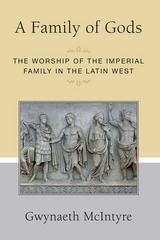 A Family of Gods: The Worship of the Imperial Family in the Latin West
Gwynaeth McIntyre
University of Michigan Press, 2016 Roman politics and religion were inherently linked as the Romans attempted to explain the world and their place within it. As Roman territory expanded and power became consolidated into the hands of one man, people throughout the empire sought to define their relationship with the emperor by granting honors to him. This collection of practices has been labeled “emperor worship” or “ruler cult,” but this tells only half the story: imperial family members also became an important part of this construction of power and almost half of the individuals deified in Rome were wives, sisters, children, and other family members of the emperor.
In A Family of Gods, Gwynaeth McIntyre expands current “ruler cult” discussions by including other deified individuals, and by looking at how communities in the period 44 BCE to 337 CE sought to connect themselves with the imperial power structure through establishing priesthoods and cult practices. This work focuses on the priests dedicated to the worship of the imperial family in order to contextualize their role in how imperial power was perceived in the provincial communities and the ways in which communities chose to employ religious practices. Special emphasis is given to the provinces in Gaul, Spain, and North Africa.
This book draws on epigraphic evidence but incorporates literary, numismatic, and archaeological evidence where applicable. It will be of interest to scholars of Roman imperial cult as well as Roman imperialism, and religious and political history.
Family Practice Stories: Memories, Reflections, and Stories of Hoosier Family Doctors of the Mid-Twentieth Century
Richard Feldman
Indiana Historical Society Press, 2013 An initiative of the Indiana Academy of Family Physicians and the Indiana Academy of Family Physicians Foundation, Family Practice Stories is a collection of tales told by, and about, Hoosier family doctors practicing in the middle of the twentieth century. The stories celebrate that time in America considered to be the golden age of generalism in medicine---a time that conjures up Norman Rockwell’s familiar archetypal images of the country family doctor and a time when the art of healing was at its zenith.
A Family Practice: The Russell Doctors and the Evolving Business of Medicine, 1799-1989
William D. Lindsey
University of Arkansas Press, 2020 A Family Practice is the sweeping saga of four generations of doctors, Russell men seeking innovative ways to sustain themselves as medical practitioners in the American South from the early nineteenth to the latter half of the twentieth century. The thread that binds the stories in this saga is one of blood, of medical vocations passed from fathers to sons and nephews. This study of four generations of Russell doctors is an historical study with a biographical thread running through it.
The authors take a wide-ranging look at the meaning of intergenerational vocations and the role of family, the economy, and social issues on the evolution of medical education and practice in the United States.
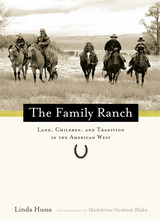 The Family Ranch: Land, Children, and Tradition in the American West
Linda Hussa
University of Nevada Press, 2010 Ranch families in the twenty-first century face many challenges, from competition with government-subsidized agribusiness corporations to tax laws that encourage development over agriculture and prevent the smooth transfer of land from one generation to the next. As a stabilizing force in the American West, ranch families play a critical role in our country, perhaps more so today than ever before, yet their stories have rarely been told. They contribute to our nation with the food they raise, the environments they protect, and the resources they manage, and they preserve our western heritage while holding the West open for the rest of us. In The Family Ranch, award-winning author Linda Hussa offers readers a personal, inside view into the lives of six diverse ranching families and the land that shapes their days and nights. Photographer Madeleine Graham Blake provides engaging and often moving images that portray each family at work and at play. With chapters on the critical issues that face each of them—from grazing rights and water use, to children's education and the emerging rural marketplace—these family profiles are set in a larger context. This is family ranching as it is now, a tracing of how it always was, but made far more complex in modern times. By combining their traditions with the tools of modern technology, these people strengthen the ideal of family and give the business of ranching a vibrant and viable future.The Family Ranch is rich in remarkable stories of what happens when parents, children, work, and nature come together for a lifetime of commitment. It speaks to urban and rural people in important ways, illuminating the realities of the western ranch and the people who make their living, and their lives, on it. Essential reading for people who love the West and care about its future. The Family Ranch inspires thoughts about tradition, values, and responsibility that are applicable to all communities.
Family Resilience in the Military: Definitions, Models, and Policies
Sarah O. Meadows
RAND Corporation, 2015 Most leaders in the Department of Defense (DoD) agree that family resilience is an important construct, yet DoD does not have a standard definition. The authors of this report review existing definitions of family resilience and offer a candidate definition for DoD use. They also review models of family resilience, identify key family resilience factors, and make recommendations for how DoD can manage family-resilience programs and policies.
Family Secrets: Risking Reproduction in Central Mozambique
Rachel R. Chapman
Vanderbilt University Press, 2010 Behind a thatched hut, a birthing woman bleeds to death only minutes from "life-saving" maternity care. Author Rachel Chapman begins Family Secrets with the deceptively simple question, "Why don't women in Mozambique use existing prenatal and maternity services?" then widens her analysis to include a whole universe of cultural, political, and economic forces. Fusing cultural anthropology with political economy, Chapman vividly demonstrates how neoliberalism and the increasing importance of the market have led to changing sexual and reproductive strategies for women.
Pregnant herself during her research, Chapman interviewed 83 women during pregnancy and postpartum. She discovered that the social relations surrounding traditional Shona practices, Christian faith healing, and Western biomedical treatments are as important to women's choices as the efficacy of the therapies.
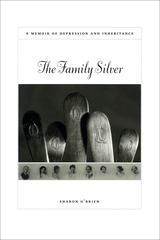 The Family Silver: A Memoir of Depression and Inheritance
Sharon O'Brien
University of Chicago Press, 2004 Finding herself struggling with depression ("like a rude houseguest, coming and going of its own accord"), Sharon O'Brien set out to understand its origins beyond the biochemical explanations and emotional narratives prevailing in contemporary American culture. Her quest for her inheritance took her straight into the pressures and possibilities of American culture, and then to the heart of her family—the generations who shaped and were shaped by one another and their moment in history. In The Family Silver, as O'Brien travels into her family's past, she goes beyond depression to discover courage, poetry, and grace.
A compassionate and engaging writer, O'Brien uses the biographer's methods to understand her family history, weaving the scattered pieces of the past—her mother's memo books, her father's reading journal, family photographs, tombstones, dance cards, hospital records, the family silver—into a compelling narrative. In the lives of her Irish-American relatives she finds that the American values of upward mobility, progress, and the pressure to achieve sparked both desire and depression, following her family through generations, across the sea, from the Irish famine of the 1840s to Harvard Yard in the late 1960s.
"Many people who write stories of depression or other chronic illnesses tell tales of recovery in the upward-mobility sense, the 'once I was ill, but now I am well' formula that we may find appealing, but doesn't match the messiness of our lives," she writes. "Mine is not such a tale. But it is a recovery tale in another sense—a story of salvage, of rescuing stories from silence." Told with humor and honesty, O'Brien's story will captivate all readers who want to know how they, and their families, have been shaped by the past.
Family System
Jack Christian
University Press of Colorado, 2012 Winner of the 2012 Colorado Prize for Poetry, selected by Elizabeth Willis
"Family System is one of the most specific and clarifying books of poetry I’ve ever read. It is filled with choices—made, to be made, not made—handled with a poetic understanding that what seems arbitrary will be inevitable when said with the right words while singing the right songs. This is a stand-out first book, introducing a first-rate original talent, doing powerful work, making quintessentially lyrical choices. Don’t miss this book.”
—Dara Wier
“It seems that Jack Christian’s brain is able to produce tiny lucid creatures, have them run and sprinkle over a map of an unknown world with joy, speed and delight. Even stranger, he’s somehow the spiritual offspring of very different ancestors: Pascal’s Esprit de Geometrie and Scandinavian mythology. ‘I was eulogizing a squirrel in a shoebox.’ Brilliant.”
—Tomaž Šalamun
Family Therapy Techniques
Salvador Minuchin and H. Charles Fishman
Harvard University Press, 1981 A master of family therapy, Salvador Minuchin, traces for the first time the minute operations of day-to-day practice. Dr. Minuchin has achieved renown for his theoretical breakthroughs and his success at treatment. Now he explains in close detail those precise and difficult maneuvers that constitute his art. The book thus codifies the method of one of the country’s most successful practitioners.
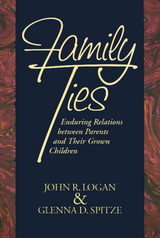 Family Ties
John R. Logan and Glenna D. Spitze
Temple University Press, 1997 While many studies focus on the impact of social change on younger generations, FGamily Ties deals comprehensively with family relationships over a longer period of the life cycle and reveals misconceptions about grown children caring for their aging parents. Glenna D. Spitze and John R. Logan offer conclusive evidence that relationships between parents and their adult children remain intact and challenge other myths of isolation and neglect of the older generation.
The authors reveal that parents are not dependent on help from their grown children, as was previously assumed; in fact they contribute more assistance than they receive until the age of seventy-five. Also, while daughters are still the dominant caregivers, other forms of support like visiting and providing transportation are given almost equally by sons and daughters.
Logan and Spitze also report that even though the day-to-day demands on adult children have increased with the changing economy, very few seem to be torn between these responsibilities and those those of caring for their parents. This book offers reassuring news about the strength of the American family in the midst of social change. Family Ties will be a valuable resource for anyone interested in intergenerational relationships in adulthood.
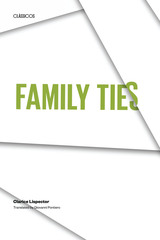 Family Ties
By Clarice Lispector
University of Texas Press, 1972 The silent rage that seizes a matriarch whose family is feting her eighty-ninth year.The tangle of emotions felt by a sophisticated young woman toward her elderly mother. An adolescent girl's obsessive fear of being looked at. The "giddying sense of compassion" that a blind man introduces into a young housewife's settled existence. Of such is made the world of Clarice Lispector, the Brazilian writer whose finest work is acknowledged to be her exquisitely crafted short stories. Here, in these thirteen of Lispector's most brilliantly conceived stories, mysterious and unexpected moments of crisis propel characters to self-discovery or keenly felt intuitions about the human condition. Her characters mirror states of mind. Alienated by their unsettling sense of life's absurdity, they seem at times absorbed in their interior lives and in the passions that dominate and usually defeat them. Giovanni Pontiero's translation has been lauded by Gregory Rabassa as "magnificent."
 The Family Today: A Guide for Leaders in Family Life Education
Dorothy T. Dyer
University of Minnesota Press, 1950
The Family Today was first published in 1950. Minnesota Archive Editions uses digital technology to make long-unavailable books once again accessible, and are published unaltered from the original University of Minnesota Press editions.
The problems and relationships of the modern family are becoming of increasing concern to educators, clinicians, social workers, ministers, and all other thoughtful citizens. To assist such school and community leaders, who can sponsor or direct programs in marriage and family life education, is the primary purpose of these twenty-two teaching and counseling projects. Although each project is designed to fit a specific group or situation, the materials and techniques suggested can be readily adapted to other groups. Especially helpful will be the extensive lists of pertinent reading materials and films.
The projects were worked out cooperatively by the students in Professor Dyer's course in family life education at the University of Minnesota in the summer of 1949. The fifteen members of the class were all professional counselors working in a variety of fields in widely separated sections of the country, and the usefulness of the book is greatly enhanced by this diversity.
 The Family Track: Keeping Your Faculties while You Mentor, Nurture, Teach, and Serve
Edited by Constance Coiner and Diana Hume George
University of Illinois Press, 1998 How do the necessities of caring for others deter, benefit, or redefine
research and teaching in higher education? What have universities done
to recognize the difficulties facing academic parents, single mothers
and fathers, graduate students, lesbian and gay couples? What pro-family
policies can be enacted during institutional budget crises?
At a time when the academy is an ever more demanding arbiter and shaper
of the lives of those it employs, The Family Track: Keeping Your Faculties
While You Mentor, Nurture, Teach, and Serve discusses the challenges
and benefits of balancing a rewarding professional life with the competing
needs to nurture children, care for aging parents, and engage in other
personal relationships. Here academic women and men explore issues that
include biological and tenure clocks, childcare and eldercare, surrogate
parenting of students, and increasing job demands. In telling stories
about the quality of their lives, they express their hopes, anxieties,
difficulties, and personal strategies for maintaining a delicate but achievable
balance.
"Lively, well-written, useful, and persuasive … The Family
Track reveals much on family roles within the academy and suggests
many specific projects and guidelines for Institutional change."
-- Judith Kegan Gardiner, editor of Provoking Agents: Gender and Agency
in Theory and Practice
 Family Transformed: Religion, Values, and Society in American Life
Steven M. Tipton and John Witte Jr., Editors
Georgetown University Press, 2005 Statistics on the American family are sobering. From 1975 to 2000, one-third of all children were born to single mothers, and one-half of all marriages ended in divorce. While children from broken homes are two to three times more likely to develop behavioral and learning difficulties, two-parent families are not immune to problems. The cost of raising children has increased dramatically, and married couples with children are now twice as likely as childless couples to file for bankruptcy. Clearly, the American family is in trouble. But how this trouble started, and what should be done about it, remain hotly contested. In a multifaceted analysis of the current state of a complex institution, Family Transformed brings together outstanding scholars from the fields of anthropology, demography, ethics, history, law, philosophy, primatology, psychology, sociology, and theology. Demonstrating that the family is both distinctive in its own right and deeply interwoven with other institutions, the authors examine the roles of education, work, leisure, consumption, legal regulation, public administration, and biology in shaping the ways we court and marry, bear and raise children, and make and break family bonds. International in approach, this wide-ranging volume situates current American debates over sex, marriage, and family within a global framework. Weighing mounting social science evidence that supports a continued need for the nuclear family while assessing the challenges posed by new advocacy for same-sex marriage, and delegalized coupling, the authors argue that only by reintegrating the family into a just moral order of the larger community and society can we genuinely strengthen it. This means not simply upholding traditional family values but truly grasping the family's growing diversity, sustaining its coherence, and protecting its fragility for our own sake and for the common good of society.
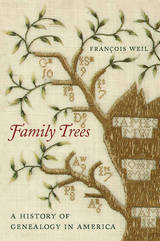 Family Trees: A History of Genealogy in America
François Weil
Harvard University Press, 2013 The quest for roots has been an enduring American preoccupation. Over the centuries, generations have sketched coats of arms, embroidered family trees, established local genealogical societies, and carefully filled in the blanks in their bibles, all in pursuit of self-knowledge and status through kinship ties. This long and varied history of Americans’ search for identity illuminates the story of America itself, according to François Weil, as fixations with social standing, racial purity, and national belonging gave way in the twentieth century to an embrace of diverse ethnicity and heritage.
Seeking out one’s ancestors was a genteel pursuit in the colonial era, when an aristocratic pedigree secured a place in the British Atlantic empire. Genealogy developed into a middle-class diversion in the young republic. But over the next century, knowledge of one’s family background came to represent a quasi-scientific defense of elite “Anglo-Saxons” in a nation transformed by immigration and the emancipation of slaves. By the mid-twentieth century, when a new enthusiasm for cultural diversity took hold, the practice of tracing one’s family tree had become thoroughly democratized and commercialized.
Today, Ancestry.com attracts over two million members with census records and ship manifests, while popular television shows depict celebrities exploring archives and submitting to DNA testing to learn the stories of their forebears. Further advances in genetics promise new insights as Americans continue their restless pursuit of past and place in an ever-changing world.
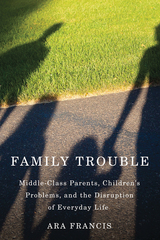 Family Trouble: Middle-Class Parents, Children's Problems, and the Disruption of Everyday Life
Francis, Ara
Rutgers University Press, 2015 Our children mean the world to us. They are so central to our hopes and dreams that we will do almost anything to keep them healthy, happy, and safe. What happens, then, when a child has serious problems? In Family Trouble, a compelling portrait of upheaval in family life, sociologist Ara Francis tells the stories of middle-class men and women whose children face significant medical, psychological, and social challenges.
Francis interviewed the mothers and fathers of children with such problems as depression, bi-polar disorder, autism, learning disabilities, drug addiction, alcoholism, fetal alcohol syndrome, and cerebral palsy. Children’s problems, she finds, profoundly upset the foundations of parents’ everyday lives, overturning taken-for-granted expectations, daily routines, and personal relationships. Indeed, these problems initiated a chain of disruption that moved through parents’ lives in domino-like fashion, culminating in a crisis characterized by uncertainty, loneliness, guilt, grief, and anxiety. Francis looks at how mothers and fathers often differ in their interpretation of a child’s condition, discusses the gendered nature of child rearing, and describes how parents struggle to find effective treatments and to successfully navigate medical and educational bureaucracies. But above all, Family Trouble examines how children’s problems disrupt middle-class dreams of the “normal” family. It captures how children’s problems “radiate” and spill over into other areas of parents’ lives, wreaking havoc even on their identities, leading them to reevaluate deeply held assumptions about their own sense of self and what it means to achieve the good life.
Engagingly written, Family Trouble offers insight to professionals and solace to parents. The book offers a clear message to anyone in the throes of family trouble: you are in good company, and you are not as different as you might feel...
 Family-Friendly Biking: in New Jersey and Eastern Pennsylvania
Goodspeed, Diane
Rutgers University Press, 2005 Do you love bike riding with your kids, but are tired of rides that take you in circles around the neighborhood block? Looking for something more exciting, yet still safe and manageable? Through years of research and a lot of trial and error with her own two children, Diane Goodspeed gives us the first biking book for this region geared specifically toward families with young kids. Packed with photos and easy-to-follow maps, Goodspeed shows us where to find nearly twenty-five kid-friendly trails—trails that are not too steep or too long, do not encounter many roads, and provide ample access to food and restroom facilities. You will find detailed information on popular New Jersey routes, including the Columbia Trail, Delaware & Raritan Canal Trail, Sussex Branch Trail, and Paulinskill Valley Trail, as well as undemanding rides through Duke Island Park, Hartshorne Woods, and Sandy Hook National Recreation Area. In eastern Pennsylvania, kids of all ages can peddle along the Lehigh Canal and the Delaware Canal and explore the many rambling paths of Tyler State Park. These and many more rides are rated according to a child’s biking skills and each one is accompanied by detailed descriptions of the area. And because kids are always full of questions, Goodspeed includes a short history and interesting "did you know?" facts for each region. Tips on equipment options, bike safety, and the nearest bathrooms, playgrounds, and ice cream shops make this book the definitive source for kid-tested, parent-approved biking fun. It is an essential guide for planning the most enjoyable and rewarding family bike excursions.
The Family’s Construction of Reality
David Reiss
Harvard University Press, 1981 David Reiss presents a new model of family interaction grounded in the subtle and complex way in which a family constructs its inner life and deals with the outside world. Based upon fifteen years of research, the book offers a new understanding of the covert processes that hold a family together and, with distressing frequency, pull it apart.
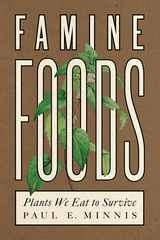 Famine Foods: Plants We Eat to Survive
Paul E. Minnis
University of Arizona Press, 2021 How people eat today is a record of food use through the ages—and not just the decadent, delicious foods but the less glamorous and often life-saving foods from periods of famine as well. In Famine Foods, Paul E. Minnis focuses on the myriad plants that have sustained human populations throughout the course of history, unveiling the those that people have consumed, and often still consume, to avoid starvation. For the first time, this book offers a fascinating overview of famine foods—how they are used, who uses them, and, perhaps most importantly, why they may be critical to sustain human life in the future.
In addition to a broader discussion of famine foods, Minnis includes fourteen short case studies that examine the use of alternative foods in human societies throughout the world, from hunter-gatherers to major nations. When environmental catastrophes, war, corrupt governments, annual hunger seasons, and radical agricultural policies have threatened to starve populations, cultural knowledge and memories of food shortages have been crucial to the survival of millions of people.Famine Foods dives deeply into the cultural contexts of famine food use, showing the curious, strange, and often unpleasant foods people have turned to in order to get by. There is not a single society or area of the world that is immune to severe food shortages, and gaining a deeper knowledge of famine foods will be relevant for the foreseeable future of humanity.
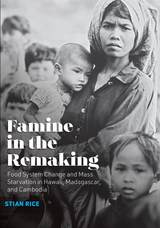 Famine in the Remaking: Food System Change and Mass Starvation in Hawaii, Madagascar, and Cambodia
Stian Rice
West Virginia University Press, 2020 Mass starvation’s causes may seem simple and immediate: crop failure, poverty, outbreaks of violence, and poor governance. But famines are complex, and scholars cannot fully understand what causes them unless they look at their numerous social and environmental precursors over long arcs of history and over long distances.
Famine in the Remaking examines the relationship between the reorganization of food systems and large-scale food crises through a comparative historical analysis of three famines: Hawaii in the 1820s, Madagascar in the 1920s, and Cambodia in the 1970s. This examination identifies the structural transformations—that is, changes to the relationships between producers and consumers—that make food systems more vulnerable to failure. Moving beyond the economic and political explanations for food crisis that have dominated the literature, Stian Rice emphasizes important socioecological interactions, developing a framework for crisis evolution that identifies two distinct temporal phases and five different types of causal mechanisms involved in food system failure. His framework contributes to current work in famine prevention and, animated by a commitment to social justice, offers the potential for early intervention in emerging food crises.
 Famine in the Soviet Ukraine 1932-1933: A Memorial Exhibition
Oksana Procyk, Leonid Heretz, and James E. Mace
Harvard University Press, 1986 This library exhibition catalogue is a survey of current knowledge about the Ukrainian Famine of 1932-1933. Intended to be a ready source of information and documentation as well as a guide for further research, this publication consists of a concise, well-illustrated historical narrative, a brief summary of scholarly research on the subject, excerpts from a wide range of sources, and an extensive bibliography.
The following aspects of the Famine and its historical context are presented: the Ukrainian Revolution 1917-1921; the development of Bolshevik policy toward the nationalities and the peasantry; the Ukrainian Socialist Soviet Republic arid the policy of Ukrainization; the Ukrainian cultural renaissance of the 1920s; Stalin's seizure of power--purges, collectivization, and industrialization; the Famine in the contemporary western press; the Famine in memoirs and published eyewitness accounts; the Famine in literature; and commemoration of the fiftieth anniversary of the Famine.
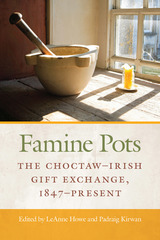 Famine Pots: The Choctaw–Irish Gift Exchange, 1847–Present
LeAnne Howe
Michigan State University Press, 2020 The remarkable story of the money sent by the Choctaw to the Irish in 1847 is one that is often told and remembered by people in both nations. This gift was sent to the Irish from the Choctaw at the height of the potato famine in Ireland, just sixteen years after the Choctaw began their march on the Trail of Tears toward the areas west of the Mississippi River. Famine Pots honors that extraordinary gift and provides further context about and consideration of this powerful symbol of cross-cultural synergy through a collection of essays and poems that speak volumes of the empathy and connectivity between the two communities. As well as signaling patterns of movement and exchange, this study of the gift exchange invites reflection on processes of cultural formation within Choctaw and Irish society alike, and sheds light on longtime concerns surrounding spiritual and social identities. This volume aims to facilitate a fuller understanding of the historical complexities that surrounded migration and movement in the colonial world, which in turn will help lead to a more constructive consideration of the ways in which Irish and Native American Studies might be drawn together today.
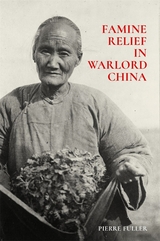 Famine Relief in Warlord China
Pierre Fuller
Harvard University Press, 2019 Famine Relief in Warlord China is a reexamination of disaster responses during the greatest ecological crisis of the pre-Nationalist Chinese republic. In 1920–1921, drought and ensuing famine devastated more than 300 counties in five northern provinces, leading to some 500,000 deaths. Long credited to international intervention, the relief effort, Pierre Fuller shows, actually began from within Chinese social circles. Indigenous action from the household to the national level, modeled after Qing-era relief protocol, sustained the lives of millions of the destitute in Beijing, in the surrounding districts of Zhili (Hebei) Province, and along the migrant and refugee trail in Manchuria, all before joint foreign-Chinese international relief groups became a force of any significance.
Using district gazetteers, stele inscriptions, and the era’s vibrant Chinese press, Fuller reveals how a hybrid civic sphere of military authorities working with the public mobilized aid and coordinated migrant movement within stricken communities and across military domains. Ultimately, the book’s spotlight on disaster governance in northern China in 1920 offers new insights into the social landscape just before the region’s descent, over the next decade, into incessant warfare, political struggle, and finally the normalization of disaster itself.
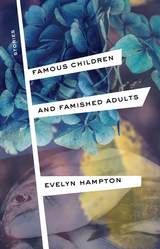 Famous Children and Famished Adults: Stories
Evelyn Hampton
University of Alabama Press, 2019 Winner of FC2’s Ronald Sukenick Innovative Fiction Prize
Stories that remap the world to reveal hidden places we have always suspected of existing and scenarios that show us glimpses of ourselves
In these stories, readers encounter a wizened, silent child; a documentary filmmaker lost in the Amazon; a writer physically overwhelmed by the amount of content she has generated; the disappearance of the world’s cats; and an enormous houseplant that has become quietly malevolent. Through these encounters, which are presented with insightful, intricate, and often very funny writing, readers come to know the scintillating zone where fiction and reality become indistinguishable.
Working in the tradition of voice impressionists like Maria Bamford, Hampton draws on a wide range of styles and voices to tell stories that seem at once familiar and strange, spoofed and invented. Readers who have enjoyed the work of Shirley Jackson, George Saunders, Lydia Davis, or Robert Walser will be at home in these pages, but so too will readers who have given up on fiction. These stories show us that insouciance can be beautiful, confusion can be intricate and ordered, and rule-breaking can be a discipline all its own.
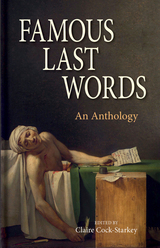 Famous Last Words: An Anthology
Edited by Claire Cock-Starkey
Bodleian Library Publishing, 2016 Which statesman was, by the end, “bored with it all?” Which world-renowned economist considered on his deathbed whether he ought to have been less abstemious, saying “I should have drunk more champagne.” Did Admiral Horatio Nelson, one of England’s greatest naval heroes, really utter “Kiss me, Hardy” to his captain just before his death in the Battle of Trafalgar?
Over the years, family and loved ones have recorded an extraordinary number of famous last words, from kings and queens to politicians, philosophers, scientists, writers, and actors. These exit lines can impart keen insights from an extraordinary life, reveal a sense of humor indomitable in even the darkest hours, or tell us something about a celebrated person’s last moments of life. Perhaps unavoidably given their provenance, many last words have proven irresistible to embellishment or remain in question. King Charles II, for example, was said to have instructed his brothers to “let not Poor Nelly starve,” asking that his favorite mistress be provided a pension of 1,500 pounds a year. Although she did indeed receive said pension, some contend that Charles’s actual last words, following a long period of illness, were, “You must pardon me, gentlemen, for being a most unconscionable time a-dying.”
For Famous Last Words, Claire Cock-Starkey has collected the most interesting, insightful, and controversial last words, from deathbed desperation to the fondest of farewells.
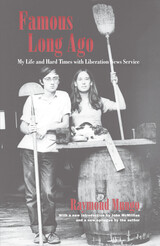 Famous Long Ago: My Life and Hard Times with Liberation News Service
Raymond Mungo
University of Massachusetts Press, 2012 Originally published in 1970, Raymond Mungo's picaresque account of his adventures with Liberation News Service in the wild years of 1967 and 1968 has been variously described as youthful, passionate, lyrical, demented, and an iconic symbol of the sixties counterculture. A review in The Nation described it as "hip Huck Finn."
A college editor at the height of the Vietnam War, Mungo found himself smack in the middle of a mad swirl of activism and dissent, vigorously protesting every-thing from the draft to abortion laws to the university itself. Then he connected with Marshall Bloom to cofound LNS in Washington, D.C., as a news service catering to the burgeoning underground press. One thing led to another, until LNS, like so many other radical organizations, eventually disintegrated into violently warring factions. Mungo's memoir tracks its development and destruction with wicked humor and literary panache.
In an introduction to this new edition, John McMillian discusses the enduring appeal of Famous Long Ago and situates it within its broader historical context, while the author provides his own retrospective take in a new afterword.
Famous Women
Giovanni BoccaccioTranslated by Virginia Brown
Harvard University Press, 2003 The first collection of biographies in Western literature devoted exclusively to women, Famous Women affords a fascinating glimpse of a moment in history when medieval attitudes toward women were beginning to give way to more modern views of their potential. Virginia Brown's acclaimed translation, commissioned for The I Tatti Renaissance Library, is the first English edition based on the autograph manuscript of the Latin.
 Famous Women
Giovanni BoccaccioEdited and translated by Virginia Brown
Harvard University Press, 2001 After the composition of the Decameron, and under the influence of Petrarch’s humanism, Giovanni Boccaccio (1313–1375) devoted the last decades of his life to compiling encyclopedic works in Latin. Among them is Famous Women, the first collection of biographies in Western literature devoted exclusively to women.
The 106 women whose life stories make up this volume range from the exemplary to the notorious, from historical and mythological figures to Renaissance contemporaries. In the hands of a master storyteller, these brief biographies afford a fascinating glimpse of a moment in history when medieval attitudes toward women were beginning to give way to more modern views of their potential.
Famous Women, which Boccaccio continued to revise and expand until the end of his life, became one of the most popular works in the last age of the manuscript book, and had a signal influence on many literary works, including Chaucer’s Canterbury Tales and Castiglione’s Courtier. This edition presents the first English translation based on the autograph manuscript of the Latin.
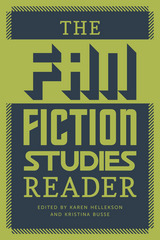 The Fan Fiction Studies Reader
Karen Hellekson and Kristina Busse
University of Iowa Press, 2014 An essential introduction to a rapidly growing field of study, The Fan Fiction Studies Reader gathers in one place the key foundational texts of the fan studies corpus, with a focus on fan fiction. Collected here are important texts by scholars whose groundbreaking work established the field and outlined some of its enduring questions. Editors Karen Hellekson and Kristina Busse provide cogent introductions that place each piece in its historical and intellectual context, mapping the historical development of fan studies and suggesting its future trajectories.
Organized into four thematic sections, the essays address fan-created works as literary artifacts; the relationship between fandom, identity, and feminism; fandom and affect; and the role of creativity and performance in fan activities. Considered as literary artifacts, fan works pose important questions about the nature of authorship, the meaning of “originality,” and modes of transmission. Sociologically, fan fiction is and long has been a mostly female enterprise, from the fanzines of the 1960s to online forums today, and this fact has shaped its themes and its standing among fans. The questions of how and why people become fans, and what the difference is between liking something and being a fan of it, have also drawn considerable scholarly attention, as has the question of how fans perform their fannish identities for diverse audiences.
Thanks to the overlap between fan studies and other disciplines related to popular and cultural studies—including social, digital, and transmedia studies—an increasing number of scholars are turning to fan studies to engage their students. Fan fiction is the most extensively explored aspect of fan works and fan engagement, and so studies of it can often serve as a basis for addressing other aspects of fandom. These classic essays introduce the field’s key questions and some of its major figures. Those new to the field or in search of context for their own research will find this reader an invaluable resource.
 Fan Phenomena: Audrey Hepburn
Edited by Jacqui Miller
Intellect Books, 2014 The satirical American newspaper the Onion recently ran a story with the headline “College-Aged Female Finds Unlikely Kindred Spirit In Audrey Hepburn,” lampooning modern American girls’ continued fascination with the star (along with their habits of hanging posters of Breakfast At Tiffany’s in their dorm rooms).
What gives this slight starlet such staying power? A talented actress, an icon of fashion, a loving mother, and an active humanitarian, Hepburn remains one of the world’s most beloved women even two decades after her death. Ranked as the third greatest screen star of all time by the American Film Institute, she possessed grace and beauty that still enchant us today. The winner of the 1953 Academy Award for her role as Princess Ann in Roman Holiday, she received further Academy Award nominations for Sabrina, Breakfast at Tiffany's, and Wait Until Dark. Her timeless, iconic style, both on and off screen, has long been admired, and she is seen by many as the epitome of grace, class, and elegance.
Fan Phenomena: Audrey Hepburn focuses on the transformative nature of Hepburn’s star persona, exploring her journey from ingénue to UNICEF ambassador. The book looks at her iconographic relationship with female culture and fashion and situates Breakfast at Tiffany’s alongside the works of Edith Wharton and Sex and the City.
 Fan Phenomena: Batman
Edited by Liam Burke
Intellect Books, 2013 From his debut in a six-page comic in 1939 and to his most recent portrayal by Christian Bale in the blockbuster The Dark Knight Rises, Batman is perhaps the world’s most popular superhero. The continued relevance of the caped crusader could be attributed to his complex character, his dual identity, or his commitment to revenge and justice. But, as the contributors to this collection argue, it is the fans who, with the patience of Alfred, the loyalty of Commissioner Gordon, and the unbridled enthusiasm of Robin, have kept Batman at the forefront of popular culture for more than seven decades.
Fan Phenomena: Batman explores the unlikely devotion to the Dark Knight, from his inauspicious beginnings on the comic book page to the cult television series of the 1960s and on to critically-acclaimed films and video games of today. Considering everything from convention cosplay to fan fiction that imagines the Joker as a romantic lead, the essays here acknowledge and celebrate fan responses that go far beyond the scope of the source material. And, the contributors contend, despite occasional dips in popularity, Batman’s sustained presence in popular culture for more than seventy years is thanks in no small part to his fans’ ardor.
Packed with revealing interviews from all corners of the fan spectrum—including Paul Levitz, who rose through the ranks of fan culture to become the president of DC Comics, and Michael Uslan, who has executive produced every Batman adaptation since Tim Burton’s blockbuster in 1989, as well as film reviewers, academics, movie buffs, comic store clerks, and costume-clad convention attendees—this book is sure to be a bestseller in Gotham City, as well as everywhere Bruce Wayne’s alter ego continues to intrigue and inspire.
 Fan Phenomena: Buffy the Vampire Slayer
Edited by Jennifer K. Stuller
Intellect Books, 2013 Few could have predicted the enduring affection inspired by Joss Whedon’s television series, Buffy the Vampire Slayer. With its origins in a script Whedon wrote for a 1992 feature film of the same name, the series far outpaced its source material, gathering a devoted audience that remains loyal to the show more than a decade after it left the airwaves. Heralded for its use of smart, funny, and emotionally resonant narrative; subversive and feminist characterizations; and unique approaches to television as an art form, the show quickly developed its own unique fan community, who built on existing narratives through fan fiction, media manipulation, and performance.
Fan Phenomena: Buffy the Vampire Slayer explores how this continued devotion is internalized, celebrated, and critiqued. Featuring interviews with culture makers, academics, and creators of participatory fandom, the essays here are a window into the more personal and communal aspects of the fan experience. Essays from critical thinkers and scholars address how Buffy inspires the creation of, among other enduring artifacts of fandom, fan fiction, crafting, performance, cosplay, and sing-alongs.
As an accessible yet vigorous examination of a beloved character and her world, Fan Phenomena: Buffy the Vampire Slayer provokes a larger conversation about the relationship between cult properties and fandom, and how their interplay permeates the cultural consciousness, in effect contributing to culture through new narrative, academia, language, and political activism.
 Fan Phenomena: Doctor Who
Edited by Paul Booth
Intellect Books, 2013 Since its premiere in November 1963, the classic British television program Doctor Who has been a cornerstone of popular culture for half a century. From the earliest “Exterminate!” to the recent “Allons-y!,” from the white-haired grandfather to the wide-grinned youth, the show has depicted the adventures of a time-traveling, dual-hearted, quick-witted, and multi-faced hero as he battles Daleks, Cybermen, Sontarans, and all manner of nasties. And, like its main character, who can regenerate his body and change his appearance, Doctor Who fandom has developed and changed significantly in the fifty years since its inception.
In this engaging and insightful collection, fans and scholars from around the globe explore fan fiction, fan videos, and fan knitting, as well as the creation of new languages. As multifaceted as the character himself, Doctor Who fans come in many forms, and this book investigates thoroughly the multitude of fandoms, fan works, and fan discussions about this always-surprising and energetic program.
Featuring full color images of fan work and discussions of both classic and New Who fandom, this book takes reader on a journey of discovery into one of the largest worldwide fan audiences that has ever existed. Thoughtful, insightful, and readable, this is one of only a few—and certainly one of the best—guides to Doctor Who fan culture and is certain to appeal to the show’s many ardent fans across the globe.
 Fan Phenomena: Game of Thrones
Edited by Kavita Mudan Finn
Intellect Books, 2017 Winter is coming. Every Sunday night, millions of fans gather around their televisions to take in the spectacle that is a new episode of Game of Thrones. Much is made of who will be gruesomely murdered each week on the hit show, though sometimes the question really is who won’t die a fiery death. The show, based on the Song of Ice and Fire series written by George R. R. Martin, is a truly global phenomenon.
With the seventh season of the HBO series in production, Game of Thrones has been nominated for multiple awards, its cast has been catapulted to celebrity, and references to it proliferate throughout popular culture. Often positioned as the grittier antithesis to J. R. R. Tolkien’s Lord of the Rings, Martin’s narrative focuses on the darker side of chivalry and heroism, stripping away these higher ideals to reveal the greed, amorality, and lust for power underpinning them.
Fan Phenomena: Game of Thrones is an exciting new addition to the Intellect series, bringing together academics and fans of Martin’s universe to consider not just the content of the books and HBO series, but fan responses to both. From trivia nights dedicated to minutiae to forums speculating on plot twists to academics trying to make sense of the bizarre climate of Westeros, everyone is talking about Game of Thrones. Edited by Kavita Mudan Finn, the book focuses on the communities created by the books and television series and how these communities envision themselves as consumers, critics, and even creators of fanworks in a wide variety of media, including fiction, art, fancasting, and cosplay.
 Fan Phenomena: Harry Potter
Edited by Valerie Estelle Frankel
Intellect Books, 2019 Nineteen years later . . .
Even as a new generation embraces the Harry Potter novels for the first time, J.K. Rowling’s wizarding world continues to expand. Rowling herself has created a five-film spinoff, a two-part stage play, and an immersive online universe. The fictional sport of Quidditch now has a real-world counterpart, complete with an international governing body and a major league. Fans have adapted the series into role-playing games, crossover parodies, musicals, films, dances, art, and real, published fiction. There are new mobile games, toys, theme parks—even a complete line of Harry Potter–inspired home décor from Pottery Barn.
More than ten years have passed since the end of the series, and Potterheads still can’t get enough. In this addition to Intellect’s Fan Phenomena series, enthusiasts and scholars explore the culture of the fandom, its evolution, and how it managed to turn a boy wizard into the international icon we see splashed across lunchboxes, printed on t-shirts, and enshrined in tattoos. Harry Potter: Fan Phenomena is a journey—yes, a magical one—through one of the largest fanbases of all time and their efforts to ensure that The Boy Who Lived would live forever.
 Fan Phenomena: James Bond
Edited by Claire Hines
Intellect Books, 2015 The mere hint recently that British actor Idris Elba might take up the mantle of James Bond in future installments of the film franchise was a major international news story—a testament to the enduring interest and appeal of Bond, a figure who has become a true global icon.
Fan Phenomena: James Bond explores the devoted fanbase that has helped make Bond what he is, offering a serious but wholly accessible take on the many different ways that fans have approached, appreciated, and appropriated Bond over the sixty years of his existence from the pages of Ian Fleming’s novels to the screen. Including analyses of Bond as a lifestyle icon, the Bond brand, Bond-inspired fan works, and the many versions of 007, the book reveals a fan culture that is vibrant, powerfully engaged, and richly aware of the history and complexity of the character of Bond and what he represents.
Whether your favorite Bond is Daniel Craig or Sean Connery (or even George Lazenby!), Fan Phenomena: James Bond is sure to go down as smooth as a shaken—not stirred—martini.
 Fan Phenomena: Jane Austen
Edited by Gabrielle Malcolm
Intellect Books, 2015 Nearly two hundred years after her death, Jane Austen is one of the most widely read and beloved English novelists of any era. Writing and publishing anonymously during her lifetime, the woman responsible for some of the most enduring characters (and couples) of modern romantic literature—including Elizabeth Bennett and Mr. Darcy, Emma Woodhouse and George Knightley—was credited only as “A Lady” on the title pages of her novels.
It was not until her nephew published a memoir of his “dear Aunt Jane” more than five decades after her death that she became widely known. From then on, her fame only grew, and fans and devotees, so-called Janeites, soon obsessed over and idolized her. Austen soon found an appreciative audience not only of readers but also of academics, whose scholarship legitimated and secured her place in the canon of Western literature. Today, Austen’s work is still assigned in courses, obsessed over by readers young and old, parodied and parroted, and adapted for films.
Were she alive today, Austen might not recognize some of the work her novels have inspired, such as a retelling of Sense and Sensibility featuring sea monsters, Internet fan fiction, or a twelve-foot statue of a wet-shirted Colin Firth as Mr. Darcy depicting a scene that doesn’t even appear in her novel. But like any great art that endures and excites long after it is made, Austen’s novels are inextricable from the culture they have created. Essential reading for Austen’s legions of admirers, Fan Phenomena: Jane Austen collects essays from writers and critics that consider the culture surrounding Austen’s novels.
 Fan Phenomena: Marilyn Monroe
Edited by Marcelline Block
Intellect Books, 2015 Born Norma Jeane Mortenson, Marilyn Monroe was an actress, singer, and sex symbol whose influence far outlasted her short life. Contributors to Fan Phenomena: Marilyn Monroe situate the platinum blonde starlet’s omnipresent cultural relevance within the zeitgeist of current popular culture and explore the influence she has had on numerous elements of it. Her aesthetics and images have been reappropriated, recreated, imitated, and emulated by such celebrities as Lindsay Lohan, Jayne Mansfield, Drew Barrymore, Anna Nicole Smith, and Madonna. The quintessential American sex symbol, Monroe was an influential style icon for a spectrum of designers, including Dolce and Gabbana, Betsey Johnson, and Nike, all of whom have named lines of clothing, shoes, or accessories after the star.
The essays here explore representations of Monroe in visual culture by looking at the ways she is reimagined in visual art while also considering how her posthumous appearance and image are appropriated in current advertisements. With an inside look at the universe of Marilyn Monroe impersonators and look-alike contests for both males and females, the book also explores numerous homages to Monroe in music, from the 1979 opera Marilyn by Lorenzo Ferrero to Nicki Minaj’s song “Marilyn Monroe.” The definitive guide to one of the most famous women who ever lived, the book will be essential reading for any scholar of twentieth-century American popular culture.
 Fan Phenomena: Mermaids
Edited by Matthieu Guitton
Intellect Books, 2016 Disney’s Princess Ariel would give anything to be “where the people are,” but little does she know there’s an ever-growing fan base of humans dying to be down in the ocean where she is. Movies like the Little Mermaid and Pirates of the Caribbean have sparked the interest of newer generations of mermaid fans, but our enchantment with these mythical creatures of the sea goes back for centuries. Fan Phenomena: Mermaids takes a deep dive into these fascinations and the cultural creations that mermaids inspire among fans of all ages.
Mermaids, and merfolk more generally, are everywhere you look. Merfolk devotees march in themed parades and practice mermaid-ing—swimming with a mermaid tail. There’s mermaid fiction and mermaid virtual reality; mermaid art and #mermaid trends. You may not know it, but transgenerational merfolk fan communities stretch around the world—from sea to shining sea. And their popularity is only growing.
In Fan Phenomena: Mermaids, Matthieu Guitton assembles a star-studded cast of scholars and popular culture insiders to decode the mermaid phenomenon. The book explores how merfolk have evolved in popular culture and what it is that grants them their privileged status among fantasy creatures. Illustrated throughout with fan photographs and stills from a plethora of films and TV shows, this new addition to the Fan Phenomena series promises to both fascinate and delight readers—earthbound and ocean-going alike.
 Fan Phenomena: Sherlock Holmes
Edited by Tom Ue and Jonathan Cranfield
Intellect Books, 2014 Few could have predicted the enduring fascination with the legendary detective Sherlock Holmes. From the stories of Sir Arthur Conan Doyle to the recent BBC series that has made a heartthrob out of Benedict Cumberbatch, the sleuth has been much a part of the British and global cultural legacy from the moment of his first appearance in 1887.
The contributors to this book discuss the ways in which various fan cultures have sprung up around the stories and how they have proved to be a strong cultural paradigm for the ways in which phenomena functions in the twentieth and twenty-first centuries. Essays explore the numerous adaptations, rewritings, rip-offs, role-playing, wiki and crowdsourced texts, virtual realities, and faux scholarship Sherlock Holmes has inspired. Though fervid fan behavior is often mischaracterized as a modern phenomenon, the historical roots of fan manifestations that have been largely forgotten are revived in this thrilling book.
Complete with interviews with writers who have famously brought the character of Holmes back to life, the collection benefits from the vast knowledge of its contributors, including academics who teach in the field, archivists, and a number of writers who have been involved in the enactment of Holmes stories on stage, screen, and radio. The release of Fan Phenomena: Sherlock Holmes coincides with Holmes’s 160th birthday, so it is no mystery that it will make a welcome addition to the burgeoning scholarship on this timeless detective.
 Fan Phenomena: Star Trek
Edited by Bruce E. Drushel
Intellect Books, 2013 From a decidedly inauspicious start as a low-rated television series in the 1960s that was cancelled after three seasons, Star Trek has grown to a multi-billion dollar industry of spin-off series, feature films, and merchandise. Fueling the ever-expanding franchise are some of the most rabid and loyal fans in the universe, known affectionately as Trekkies. Perhaps no other community so typifies fandom as the devoted aficionados of the Star Trek television series, motion pictures, novels, comic books, and conventions. Indeed, in many respects, Star Trek fans created modern fan culture and continue to push its frontiers with elaborate fan-generated video productions, electronic fan fiction collectives, and a proliferation of tribute sites in cyberspace.
In this anthology, a panel of rising and established popular culture scholars examines the phenomenon of Star Trek fan culture and its most compelling dimensions. The book explores such topics as the impact of the recent “rebooting” of the iconic franchise on its fan base; the complicated and often contentious relationship between Star Trek and its lesbian and gay fans; the adaptation of Star Trek to other venues, including live theatre, social media, and gaming; fan hyperreality, including parody and non-geek fandom; one iconic actor’s social agenda; and alternative fan reactions to the franchise’s villains. The resulting collection is both snapshot and moving picture of the practices and attitudes of a fan culture that is arguably the world’s best-known and most misunderstood.
Striking a balanced tone, the contributors are critical yet respectful, acknowledging the uniquely close and enduring relationship between fans and the franchise while approaching it with appropriate objectivity, distance, and scope. Accessible to a variety of audiences—from the newcomer to fan culture to those already well-read on the subject—this book will be heralded by fans as well as serious scholars.
 Fan Phenomena: Star Wars
Edited by Mika Elovaara
Intellect Books, 2013 In October 2012, the Walt Disney Company paid more than $4 billion to acquire Lucasfilms, the film and production company responsible for Howard the Duck. But Disney, despite its history and success with duck characters, wasn’t after Howard; in buying Lucasfilms, it also bought the rights to the Star Wars franchise. Soon after the purchase, Disney announced a new Star Wars film was in the works and would be released in 2015, nearly four decades after the first movie hit big screens around the world and changed popular culture forever.
The continued relevance of Star Wars owes much to the passion of its fans. For millions of people around the world, the films are more than diversions—they are a way of life. Through costumed role-playing, incessant quoting, Yoda-like grammatical inversions, and scholarly debates about the Force, fans keep the films alive in a variety of ways, and in so doing, add to the saga’s cultural relevance. The first book to address the films holistically and from a variety of cultural perspectives, Fan Phenomena: Star Wars explores numerous aspects of Star Wars fandom, from its characters to its philosophy. As one contributor notes, “the saga that George Lucas created affects our lives almost daily, whether we ourselves are fans of the saga or not.” Anyone who is struggling to forget Jar Jar Binks can certainly agree to that.
Academically informed but written for a general audience, this book will appeal to every fan and critic of the films. That is, all of us.
 Fan Phenomena: Supernatural
Edited by Lynn Zubernis and Katherine Larsen
Intellect Books, 2014 Supernatural premiered on September 13, 2005, on what was then called the WB Network. Creator Eric Kripke was inspired by Jack Kerouac’s On The Road, putting his heroes, brothers Sam and Dean Winchester, in a big black ’67 Impala and sending them in search of the urban legends that fascinated him. The series attracted a passionate fan base from the start and was described as a “cultural attractor” that tapped into the zeitgeist of the moment, reflecting global fears of terrorism with its themes of fighting unseen evil. The chemistry between the lead actors, Jared Padalecki and Jensen Ackles, contributed to the show’s initial success, and Supernatural found its niche when it combined demon-hunting adventures with a powerful relationship drama that explored the intense, complicated bond between the brothers. Supernatural is as much a story of familial ties, love, and loyalty as it is of “saving people, hunting things.”
Fan Phenomena: Supernatural explores the ongoing fascination and passion for a show that developed a relationship with fans through eight seasons and continues to have an impact on fan culture to the present day. Essays here explore the rich dynamic that has developed between fans and producers, actors, writers, directors, the show creator, and showrunners through online interactions on Twitter and Facebook, face-to-face exchanges at conventions, and representations of fandom within the show's meta-episodes. Contributors also explore gender and sexuality in the show and in fan art; the visual dynamics, cinematography, and symbolism in the episodes as well as the fan videos they inspire; and the culture of influence, learning, and teaching in the series.
 Fan Phenomena: The Big Lebowski
Edited by Zachary Ingle
Intellect Books, 2014 From box office flop to one of the most successful cult films of all time, The Big Lebowski has spawned a multicity festival, college-level courses, and its own religion. Fans of the Coen brothers' masterful dark comedy (collectively calling themselves “Achievers”—and proud we are of all of them) gather in movie theaters and bowling alleys across the county to quote along with the film, imbibe white russians, and admire the Dude’s rug (which really tied the room together).
Fan Phenomena: The Big Lebowski examines how this quirky movie evolved from its underwhelming debut to attract a mass following on par with that of The Rocky Horror Picture Show. Contributors take a close look at the film’s phenomenal impact on popular culture and language and examine the script’s rich philosophical implications, whether it is the nihilism within the film itself or the Dudeism that Jeff Bridges’s God-like character has bred (the “Church of the Latter-Day Dude” has attracted more than 70,000 official adherents through its online ordination process). Covering issues concerning gender and sexuality within the film, such as Maude’s feminist art and Jackie Treehorn’s Malibu garden party, the essays here also explore the gender divides the film has created in today’s society, such as male versus female fandom rivalry at festivals. These gatherings—part costume contest, part bowling tournament, part trivia contest, part fan meet-up—have, since their debut in Louisville, KY, in 2002, sprung up all around America and have even expanded globally, and the book takes an inside look at these events and includes interviews with Lebowski festival organizers and authors of other fan books and academic treatises.
In all, these essays are an essential companion for one of the greatest films ever made, in the parlance of our times.
 Fan Phenomena: The Hunger Games
Edited by Nicola Balkind
Intellect Books, 2014 An exciting dystopian fantasy thriller series, The Hunger Games began its life as a trilogy of books by Suzanne Collins, the first released in 2008. An immediate success, the first installment had a first printing of 50,000 hardcover copies, which quickly ballooned to 200,000. Spending one hundred consecutive weeks on the New York Times bestseller list, the book was put into development for release on the big screen. The first two films, starring Academy Award-winning actress Jennifer Lawrence, broke box office records, and the final installment is expected to follow suit.
Fan Phenomena: The Hunger Games charts the series’s success through the increasingly vocal online communities that drive the young adult book market. Essays here consider the fashion that the series has created and how the costumes, memorabilia, merchandising, and branding have become an ever bigger part of the fandom experience. Issues explored include debates over the movie stars’ race and size, which tap into greater issues within the fan community and popular culture in general and the current argument that has divided fans and critics: whether or not the third book, Mockingjay, should be split into two films.
With this scholarly compendium, navigating the postapocalyptic landscape of Panem will be as effortless as Katniss Everdeen’s archery and ensure that the odds will be forever in your favor.
 Fan Phenomena: The Rocky Horror Picture Show
Edited by Marisa C. Hayes
Intellect Books, 2015 When The Rocky Horror Picture Show was released in 1975, it initially received an indifferent reception in movie theaters, but it began to gain notoriety after it was embraced by audiences at midnight screenings in New York City and elsewhere. The movie tells of the misadventures of Brad and Janet, newly engaged, whose car breaks down in a rainstorm, forcing them to seek refuge in the castle of the bizarre and flamboyant Dr. Frank-N-Furter.
An homage to campy B-movies, sci-fi, and horror films, the movie was—and still is—more than the sum of its parts. Participatory and party-like, midnight showings attract moviegoers who dress as film characters, sing along with the catchy show tunes, and interact with the action on screen. In the four decades since its release, it has become a cultural phenomenon, not to mention one of the most commercially successful films of all time.
In Fan Phenomena: The Rocky Horror Picture Show, Marisa C. Hayes brings together a diverse group of writers who explore the film’s influence on the development of the pastiche tribute film, emerging queer activism of the 1970s, glam rock style, and the creative use of audience dialogue in recreating and interacting with the spoken and sung language of the film.
Spotlighting a cult phenomenon and its fans, many of who count the number of times they’ve seen the movie in the hundreds, this contribution to the Fan Phenomena series covers never-before-explored topics related to The Rocky Horror Picture Show. For anyone who has ever done the “Time Warp,” this will be essential reading.
|
|
